11 things to know before visiting Brussels

May 18, 2023 • 6 min read

All the tips and tricks you need for Brussels from a local in the know © Somyot Techapuwapat / Getty Images
It's been my honor and pleasure to call Brussels home for many years – the Belgian capital is a vibrant European hub that welcomes millions of visitors every year with open arms.
However, there are some insider tips about Belgian culture, and Brussels in particular, that will make your trip go a little more smoothly. Before you throw yourself gleefully into the chocolate and beer, let me share some of my favorite local advice for new visitors to Brussels.

1. There are two Brussels and yes, it's confusing
Brussels is a city but also a region. There’s the city of Brussels proper and then 18 other towns (such as Ixelles, Anderlecht, Schaerbeek, Saint-Gilles or Molenbeek) that form the Brussels Capital Region, a component of the Belgium federal state. Each has its own mayor and regulations. Locals will use the term “Brussels” indiscriminately when talking about either the city or the region – if you're at all confused, just ask them to clarify.
2. Double check your airport
Two airports bear the name of Brussels: Brussels Airport and Brussels South Charleroi. Brussels Airport is the older and larger one. Located in Zaventem, it’s about 20 minutes away from the city center by train. Brussels South is in Charleroi, about an hour's drive from Brussels, and it’s Belgium’s major hub for low-cost carriers.
It's pretty common for travelers to mix up the two airports, taking a train or a shuttle to the wrong one and missing their flight. When in doubt, check your booking: the IATA code for Brussels Airport is BRU and CRL is for Brussels South.
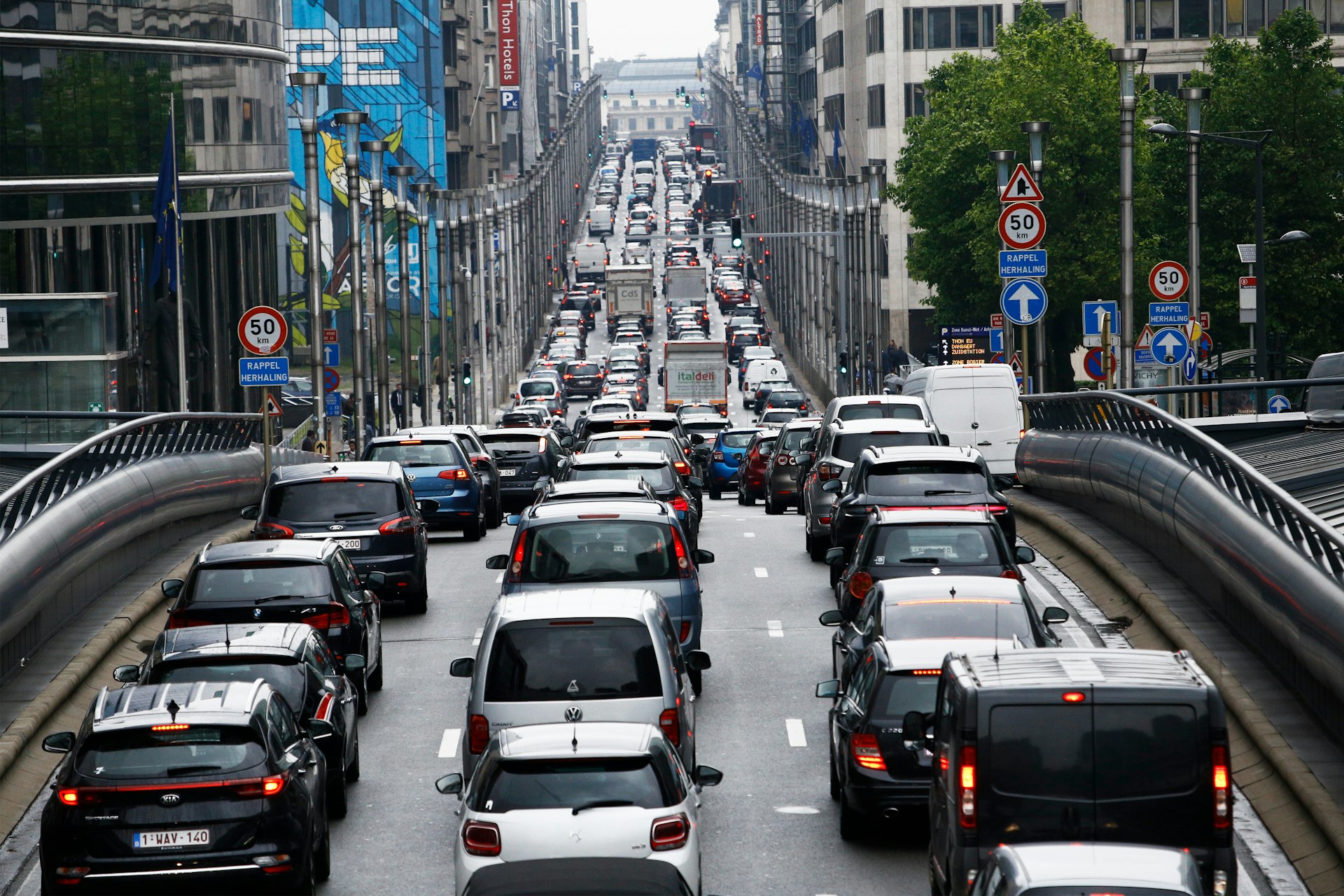
3. Ditch the car
Though the advent of remote working improved things a little, traffic is still a nightmare in Brussels – the city is in the top 15 of the most congested urban areas in Europe . Locals frequently bemoan the lack of parking spaces and the cost of garages (€22 for 1 day).
Brussels is also a Low Emission Zone, which means older vehicles are not allowed in. Getting a pass to enter the LEZ is mandatory and free. If you have to bring your vehicle, you can check if you can use it and register it on the LEZ Brussels Website .
However, the city center is very walkable and the public transport system is efficient. If you have to travel by car, a good compromise is to leave your car at a Park and Ride location . Parking is free and they are all next to a metro station – you’ll be at the Grand Place in no time!
4. Use the metro, trams and buses to explore the city
The STIB/MIVB runs almost all of the public transport in Brussels and it’s easy to get across the city, although the further from the center you go, the more difficult it gets. You’ll find ticket vending machines in the metro and main tram or bus stations. If you only need a single-ride ticket, contactless payment is available. Look for the gray validator as you enter a station or a vehicle, tap your card or your smartphone, and you’re on your way.
Most of the tourist attractions (except the Atomium ) are within a small area and can be explored on foot, so you won't really need a day pass unless you decide to visit different neighborhoods on the same day.
5. The train is a great option for getting around
One of Brussels’ best-hidden secrets is using the overground train to get around the city. With 35 train stations, it can often be faster than taking the tram or bus, especially to remote corners. However, you'll need to purchase a ticket before you board. Interestingly, the STIB/MIVB route planner doesn't account for this alternative very well, so it's best to rely on Google Maps instead.

6. Don’t plan a museum trip or fancy dinner on a Monday
Monday is a day off for many professionals (hairdressers, bakers...) and that's also the case for museums and restaurants (the latter may also be closed on Tuesdays). A few will be open but if your travel plans are focused on culture and/or gastronomy, it is better to be in Brussels during the second half of the week to have more options.
7. Everything is bilingual in Brussels
As the capital of Belgium, Brussels is officially bilingual. Everything, from road signs to advertisements, train announcements, street names and information boards is in French and Dutch, Belgium’s two main national languages (German is the third). It can be confusing if you’re not used to it. For instance, the station of Bruxelles-Midi (in French) is Brussel-Zuid (in Dutch).
My tip is: pick a language you’re more comfortable with and stick to it. Just bear in mind the two denominations for the most important places such as train stations – I’ve seen too many visitors missing their stops because of that!
On the plus side, Brussels is a multicultural city, and you should get by easily speaking English during your daily activities. It's unlikely anyone will get offended if you use it rather than one of the national languages.
8. Keep some change for the toilets
“ Madame / Monsieur Pipi ” as they are known locally, are a fixture of fast-food restaurants, stations, clubs, malls and even cinemas. They are the toilet attendants and hold the essential job of cleaning before and after you use the facilities.
You’ll find them chatting with customers, reading, knitting and doing crosswords in between rounds of cleaning. Their service is not paid for by the establishment, so you'll need to pay a small fee to use the bathroom. About 0.50 to €1 is customary, so keep some loose change in your wallet as they almost exclusively take cash. A smile and a thank you are also appreciated.
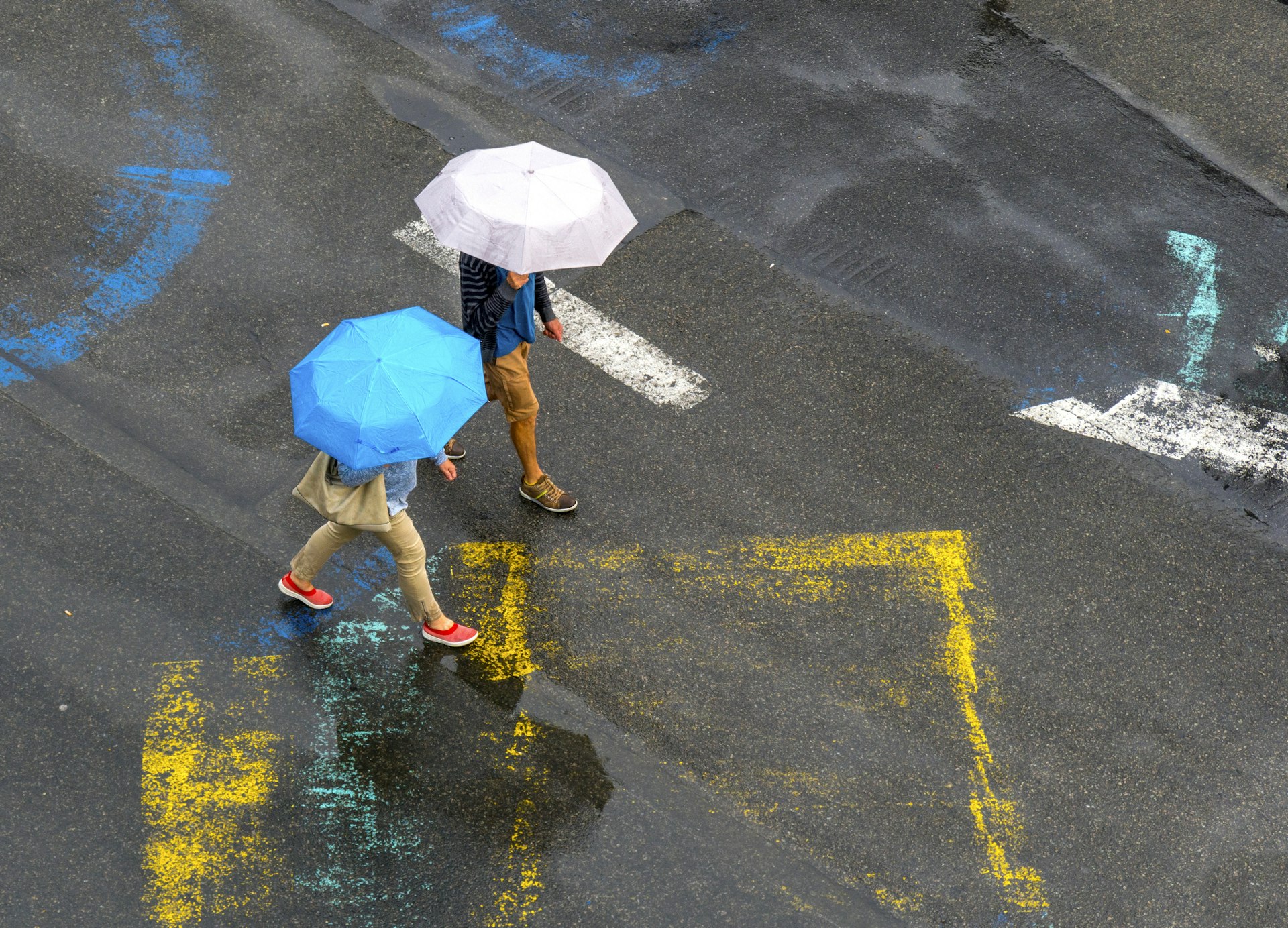
9. Always carry an umbrella or a raincoat
You’ve checked the forecast and it seems like the weather’s going to be fine during your stay in Brussels...don’t trust it. The weather here is particularly fickle and if Belgium is known for anything (apart from beer, chocolate and fries), it's rain, from an annoying little drizzle to a heavy downpour.
No Belgian would be caught dead without a retractable umbrella or raincoat in their bag “just in case”. Follow their lead and feel suitably smug when that unexpected shower begins to fall.
10. Kiss, handshake or hug?
Ah, that awkward moment! You’re in a foreign country and introductions are made. What do you do? In Brussels, where French-speaking culture is dominant, you’ll see many people kissing each other hello on the cheek, even if they’re not acquainted. COVID-19 changed that a bit but la bise is making a comeback.
Flemish culture, on the other hand, is more reserved and they'll simply shake hands or just say “Hi” to acknowledge your presence. Go with a handshake if you're at all unsure.

11. Babies, children and dogs are often welcome in bars
This is baffling to many foreigners. In the afternoon, especially at the weekend, it’s not uncommon to see whole families at a bar, with the adults enjoying their beers while the baby is asleep in a stroller and the older kids are sipping on their soft drinks and playing games.
Cafés, pubs and bars are places to socialize and for Belgians, children should not be excluded from the experience, especially since smoking is not allowed indoors. Dogs are also part of the family and are welcome too – they’ll probably get a bowl of water.
Explore related stories
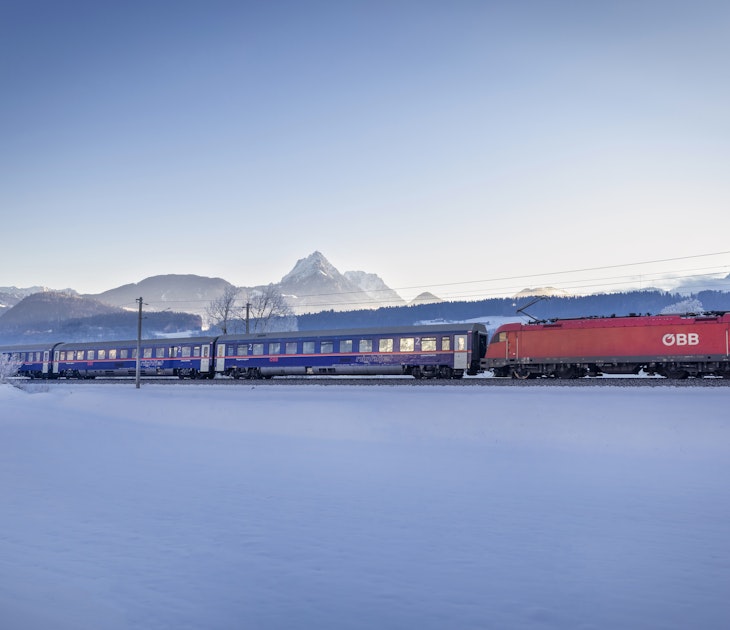
Tips & Advice
Dec 19, 2023 • 6 min read
The great European rail renaissance shows no signs of hitting the buffers anytime soon.

Dec 4, 2023 • 8 min read

Sep 19, 2023 • 4 min read
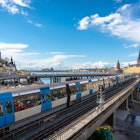
Dec 9, 2022 • 9 min read
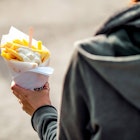
May 31, 2022 • 6 min read
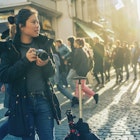
May 23, 2022 • 7 min read

May 21, 2022 • 6 min read
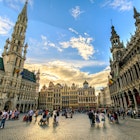
May 15, 2022 • 4 min read
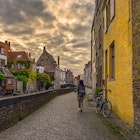
Dec 20, 2021 • 7 min read
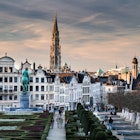
Aug 30, 2021 • 7 min read
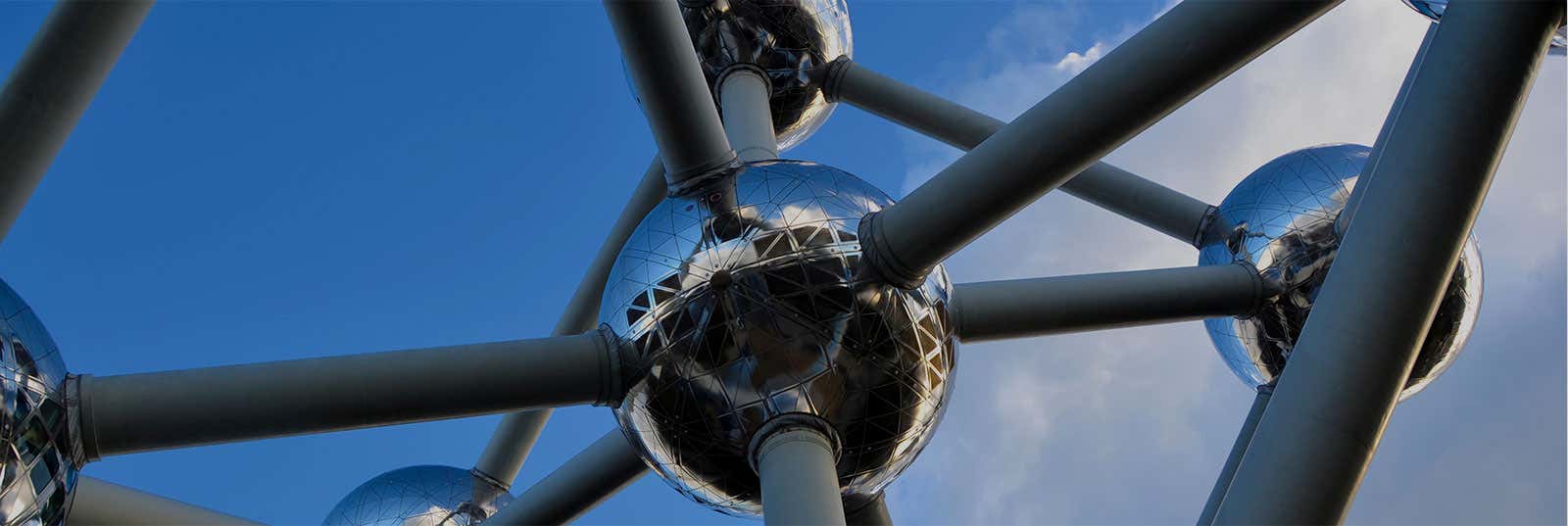
Planning to visit Brussels? We can help you! At introducingbrussels.com, you will find updated information about the top attractions , where to stay , or the best places to eat and drink .
Brussels Travel Guide
- General Information
- Top Attractions
- Getting to Brussels
- Where to Eat
- Where to Stay
- Two Day Itinerary
If you’re planning a trip to Brussels the first things you'll want to read about are the city’s top attractions, where to stay, and the general prices of hotels and restaurants, among other useful information . To make it as easy as possible for you, Civitatis offers you this travel guide to Brussels and the country's nearby cities so you make the most of your holidays.
Why visit Brussels?
You'd like to discover Brussels because you want to try the best chocolate and beer in the world because you’ve found a very cheap plane ticket, you’ve heard great things about the city, you're a fan of moules-frites (mussels and chips) or simply because you have always wanted to see the city’s most important symbol: The Manneken Piss .
Brussels is the capital of Belgium and is also considered the principal city of the European Union. It has all the characteristics of a metropolis, but at the same time is a small tranquil city. It has extremely modern neighborhoods that contrast with its renowned Art Deco buildings, and the streets of Brussels are packed with charm and history and make for a great getaway.
Any excuse is good to organize a holiday in Brussels , whether it be for 2 days, a week or longer. This city offers good food, interesting museums, and a selection of offbeat attractions, which will not leave you indifferent.
How to organize your trip?
Organizing your travel in advance is key to making the most of your holiday in Belgium's capital . We recommend reading first a little about the city’s history and reading our article on the most frequently asked questions about Brussels , such as travel advice, the languages spoken in Belgium, and its healthcare system. Followed by discovering Brussels’ top attractions and museums .
Book the hotel in advance!
If you still don't have accommodation booked, we recommend you visit our search engine where you’ll find all types of hotels, hostels, and apartments with the best rates guaranteed . You can get up to 75% off the price you would pay directly at the hotel.
- Hotels in Brussels – Book online for the best rates guaranteed.
top activities
Bruges and Ghent Day Trip On this day trip from Brussels, we'll visit the two great jewels of Belgium : Bruges and Ghent . Two must-see cities for any traveller.
Bruges Day Trip Known as “The Venice of the North”, Bruges is one of the most picturesque medieval towns in Europe. Explore it with an English-speaking guide.
Luxembourg and Dinant Full-Day Trip Set off on a day trip to Luxembourg, one of the less-known cities of Europe and on your way back to Brussels stopping at Les Ardennes and the city of Dinant.
Brussels Free Walking Tour Join us on a captivating journey through the vibrant streets of Brussels . Let's explore its rich history, stunning architecture, and unique cultural treasures .
Belgian Chocolate & Beer Tasting Tour Sweeten your visit to the Belgian capital on this chocolate & beer tour of Brussels, which includes a tasting of 3 cocoa products & 3 beverages.
Belgian Beer Tour Embark on a fascinating tour of Brussels , where we'll delve into the captivating world of beer , exploring the art of brewing that makes Belgian beer so great!
Luxembourg Day Trip Discover the contrasts between the abundant history and modern business centre with this Luxembourg Day Trip. Visit the vibrant city with 170 nationalities.
Brussels Card The Brussels Card offers free admission to 49 museums in Brussels, as well as discounts for numerous guided tours, attractions, restaurants, stores and bars!
Day Trip to Antwerp and Ghent On this day trip from Brussels you'll get to see two of the most beautiful cities in the Belgian region of Flanders: Antwerp and Ghent .
Belgian Chocolate Workshop at Choco Story Become a master chef for a day & learn how to make Belgian chocolates with the help of a professional chocolate maker with this workshop in Brussels.
Ghent Day Trip Explore the UNESCO World Heritage city of Ghent & its historic center on this day trip from Brussels accompanied by an English-speaking guide.
Amsterdam Day Trip Travel from to Amsterdam on a 12-hour day trip and explore the city’s canals and tilted houses accompanied by an expert English-speaking guide.
Choco Story Brussels Learn about the history of cocoa at Choco Story, the Chocolate Museum in Brussels. The ticket also includes a tasting of the museum's irresistible products.
Alternative Brussels Free Walking Tour Forget about chocolate, waffles and beer and set off on an alternative tour of Brussels where you will discover what makes the capital of Belgium truly unique .
Art Nouveau Free Guided Tour At the end of the 19th century , a movement emerged that perfectly combined these materials. Be captivated by modernism in Brussels with Art Nouveau Guided Tour .
Brussels Hop On Hop Off Bus The Brussels Hop On Hop Off Bus is the best option for getting to know the main sights around the Belgian capital in a comfortable and entertaining way.
Private City Tour of Brussels Book our private guided tour of Brussels and discover the best of the capital of the European Union with an expert English-speaking guide . You'll love it!
Antwerp Day Trip Enjoy a trip from Brussels to Antwerp: The Diamond Capital of the World, and join a guided tour of this trendy medieval city and hometown of Peter Paul Rubens.
Hard Rock Cafe Lunch or Dinner Enjoy American-style music and delicious food with the Hard Rock Cafe Lunch or Dinner. Have fun at the restaurant in the Belgian capital at the Grand Place.
Mini-Europe Ticket Discover fabulous miniatures of the most famous monuments in Europe when you buy this ticket for the amazing Mini-Europe Park in Brussels .
Brussels Open-Top Bus Tour Discover Brussels' most iconic landmarks and areas on this panoramic tour of the city aboard a comfortable open-top bus !
On this excursion to Keukenhof and Delft , we'll travel to the Netherlands to enjoy the colorful Dutch spring and see sprawling fields of beautiful tulips.
Train World Ticket Do you want to discover the history of the oldest train network in Europe ? Book your ticket for the Train World museum and travel back in time.
Brussels Comic Tour Belgium is spelled with a b for "bandé dessinée ", the French word for Ninth Art . In this comic tour of Brussels we'll see various urban vignettes .
Private Tour: Ghent, Bruges, Antwerp Surrender to the charm of Belgium's three most beautiful cities: Ghent, Bruges and Antwerp on a private tour from Brussels with an English-speaking guide.
Brussels Chocolate, Beer and French Fries Tour Experience an authentic gourmet experience on our chocolate, beer and french fries tour in Brussels. Enjoy some of the best treats Belgium has to offer.
Flanders Fields Tour Join us and explore one of the most important scenes from the First World War in Belgium on this tour to Flanders Fields in Brussels .
Free Tour of the European Quarter In this free tour of the European Quarter , we'll visit one of the most elegant areas in Brussels . Join us to discover the contrasts in the Belgian capital.
Art Nouveau Pass With the Art Nouveau Pass , you can visit 3 Art Nouveau buildings in Brussels - the undisputed capital of Art Nouveau architecture.
Brussels Christmas Bus Tour Immerse yourself in the magic of the holiday season on this Christmas Bus Tour through Brussels , turning the Belgian capital into a winter wonderland!
Historical Brussels: The Origins of the City Quest On this Historical Brussels: The Origins of the City Adventure Quest , you'll solve riddles and follow clues while touring the city. Discover Brussels' secrets!
Introducingbeussels.com has been created for travelers like you, by travelers like you, based on personal experiences. We'll try to help you to plan your trip as comprehensively as possible, saving money and getting to know some of the little tricks to get the most out of your time.
The information contained in this guide has been updated in December 2022 . If you see any errors or anything which should be changed, we would be happy to hear from you .

- South Africa
- Afghanistan
- North Korea
- Adventure + Outdoors
- Amusement Parks
- Backpacking Trips
- Boating + Cruises
- Budget Travel
- Bus + Train Travel
- Coasts + Islands
- Country Trips
- Fall Vacations
- Family Vacations
- Green Travel
- Heritage + History
- Honeymoons + Romance
- Inspiration + Guide
- Landmarks + Attractions
- LGBT Travel
- Markets + Bazaars
- National Parks + Reserves
- Nature + Wildlife
- Parks + Gardens
- Pets + Animals
- Photography
- Airlines + Airports
- Budgeting + Currency
- Business Travel
- Celebrity Travel
- Customs + Immigration
- Deals + Rewards
- Family Travel
- Hotels + Resorts
- Luggage + Packing Tips
- Offbeat News
- Photography Tips
- Responsible Travel
- Solo Travel
- Tech + Gear
- Travel Etiquette
- Travel Warnings
- Bars + Clubs
- Celebrity Chefs
- Restaurants + Cafés
- Wine + Vineyards
- Beach Hotels
- Boutique Hotels
- Hotel Openings
- Hotel Reviews
- Luxury Hotels
- Mountain + Ski Resorts
- Spa Resorts
- Vacation Rentals
- Asia Cruises
- European Cruises
- Festivals + Events
- Museums + Galleries
- Style + Design
- Travel’s Best
- Hotel with Agoda.com
- Hotel with Booking.com

Guide to Shenzhen nightlife — Top 5 things & what to…

Ladakh trip cost per person from Delhi — How much does…
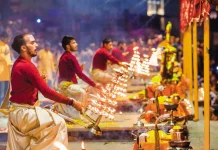
India travel tips — 25+ what & things to know before…

Must eat in Hong Kong — 7+ must eat & must…
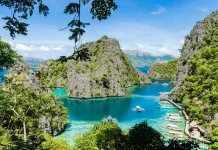
Coron itinerary 5 days — What to do & how to…

India trip tips — 9+ things to know before going to…

All about tips in Nepal — How much to tip in…

Cambodia travel tips — 15+ what to know & things to…

When is the best time to visit Kyoto? — The best,…

Must eat in Georgetown — 10+ famous, must-eat & best street…

Must eat in Melaka — 10+ famous Malacca street food &…

Hong Kong Soya sauce Chicken Rice and Noodles — The first…

Top hotels in Siem Reap — 8+ best places to stay…

Top hotels in shanghai — 15+ best hotels in Shanghai

Top hotels in Malacca — 10+ good & best hotels in…

Top places to stay in Bali — Top 10 best areas…

10 must-know things for your best first time European river cruise

Top 3 best luxury cruises in Halong Bay, Vietnam

Cherry blossom festival Korea 2024 — Top 5 cherry blossom festivals…

Ghibli museum blog — The fullest Ghibli museum guide for first-timers

Kyoto festival — Top 10 best events & most famous festivals…

National Palace Museum Taipei blog — What to see in National…

Japanese waterfall — Top 10 most beautiful waterfalls in Japan in…

19+ most beautiful towns in Europe every tourist need to visit…

Georgia travel photos — 20+ captivating photos show Georgia is heaven…

Explore Damnoen Floating Market — The oldest floating market of Thailand

Visiting Fenghuang Ancient Town — One of the most charming ancient…

Mekong Delta travel blog — Beyond rivers of Southwestern Vietnam

14 reasons why you should travel when you are young

Shigaraki Tanuki – An animal symbol of good luck in Japan

Living in the charms of cave houses in Andalucia, Southern Spain

20+ jaw-dropping tiny homes around the world
Brussels travel blog — the fullest brussels travel guide for a great trip to brussels on a budget for the first-timers.
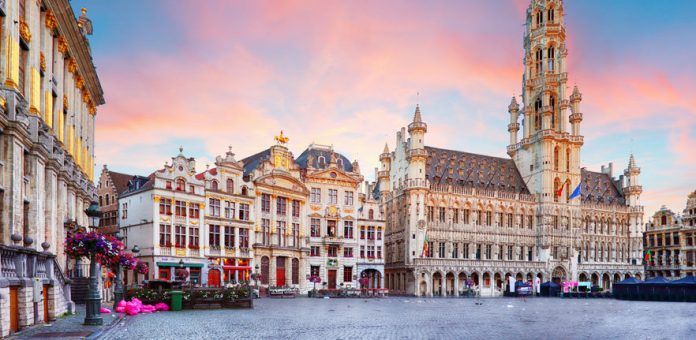
Brussels (or Bruxelles) is a famous city because it is not only the capital of Belgium but also of the European Union, and the headquarters of the NATO military bloc. It sounds a bit “academic” but actually traveling to Brussels you will be even more surprising because of the cultural and linguistic diversity (a majority of Belgians speak French or German) and a lot of other “specialties” are only available in this beautiful city. So, is Brussels worth visiting? Let’s discover one of the most visited destinations in Europe through our Brussels travel blog (Brussels blog, Bruxelles blog) with the fullest Brussels travel guide (Brussels city guide, Brussels visitors guide) for a wonderful trip to Brussels on a budget for the first time from how to get there, best time to visit, and top things to do… to find out the answer!
- Where to go in Brussels? — Top 12 must & best places to visit in Brussels
- Bruges 1 day itinerary — How to visit Bruges in a day & What to do in bruges in one day trip?
- What to eat in Belgium? — 23+ most popular, must try & best food in Belgium
- What to buy in Belgium? — 15+ best souvenirs from Belgium & best things to buy in Belgium
- Dancing House Hotel Prague review — Once experience the masterpiece of architecture of Prague
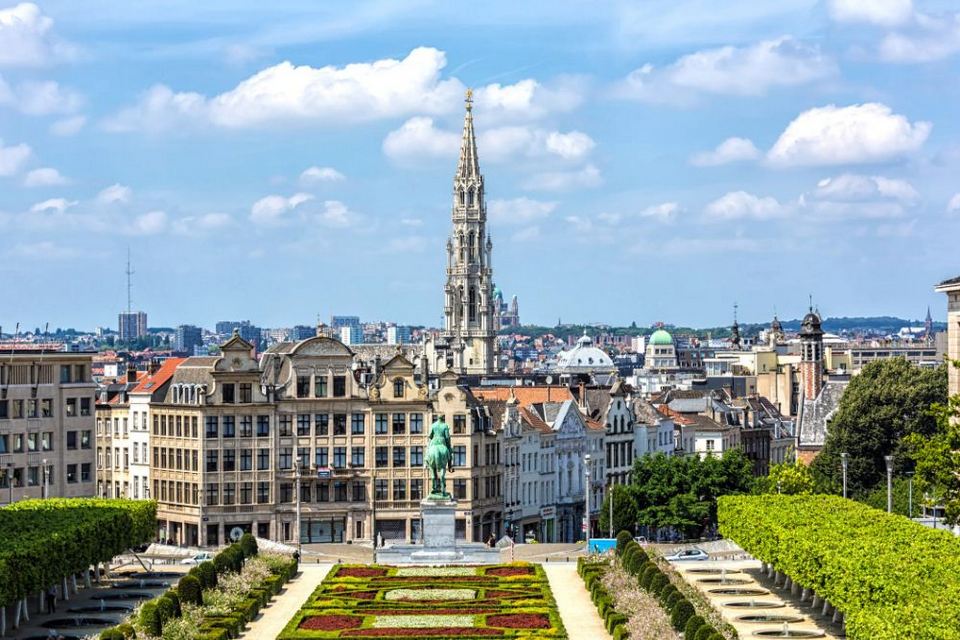
Located between France and the Netherlands, I arrived in Brussels only 3 hours by train from Paris. With 1 to 2 days for this city in Europe travel itinerary, you should consider visit the most famous attractions in Brussels below.

Brussels visitor guide: When is the best time to visit?
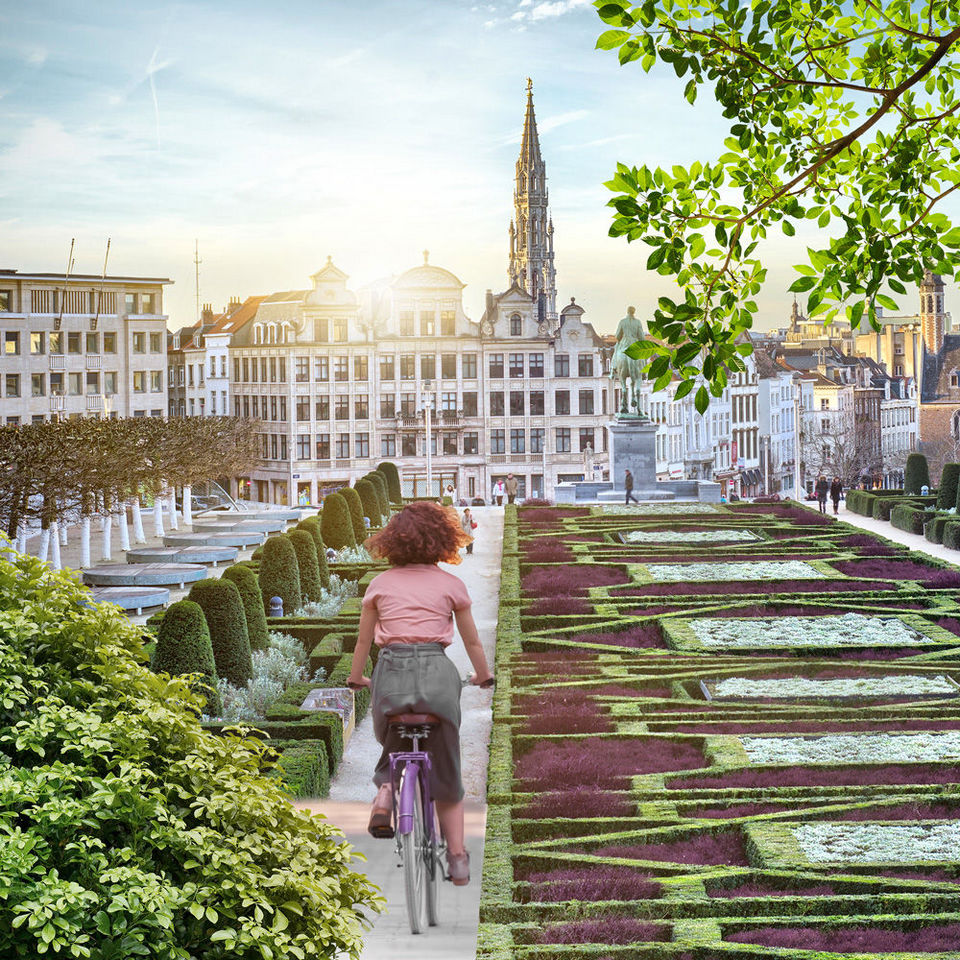
Like Amsterdam, the best time to travel to Brussels is in Spring (April or May) and Summer (September or October). At this time the weather will not too cold. However, July is the hottest time of the year and is the peak tourist season. Or you can plan to visit Brussels from August 16-19, every 2 years in even-numbered years, there will be a flower carpet festival right at the Grand Place, extremely spectacular!
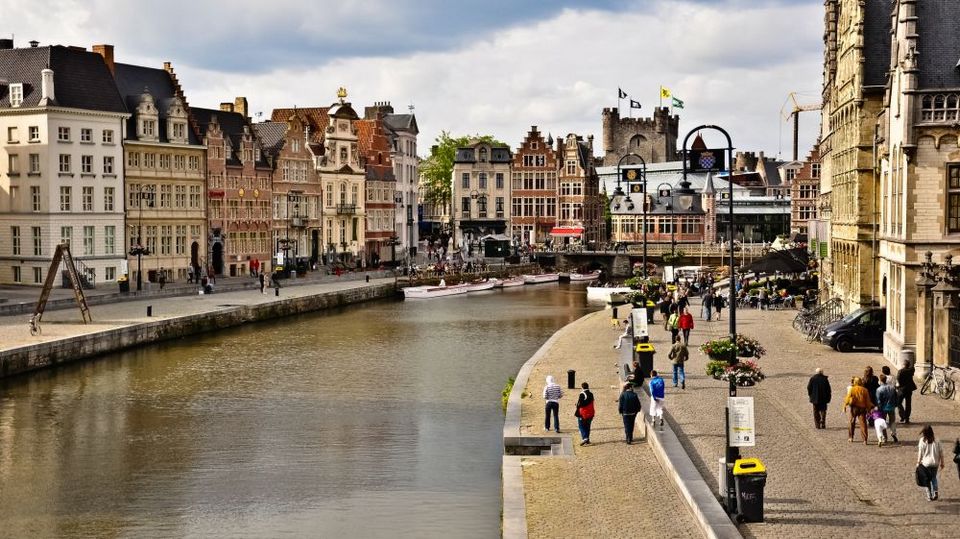
If you can tolerate the cold under 0 degrees C, want to experience the feeling of watching snow and Christmas in Belgium, you can travel to Brussels in the winter.
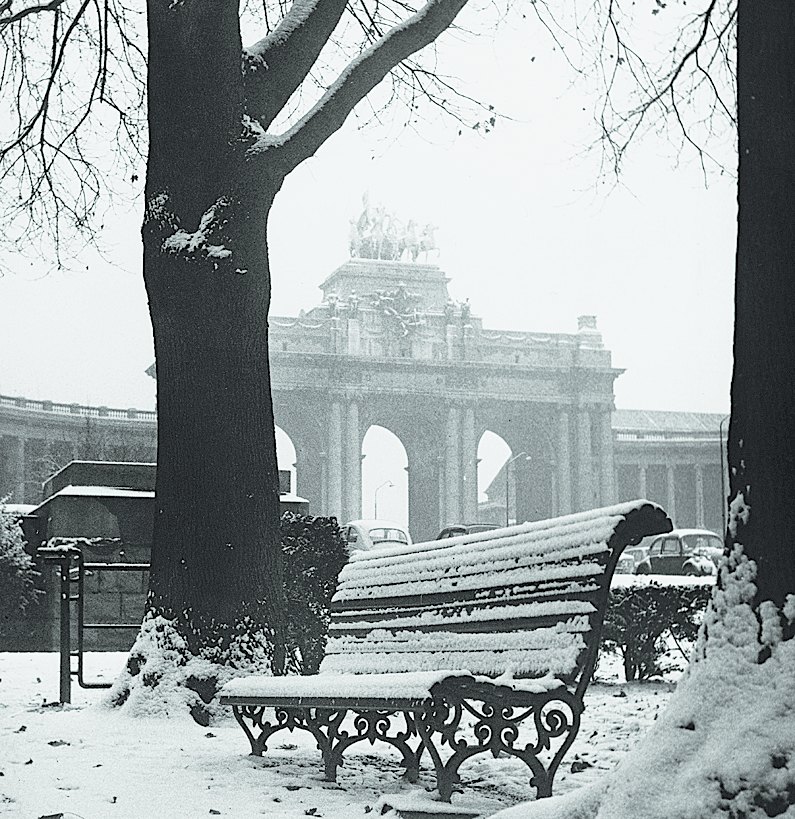
Brussels travel blog: Best places to visit and top things to do in Brussels
Grand-place de bruxelles.
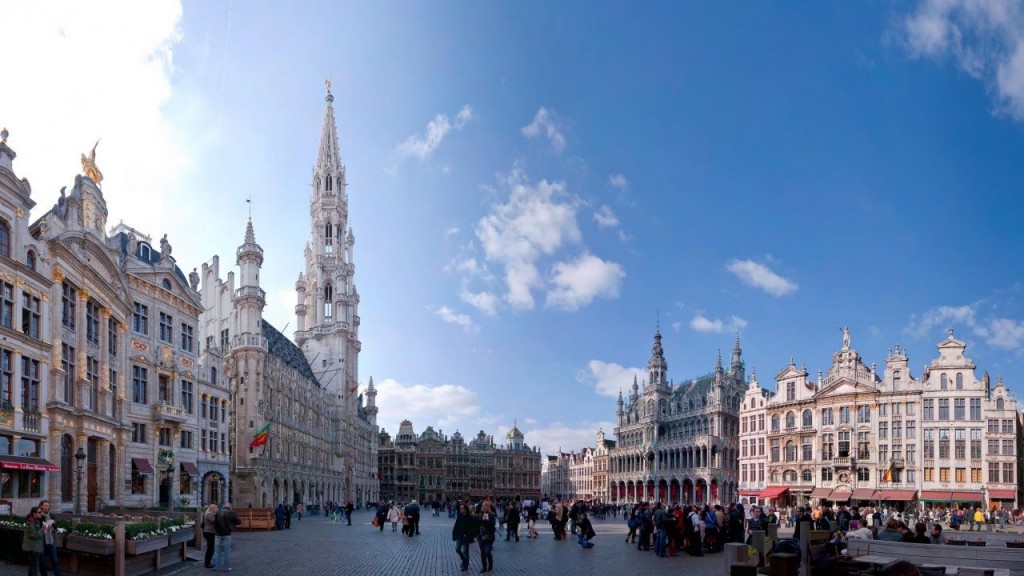
Just 5 minutes walk from the central station, La Grand Place is known as a cultural center of Brussels with lots of shops, restaurants, cafes or museums, recognized by UNESCO as a cultural heritage world in 1998. This is the place where meetings of indigenous people took place for centuries. It is easy to understand that Grand-Place de Bruxelles is like the old town in Hanoi (Hanoi’s Old Quarter) and the names of the streets here are similar to Hanoi’s 36 streets.
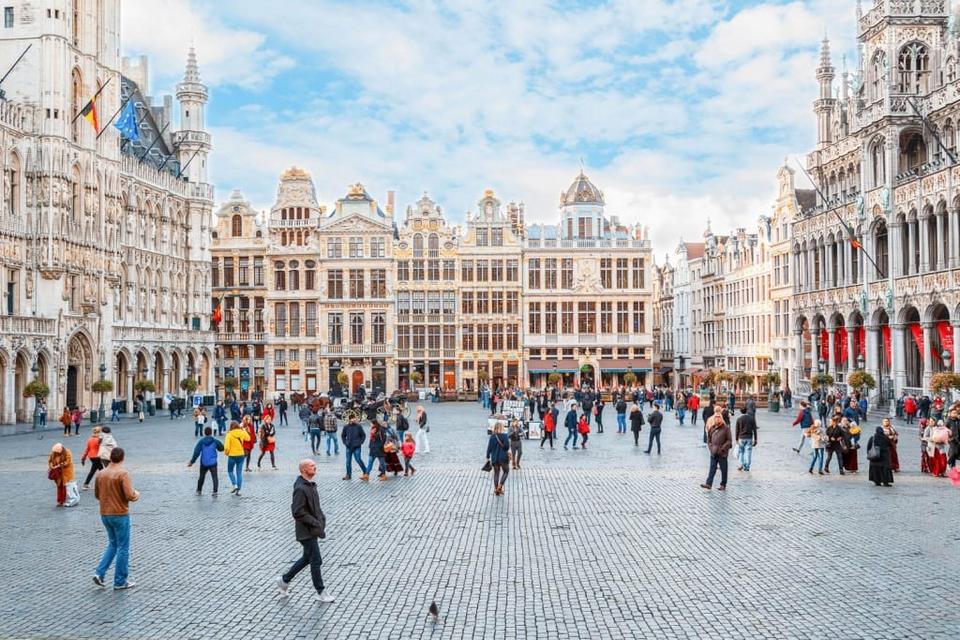
First when you entering the square will see City Hall (Hôtel de Ville in French), the highest tower and also the most famous place here. From City Hall you mark the landmark to explore other buildings in this area. If Hanoi has 36 busy crowded streets, Grand Place also has 35 neighborhoods, buildings which represent cultures in different periods, can be said here with very rustic names as in Vietnam, such as avocado street, cheese street, coal street, herring street, .. they all have a common feature is the splendid and magnificence that create a huge square area of cultural and commercial centers that never seen before … These buildings were built centuries ago and were restored and repaired after being destroyed by the French King Louis XIV in the 17th century attack.
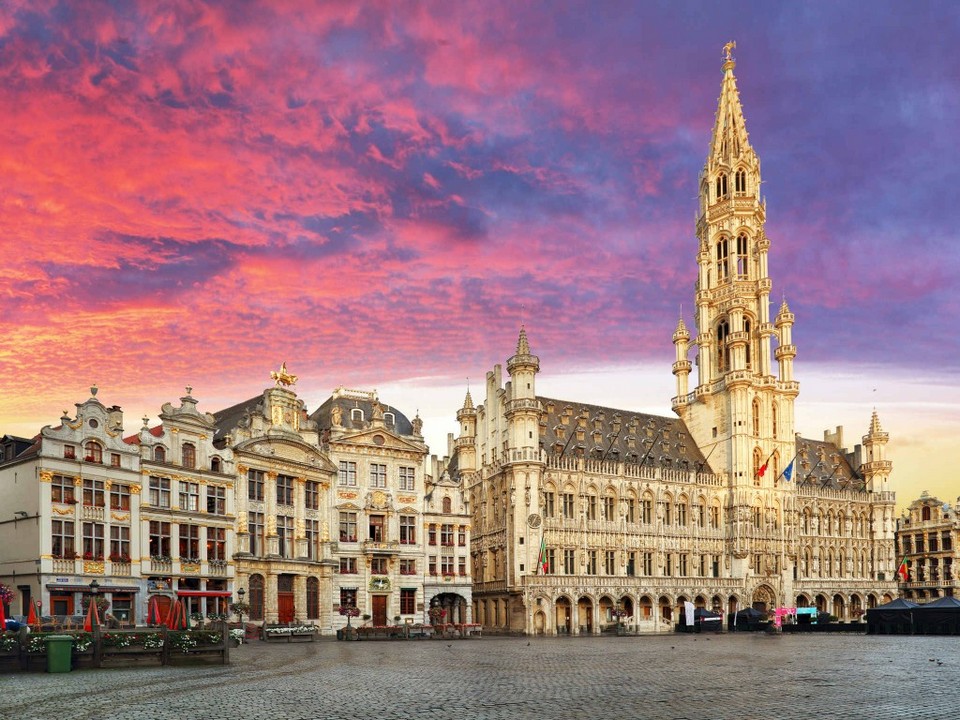
Wandering around the square, watching each building you will see each building has its own unique feature. They were built in Gothic architecture style with pointed arches on top and evenly-lined doorways, looking very eye-catching. In addition to City Hall, one of Grand Place’s most popular areas is King’s House (Maison du Roi in French), the remains are Guild Houses. King’s House was formerly a 13th-century bakery, later replaced by stone buildings in the 15th century and restored to 18th century Gothic architecture. It now becomes Museum Musée de la Ville is known for costume exhibitions for “Peeing Boy” – Manneken-Pis (will be discussed below). One note is that if you get foot fatigue after walk, don’t sit on the paved stone roads at Grand Place.
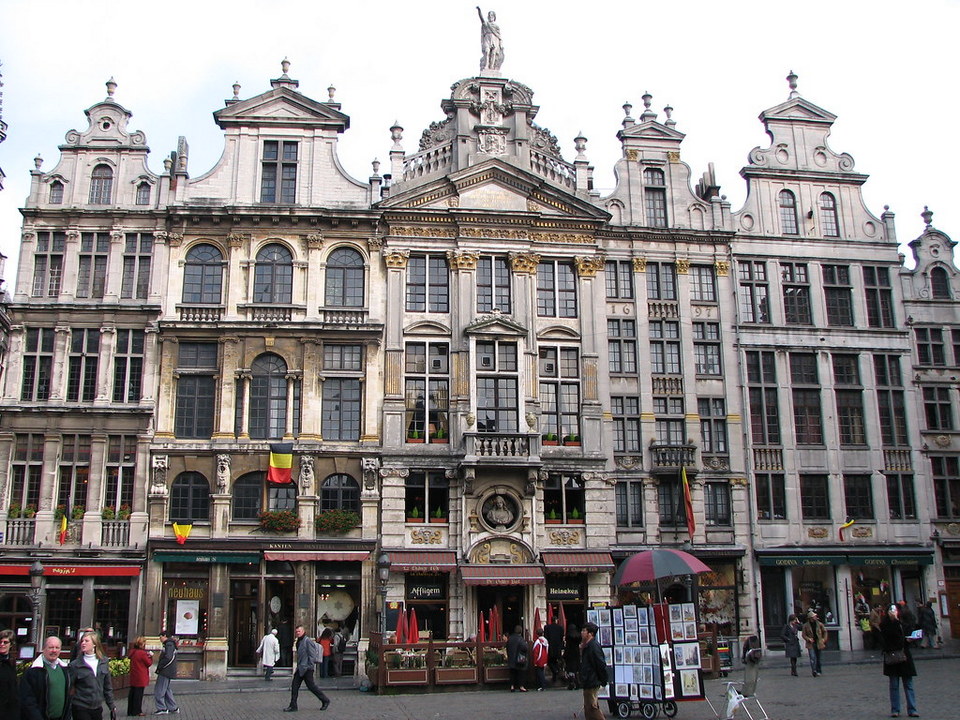
Address: 1000 Brussels, Belgium Phone: +32 2 513 89 40
Museums in Brussels
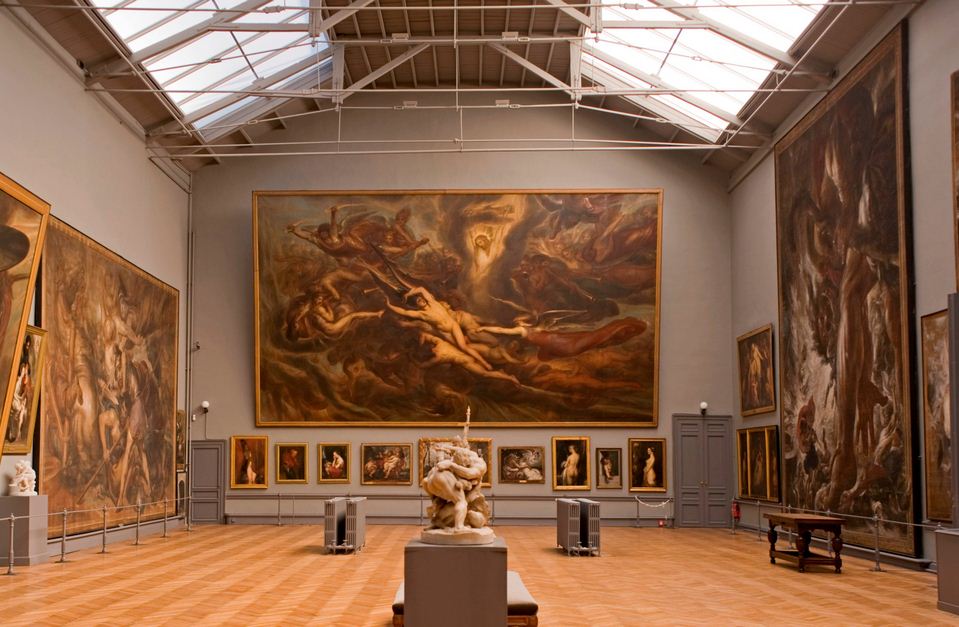
Like many other cities in Europe, Brussels is also a paradise for those who love museums and art. The museum in Belgium has many unique features such as a museum of Chocolate, a museum of Manneken Pis, a museum of musical instruments, etc. On Wednesdays and the first Sunday of the months there will be some museums are open free for sightseeing, you can see the list here .
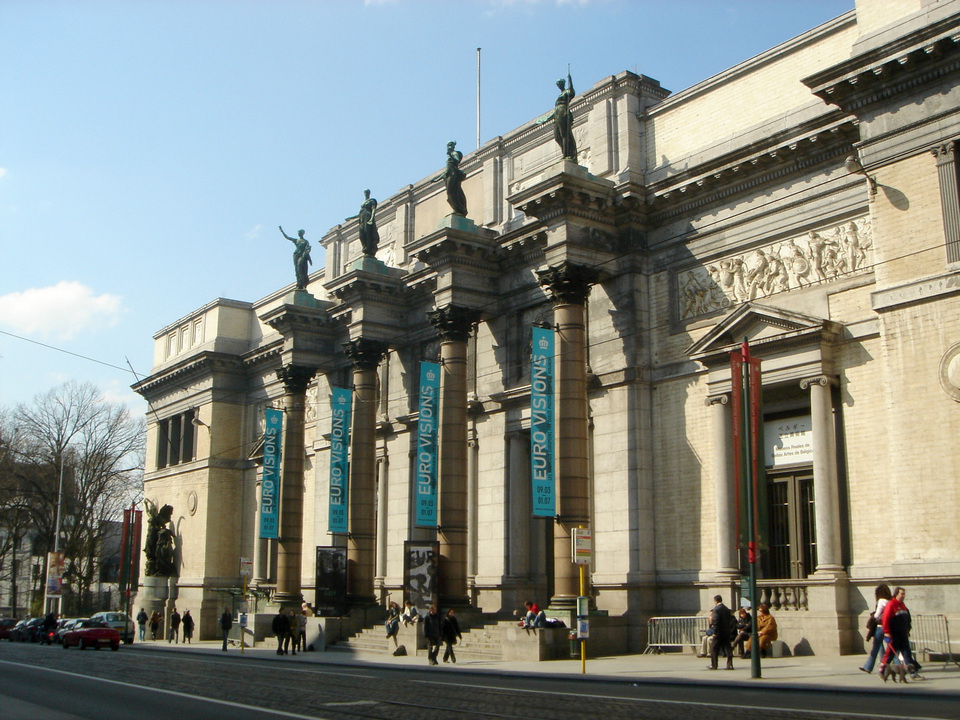
Some museums you should visit:
Musée Oldmasters Museum
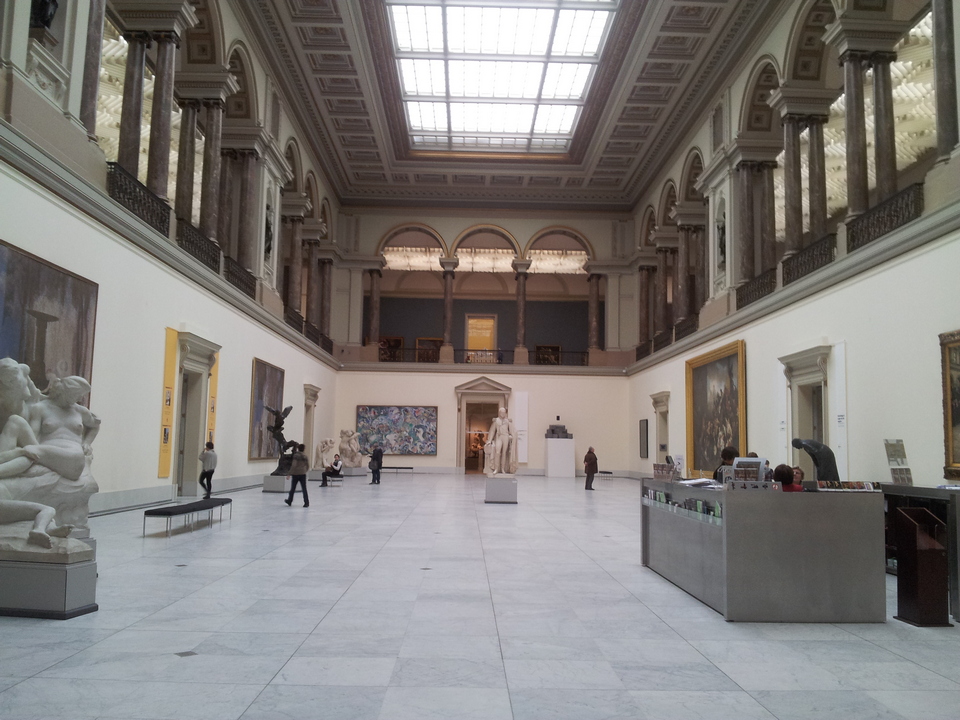
Admission: €8, open for free on the first Wednesday of each month after 1pm, the museum exhibits many high-value artworks representing the artistic stages of the Flemish Baroque, Dutch Golden Age.

Address: Rue de la Régence 3, 1000 Bruxelles, Belgium Hours: 10AM–5PM / Saturday & Sunday: 11AM–6PM / Monday: Closed Founded: 1801 Phone: +32 2 508 32 11 Url: https://www.fine-arts-museum.be/en/museums/musee-oldmasters-museum
Musical Instruments Museum – MIM
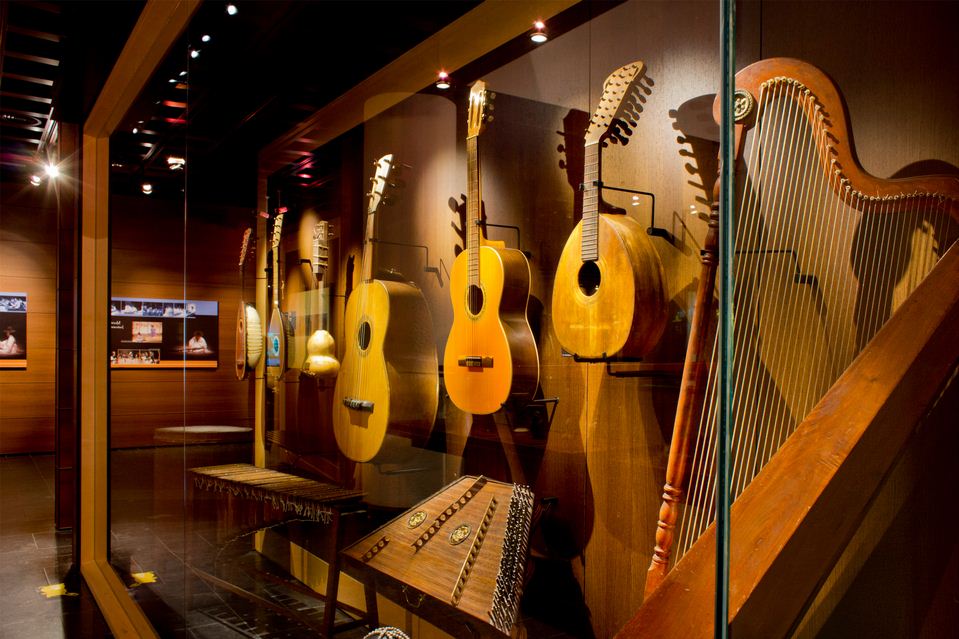
Ticket price of €8, open for free on the first Wednesday each month after 1pm, with thousands of different music and instrumental products. The Musical Museum is a collection area in four floors of display. You can spend a few hours to visit but want to know a little bit will probably take a few days.
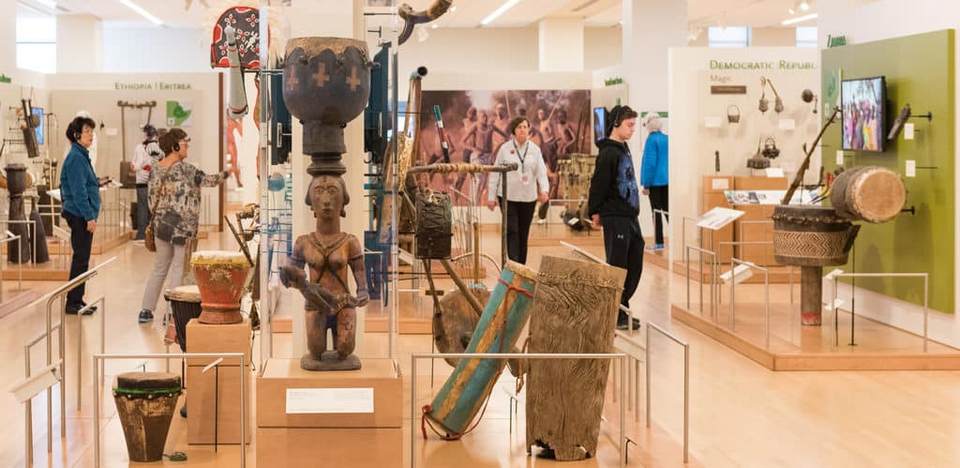
Address: Rue Montagne de la Cour 2, 1000 Bruxelles, Belgium Established: 1877 Hours: 9:30AM–5PM / Saturday & Sunday: 10AM–5PM / Monday: Closed Url: http://www.mim.be/en
Magritte Museum
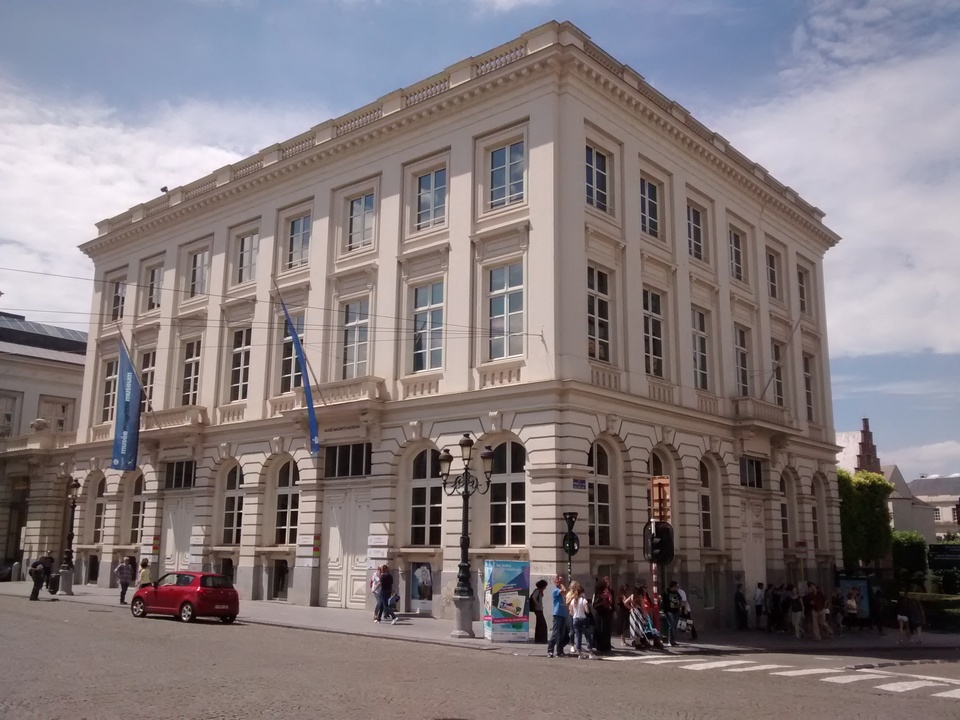
Rene Magritte is one of Belgium’s most talented artists with two famous works, The Pilgrim and The Son of Man. The Rene Magritte Museum is located in northern Brussels, far from the city center a little bit. The museum shows us an overview of person and career as well as the paintings of this surrealist artist. You can get here by taking the Metro Line 6 – Pannenhuis, €8 for admission.
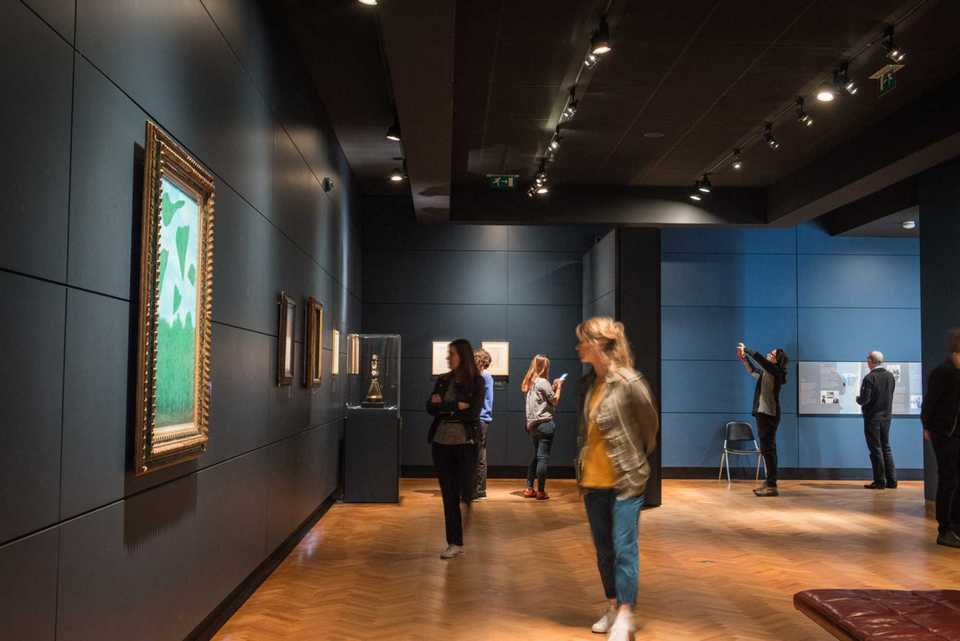
Address: Rue de la Régence 3, 1000 Bruxelles, Belgium Hours: 10AM–5PM / Saturday & Sunday: 11AM–6PM Founded: 2009 Phone: +32 2 508 32 11 Url: https://www.musee-magritte-museum.be/en
Choco-Story Museum (Museum of Cocoa and Chocolate)
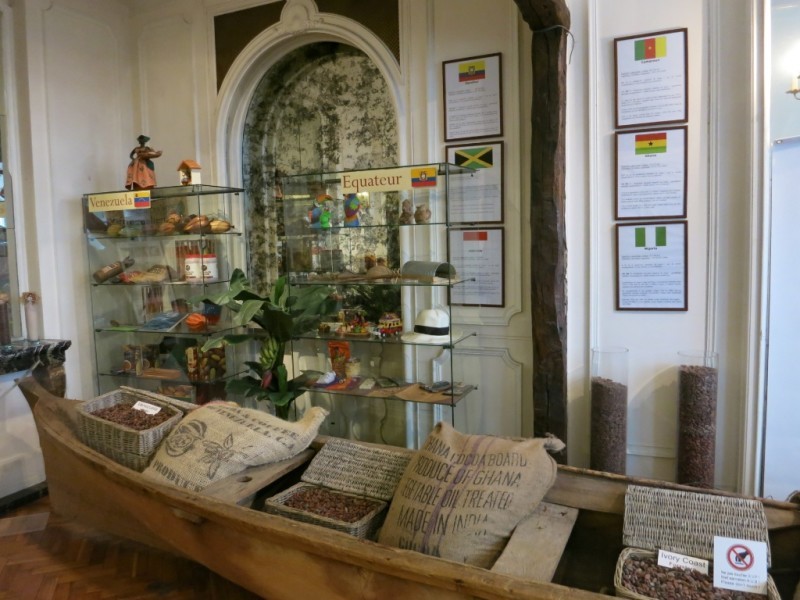
Belgium is very famous for its chocolate, it is unclear whether Belgium is home to chocolate or not because this is still controversial, but the delicious taste and fragant of Belgian chocolate is unmistakable with famous brands such as Godiva, Guylian, and Leonidas. Here you can see, learn about the history of Chocolate, watch the workers make Chocolate, how they mix, put ingredients to the mold, .. Choco-story Museum is located at Rue de la Tête d’Or / Guldenhoofdstraat 9-11 with a few minutes’ walk from Grand Place, the entrance fee is €6.
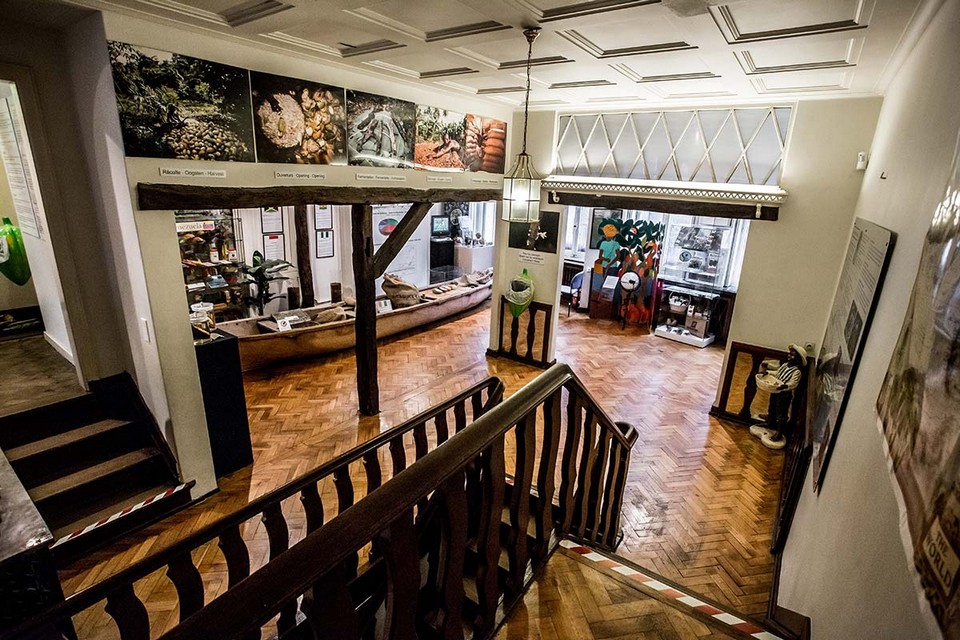
Address: Rue de l’Etuve 41, 1000 Bruxelles, Belgium Hours: 10AM–5PM Phone: +32 2 514 20 48 Url: http://choco-story-brussels.be/
MOOF – Museum Of Original Figurines
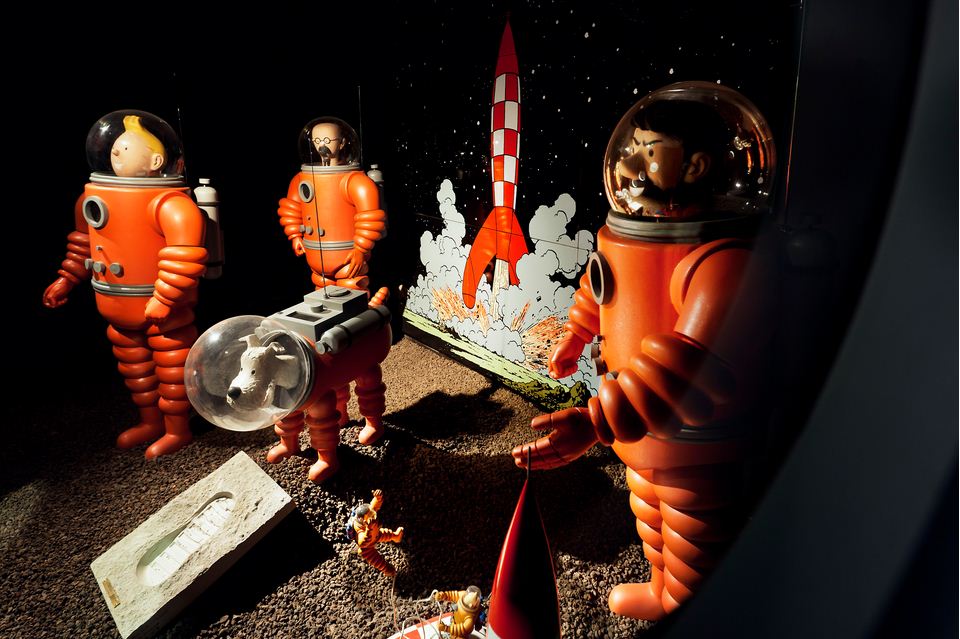
Belgium is not only known for its best Chocolate, it is also home to comics and famous cartoon characters like Smurf, Tin-tin, Lucky Luke… Here you will see a lot of lovely figurines about adorable cartoon characters, information about the history and development of animated films. The museum is located near the central station, passing Galerie Horta, the entrance fee is 10 €. And another comic book museum, Brussels Comic Book Museum, is a little further away from the center.

Address: Galerie Horta (Gare centrale, Grasmarkt Straat 116, 1000 Brussel, Belgium Hours: 10AM–6PM / Monday: Closed Phone: +32 2 207 79 92 Url: https://www.moofmuseum.be/
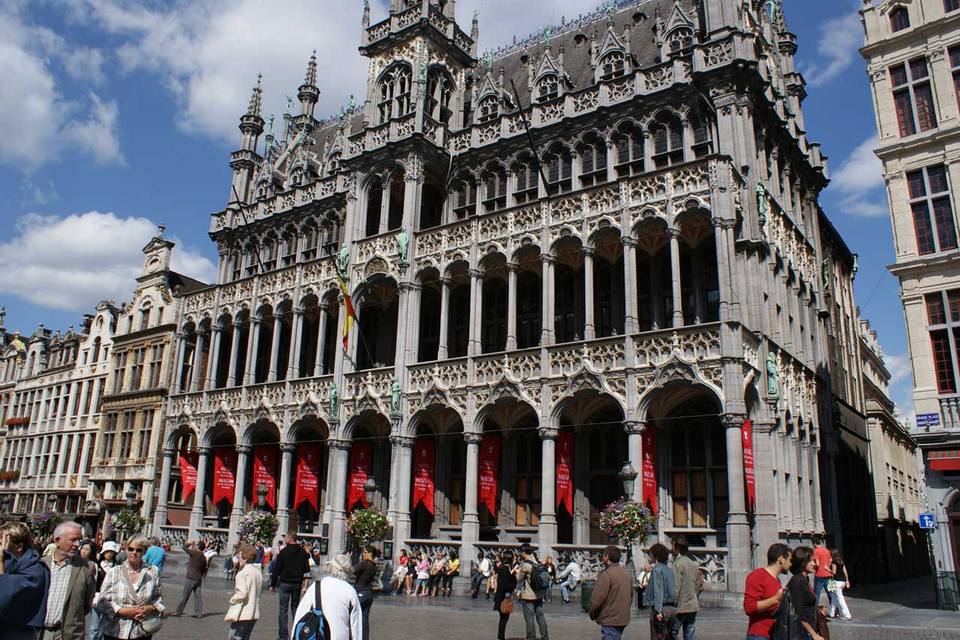
In addition to the above museums, Brussels also has many other museums such as Musée de la Ville de Bruxelles (Museum of the City of Brussels) displaying artifacts about the history, heritage of Brussels, Belgian Brewers Museum specializing in Belgian beer industry (ticket price € 5 ), Notre Dame Cathedral or Church of Our Blessed Lady of the Sablon (similar Notre Dame in Paris) … If you are museum lover, you should buy Brussels Card to be able to visit 41 museums for free in the city, discounts at some other attractions. There are Brussels Card types valid within 24 hours, 48 hours, 72 hours corresponding to prices of € 22, € 30, € 38, details of Card information, buy online card, you see here .
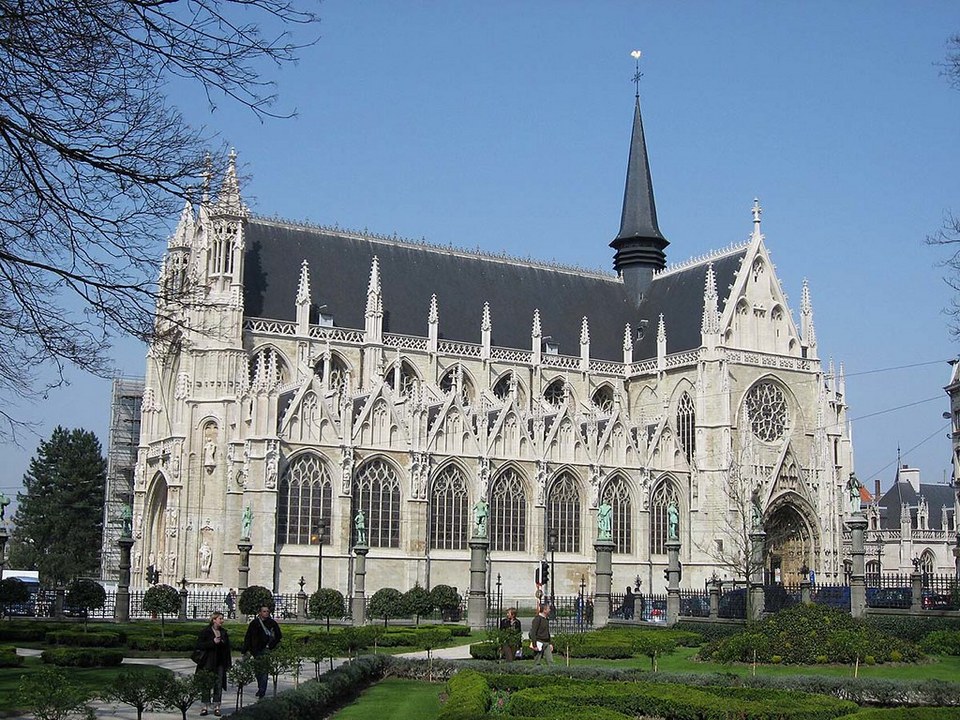
Peeing Boy Statue – Manneken Pis
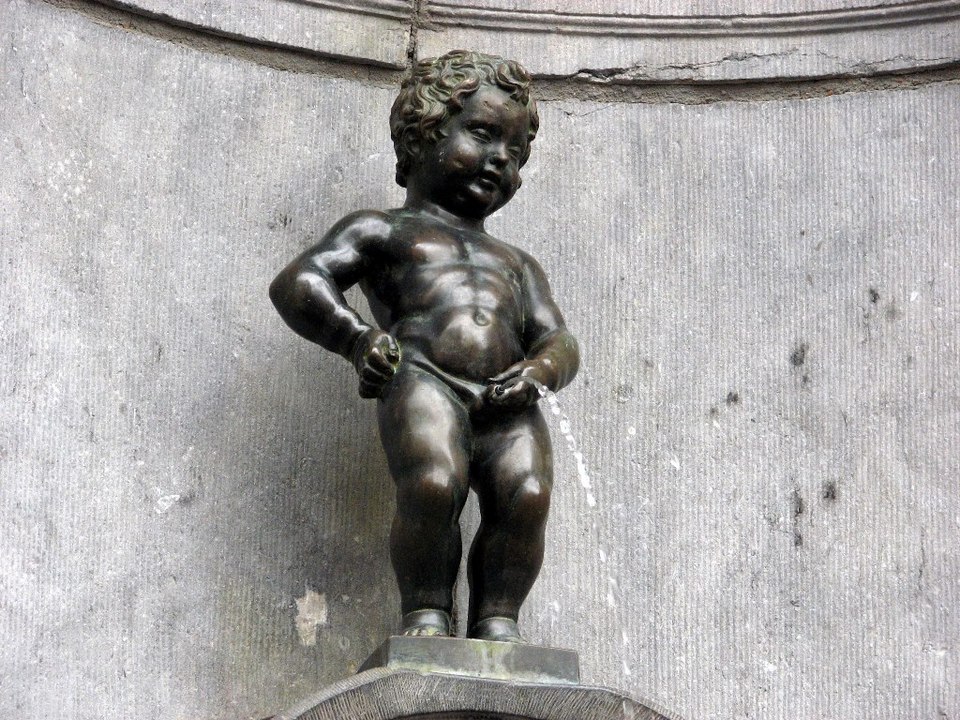
Manneken Pis statue is so famous that many people always think that this is the symbol of the city of Brussels. However, many people will be feeling disappointed by the statue so famous but the size is too small (only about 22 inches), not worth to be praised like that.
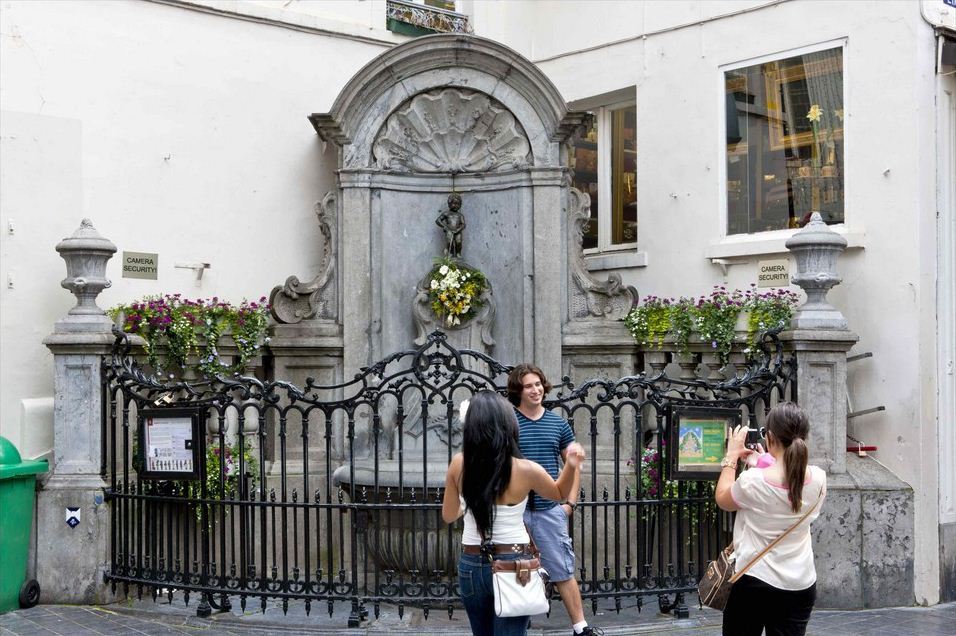
There are many anecdotes, legends covering the origin of this “peeing boy” statue. The most famous legend says that in 1142 when the army of lord – the two-year-boy fought against the army of the Berthouts, the soldiers took the boy into a basket and hung it on a tree to encourage them, and the boy peeing into the army of the Berthouts and thus drove them away.
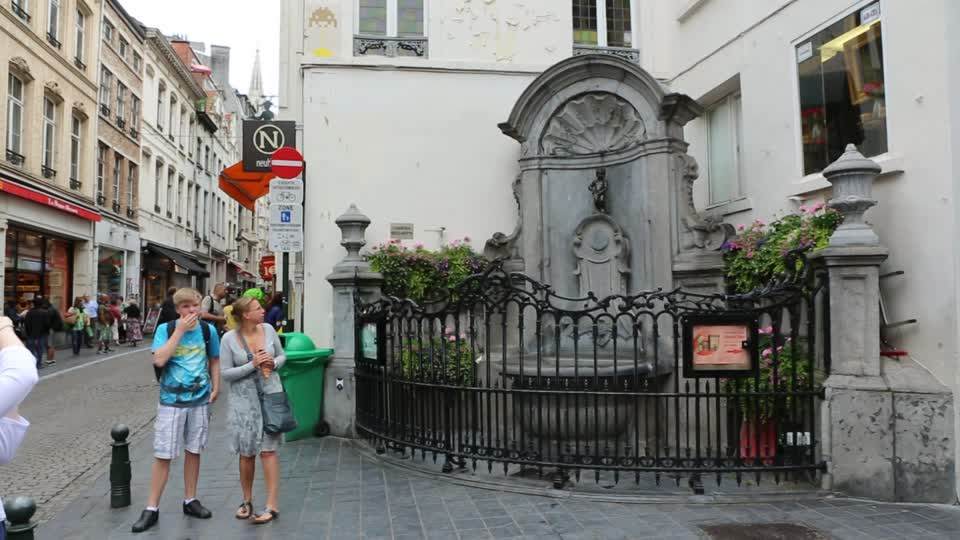
Continued reading…
Related articles
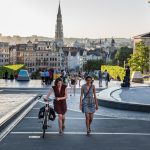
RELATED ARTICLES MORE FROM AUTHOR
Guide to shenzhen nightlife — top 5 things & what to do in shenzhen at night, ladakh trip cost per person from delhi — how much does ladakh trip by bike cost, india travel tips — 25+ what & things to know before traveling to india, coron itinerary 5 days — what to do & how to spend 5 days in coron.

Arashiyama travel blog — The fullest Arashiyama travel guide with top things to do in Arashiyama
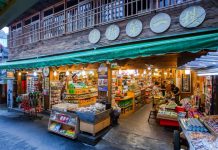
Explore Fenqihu old street — What to do in Fenqihu in a day trip?

Where to go in Kunming? — 15+ top Kunming attractions & best places to visit in Kunming
Must eat in melaka — 10+ famous malacca street food & must try food in melaka.
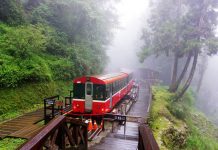
What to do in Alishan? — 5 top attractions & best things to do in Alishan, Taiwan
Editor picks.

Guide to Shenzhen nightlife — Top 5 things & what to...

Ladakh trip cost per person from Delhi — How much does...

India travel tips — 25+ what & things to know before...
Popular posts.

What to buy in USA? — 17+ must buy in USA...

Must buy souvenir in Taiwan — Top 17+ most famous, cheap...

Must buy in Korea — Top 23 cheap, famous & best...
Popular category.
- Inspiration + Guide 1459
- Trip Inspiration 468
- Thailand 209
- Food + Drink 208
- Coasts + Islands 193
- South Korea 168
- Vietnam 166
- Travel Photos 144
- Work for Us
- Terms & Conditions
- Privacy Policy
Nomadic Matt's Travel Site
Travel Better, Cheaper, Longer
Brussels Travel Guide
Last Updated: August 9, 2023
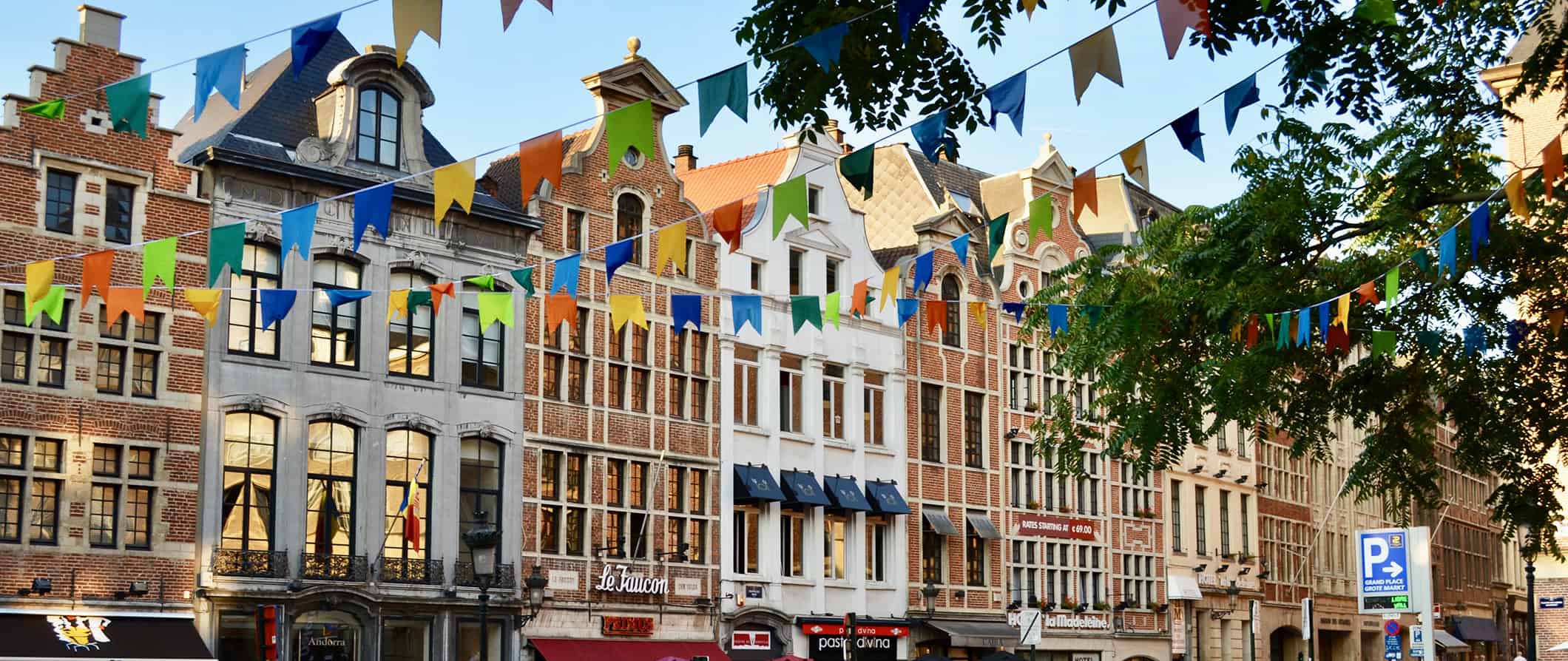
Brussels is a bit of an underdog city in Europe . Most travelers speed through on their way to Paris or Amsterdam. Or they skip the city altogether.
I think that’s a mistake.
As the administrative center of the European Union, Brussels can feel a bit “stuffy” — but don’t let that fool you. The city is hip, filled with history, (many museums have free entry on the first Sunday of the month), and boasts tons of cutting-edge restaurants. With its countless restaurants and bars devoted to beer, Brussels is a foodie’s dream.
Spend at least a couple of nights here. Enjoy the beer, devour some Belgian fries, and experience this often-overlooked European capital. It might just surprise you (it did me).
This travel guide to Brussels can help you plan your trip, save money, and make the most of your time in this underrated city!
Table of Contents
- Things to See and Do
- Typical Costs
- Suggested Budget
- Money-Saving Tips
- Where to Stay
- How to Get Around
- How to Stay Safe
- Best Places to Book Your Trip
- Related Blogs on Brussels
Top 5 Things to See and Do in Brussels
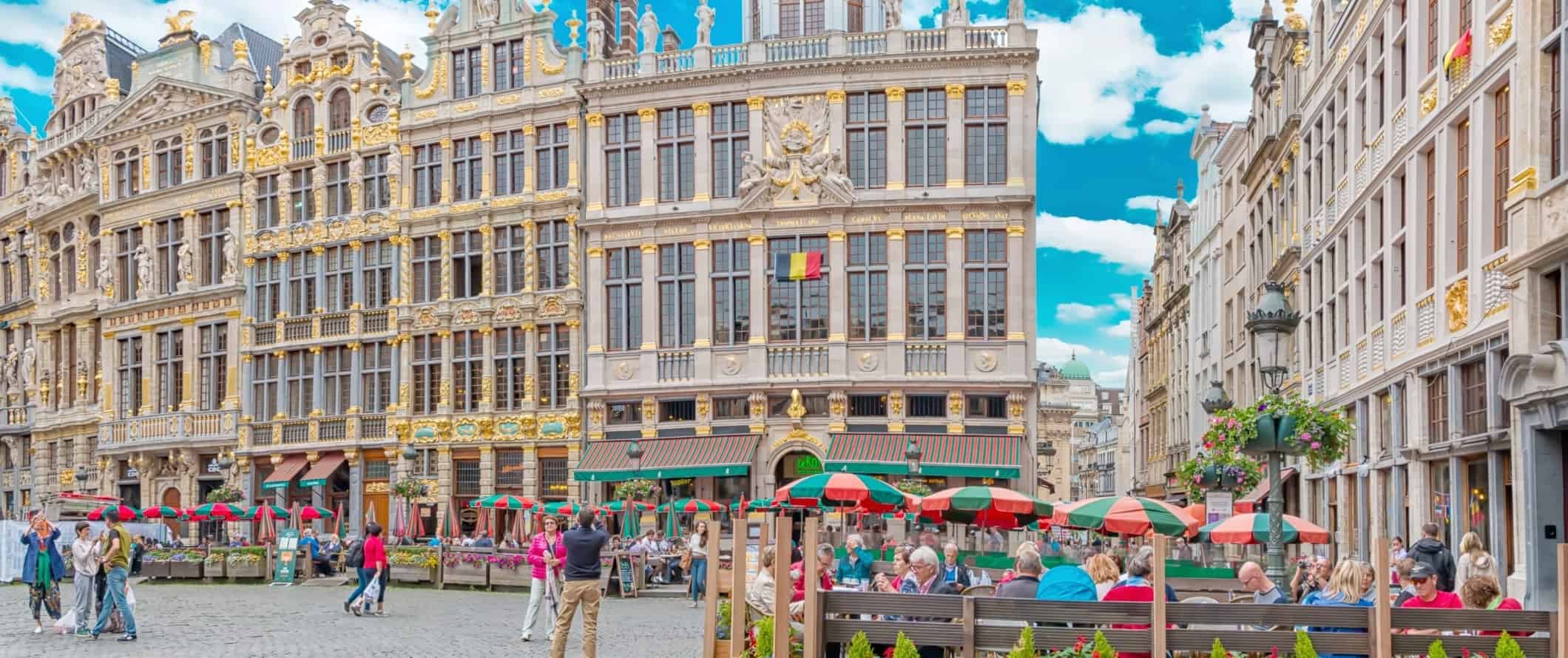
1. Visit the European Parliament
Founded in 1952, the EU parliament is where all 705 members (from 27 countries) meet to debate the future of the EU. You can watch a parliamentary session in the debating chamber (known as the Hemicycle) or tour the building (with an audio guide) when parliament isn’t in session. Space is limited so book in advance (it’s free). On Mondays at 11am and 3pm, there are in-depth guided tours offered in both English and French.
2. Hang out at Grand Place
Brussels’ most popular tourist attraction is its Grand Place. This is the heart of the city and includes the Town Hall, the famous Breadhouse, and, every two years in August, displays a huge floral arrangement. The Grand Place is a bustling part of Brussels and a popular meeting spot for locals.
3. Visit St. Michael and Gudula Cathedral
Built in 1047, this cathedral is the official site of all royal Belgian weddings, funerals, and coronations. It houses a lot of medieval artifacts, including stained-glass windows donated by Holy Roman Emperor Charles V. Entrance is free but it’s 3 EUR to see the Romanesque crypt, 1 EUR for the church’s archaeological site, and 2 EUR for the Treasury.
4. See Manneken Pis
Manneken Pis is a bronze sculpture fountain of a young boy urinating. It was put in place to distribute drinking water in the 15th century and now it’s a local icon. Each day he wears a new costume (and all the old costumes are kept in a museum). Nearby you can also find Jeanneke Pis, which is of a little girl urinating (it’s as weird as it sounds), and Het Zinneke, a statue of a urinating dog.
5. Drink beer at Delirium Café
This is easily the most famous bar in Brussels, thanks to its selection of some 2,000 beers from around the world (it made the Guinness Book of World Records). They brew their own beer as well, and the enormity of the menu draws a fun-loving, talkative crowd.
Other Things to See and Do in Brussels
1. take a free walking tour.
One of the first things I do in a new city is to take a free walking tour. It’s the best way to get the lay of the land, see the main sights, and connect with a local guide who can answer all my questions. New Europe runs regular free tours that cover all the highlights. Just remember to tip your guide at the end!
2. Explore The Horta Museum
The Horta Museum was once the house of famous art nouveau architect, Victor Horta, who built the property in the late 1890s. It is an excellent example of the art nouveau style that made Horta one of the most acclaimed architects in Belgium. The unique orange-and-yellow glass ceiling and the detailed curlicues of the wrought iron railings are beautiful. Admission is 12 EUR.
3. See the Chinese Pavilion and Japanese Tower
Located at the end of the Royal Estate at Laeken, the Chinese Pavilion and Japanese Tower were constructed between 1901-1910 on the orders of King Leopold. The pavilion has a museum dedicated to Chinese porcelain and furniture from the 17th and 18th centuries. NOTE: The Chinese Pavilion and Japanese Tower are currently closed due to safety reasons until further notice.
4. Learn about beer at the Cantillon Brewery
Cantillon Brewery was founded in 1900 and is the last surviving lambic brewery (a Belgian beer brewed with raw wheat and wild yeast and fermented for at least a year) in Brussels. The brewery still makes use of its original 19th-century equipment, including its wooden barrels, where the beer matures for up to three years. Guided tours are offered on Saturdays only for 10 EUR, or you can take a self-guided tour throughout the week for 7 EUR. You’ll learn a lot about the production process and you’ll get a free beer at the end. If visiting one brewery isn’t enough for you, you can also take this beer tasting tour where you’ll visit a number of different breweries and enjoy some traditional Belgian snacks with your beers.
5. Gorge at the Gare du Midi market
If you are in Brussels on a Sunday morning, there is no better place to be than the Gare du Midi Market. This is the biggest market in the city and the third-largest food market in Europe, so you can expect to find tasty food like crepes from North Africa, Mediterranean spices, meats, cheese, and pretty much any type of food you desire. Bring an appetite!
6. Eat chocolate
Aside from beer, one of Belgium’s most famous exports is chocolate. Chocolatiers’ shops dot the city, each with its unique recipes (and price tags). My favorite chocolate shop is Maison Pierre Marcolini, as Pierre Marcolini is one of the only chocolatiers in the city to personally select the cocoa beans to roast himself. A close runner-up is Galler Chocolatier, where Jean Galler has perfected some interesting flavor combinations (including an apricot praline). If you want to dive even deeper into Belgian chocolate, visit Choco-Story, the chocolate museum where you can also take a chocolate-making workshop to design your very own chocolate.
7. Learn some history at Waterloo
Just south of the city is Waterloo, the site of Napoleon’s final battle against Europe in 1815. The battle pitted Napoleon against Wellington and the Prussians, marking the end of the Napoleonic Wars. Some 200,000 soldiers were involved and tens of thousands were killed over the course of the day. Although the fields are empty now, at the center of it all is a 40-meter-tall (131 feet) Lion’s Mound, which you can climb to look out across the whole battlefield. There’s also a visitor center where you can watch films that explain the battle and what it meant for world history. Admission to the museum is 17-19 EUR.
8. Admire the view from the Basilique de Koekelberg
The Basilica of the Sacred Heart is the 5th largest church in the world, standing 89 meters tall (291 feet) and measuring 167 meters long (548 feet). It was built to celebrate the 75th anniversary of Belgium’s independence, and King Leopold II laid the first stone in 1905. The art deco style contrast of its green dome against red terracotta stones is a striking sight, but the best part is the view over the city from the church’s terrace. It costs 8 EUR to reach it.
9. Hang out at the Grand Salon
The Grand Salon is a square ringed by old mansion houses. The Gothic-style Church of Notre Dame du Sablon can also be found here, but one of the best things to do is sit at a sidewalk cafe, people-watch, and take in the local pace of life. There’s also a fun book and antique market during the weekend if you want to browse.
10. Visit AutoWorld
AutoWorld is a car museum that has over 250 vintage European and American automobiles from the late 19th century up to the 1970s. It has limousines used by the royal family, Belgian-produced Minervas (a defunct car manufacturer that went out of business in the 1950s), and all kinds of prototype vehicles. Admission is 13 EUR. You can buy tickets online in advance here .
11. Climb the Atomium
The Atomium is a giant iron crystal that stands 102 meters (335 feet) tall, magnified 165 billion times its normal size. The structure was originally built for the Brussels World’s Fair in 1958 and was never meant to be permanent. But it quickly became so beloved by Belgians that it was kept standing. Today, you can go inside the six spheres for panoramic views over the city. There’s even a restaurant in the top sphere. Admission is 16 EUR. It’s recommended to buy tickets online in advance .
12. Explore Mini-Europe
While you’re visiting the Atomium, you can also explore the nearby Mini-Europe, a theme park featuring incredibly detailed miniature replicas of famous European monuments, including Big Ben, the Eiffel Tower, and the Berlin Wall. There are over 350 monuments in the park, including live-action ones, such as an erupting Mt Vesuvius. Admission to Mini-Europe is 17.30 EUR , while joint tickets that also include entry to the Atomium are 29.40 EUR.
13. See some comic strip art
Located in an Art Nouveau home designed by Victor Horta, The Belgian Center for Comic Strip Art is a must for comic lovers or anyone who’s interested in seeing a different kind of art museum. There are permanent as well as temporary exhibitions with prints, drawings, books, and an entire exhibit dedicated to telling the history of the comic. There’s also a massive comic book shop and library with the biggest collection of comic books globally. Admission to the museum is 12 EUR.
For information on other cities in Belgium, check out these guides:
- Bruges Travel Guide

Brussels Travel Costs
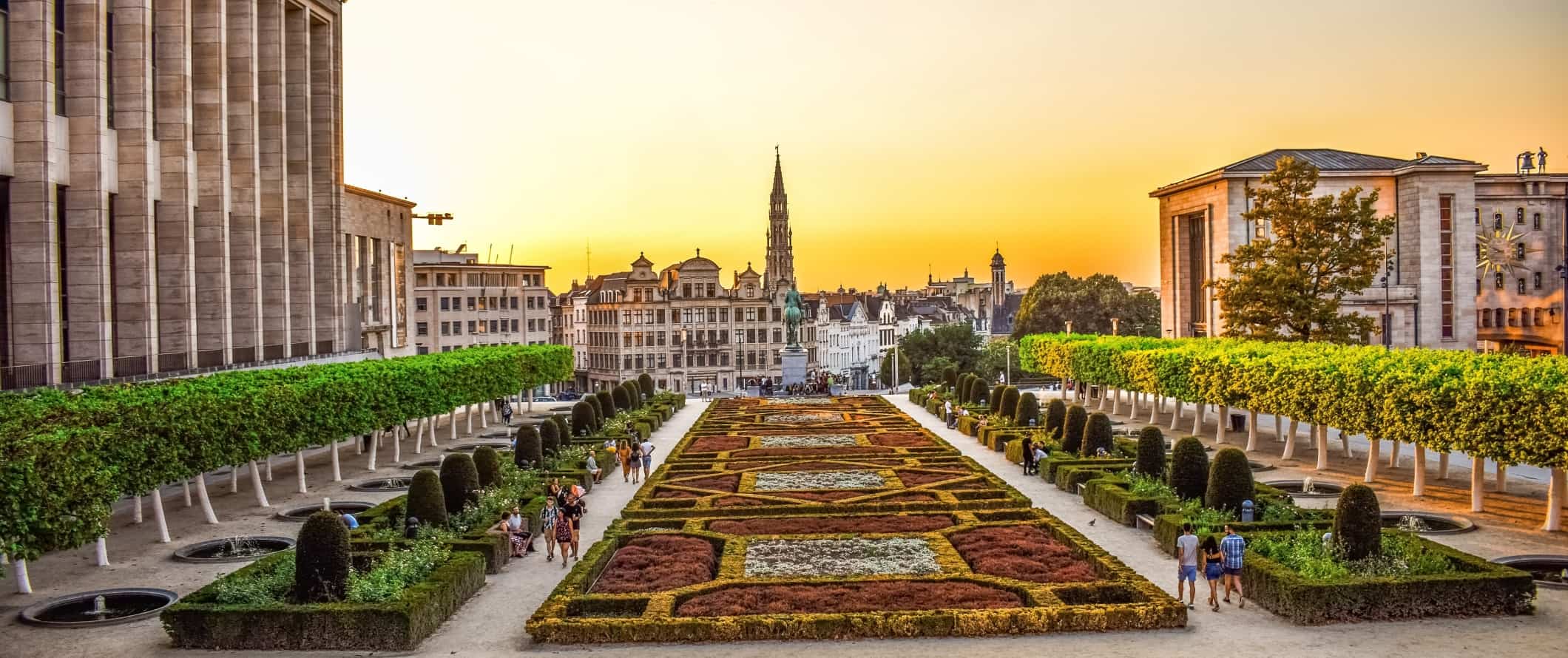
Hostel prices – For a hostel dorm, prices range from 31-39 EUR per night for a dorm with 4-6 beds, while rooms with 8 beds or more cost 27-30 EUR. For a private room, expect to pay 95-155 EUR per night. Free Wi-Fi is standard and most hostels have self-catering facilities. Some also include free breakfast.
For those traveling with a tent, camping is available outside the city. A basic plot costs around 13 EUR per night.
Budget hotel prices – A room in a budget two-star hotel costs 100-130 EUR per night. Expect basic amenities like free Wi-Fi, coffee/tea makers, and TVs.
Airbnb is available in the city with private rooms starting at 50-75 EUR per night. Entire apartments start around 115 EUR per night. Prices double when not booked in advance so be sure to book early.
Food – Belgian cuisine has been strongly influenced by its European neighbors over the centuries, specifically France, Germany, and the Netherlands. The food here is hearty with chocolate, waffles, fries, and beer being the most famous cultural staples. Steak and fries, mussels (often with fries), smoked ham, stew, and sausages are just some of the common dishes you’ll find here. Portions are large and filling too (the saying goes that Belgian food takes the portions of German cuisine but adds the quality and delicacy of French cuisine).
Generally speaking, eating out in Brussels isn’t super affordable. Light meals at cafes (like a sandwich, soups, salads, or crepes) cost around 7-11 EUR. Fast food (think McDonald’s) costs 9 EUR for a combo meal. Takeaway snacks, like a cone of fries at one of the ubiquitous frite shops, cost 3-4 EUR.
At a casual restaurant serving traditional cuisine, expect to pay around 15-22 EUR for a main dish. If you want to splash out, a three-course meal with a drink costs at least 40-60 EUR. Chinese food costs around 9-14 EUR for a dish while a takeaway pizza is around 8-10 EUR.
Beer or a glass of wine are both around 4-5 EUR, a cocktail is 9-12 EUR, and a latte/cappuccino is 3-4 EUR. Bottled water is 2 EUR.
Some of my favorite places to eat are Delirium Cafe, Wolf (which is a food hall with tons of different stalls), and Maison Antoine (for frites).
If you want to cook your meals, there are some great markets throughout the city. Expect to pay around 60 EUR for a week’s worth of groceries. This gets you basic staples like pasta, rice, bread, seasonal produce, and some meat or fish.
Backpacking Brussels Suggested Budgets
If you’re backpacking Brussels, expect to spend around 65 EUR per day. This budget covers a hostel dorm, cooking most of your meals, taking public transportation to get around, limiting your drinking, and doing mostly free activities like free walking tours, visiting the markets, and touring the EU parliament.
On a mid-range budget of 150 EUR per day, you can stay in a private Airbnb or private hostel, enjoy a few drinks, eat out for some meals, take the occasional taxi to get around, rent a bike, and do more paid activities like visiting museums and going to AutoWorld.
On a “luxury” budget of 270 EUR or more per day, you can stay in a hotel, eat out for all your meals, drink as much as you want, take more taxis, and do whatever activities you want. This is just the ground floor for luxury though. The sky is the limit!
You can use the chart below to get an idea of how much you need to budget daily. Keep in mind these are daily averages – some days you’ll spend more, some days you’ll spend less (you might spend less every day). We just want to give you a general idea of how to make your budget. Prices are in EUR.
Brussels Travel Guide: Money-Saving Tips
Brussels is a city of diplomats and they have big expense accounts. That means the city is not a super budget-friendly place to visit. However, it’s not impossible to save money here. Here are some of my suggestions to help you keep costs down:
- Get the plat du jour – Many restaurants offer a dish of the day or a fixed menu at lower prices during lunch so this is the best time to eat out if you plan on doing so. That said, cooking your food is still the cheapest option here.
- Eat Belgian fries – For an inexpensive and quick snack, try Belgian fries, or frites (usually eaten with mayonnaise). A large cone of fries costs no more than 4-5 EUR and are available everywhere. It’s not healthy, but it’s filling and delicious!
- Rent a bicycle – As taxis are so expensive, consider renting a bike to get around. Companies like Villo! and Blue-bike have low rates starting from 3.50 EUR per 24 hours (with the first half-hour often being free).
- Use student discounts – Students can receive discounts into many attractions upon presentation of an ISIC card, including half-price entry to the Royal Museum of Fine Arts.
- Stay with a local – Couchsurfing connects you with locals who can give you a free place to stay. Not only does it save you money but they can share their insider tips with you too. It’s the best way to connect with a local while saving money.
- Take a free walking tour – Free walking tours are the best way to see the city on a budget. Just remember to tip your guide at the end!
- Bring a water bottle – The tap water here is safe to drink so bring a reusable water bottle to save money and reduce your plastic use. LifeStraw is my go-to brand as their bottles have built-in filters to ensure your water is always clean and safe.
Where to Stay in Brussels
There are a lot of hostels in Brussels to help keep your budget intact. My recommended places to stay are:
- Sleep Well Youth Hostel
- easyHotel Brussels
- Meininger Brussels City Center
- Brussels 2GO4 Quality Hostel City Centre
How to Get Around Brussels
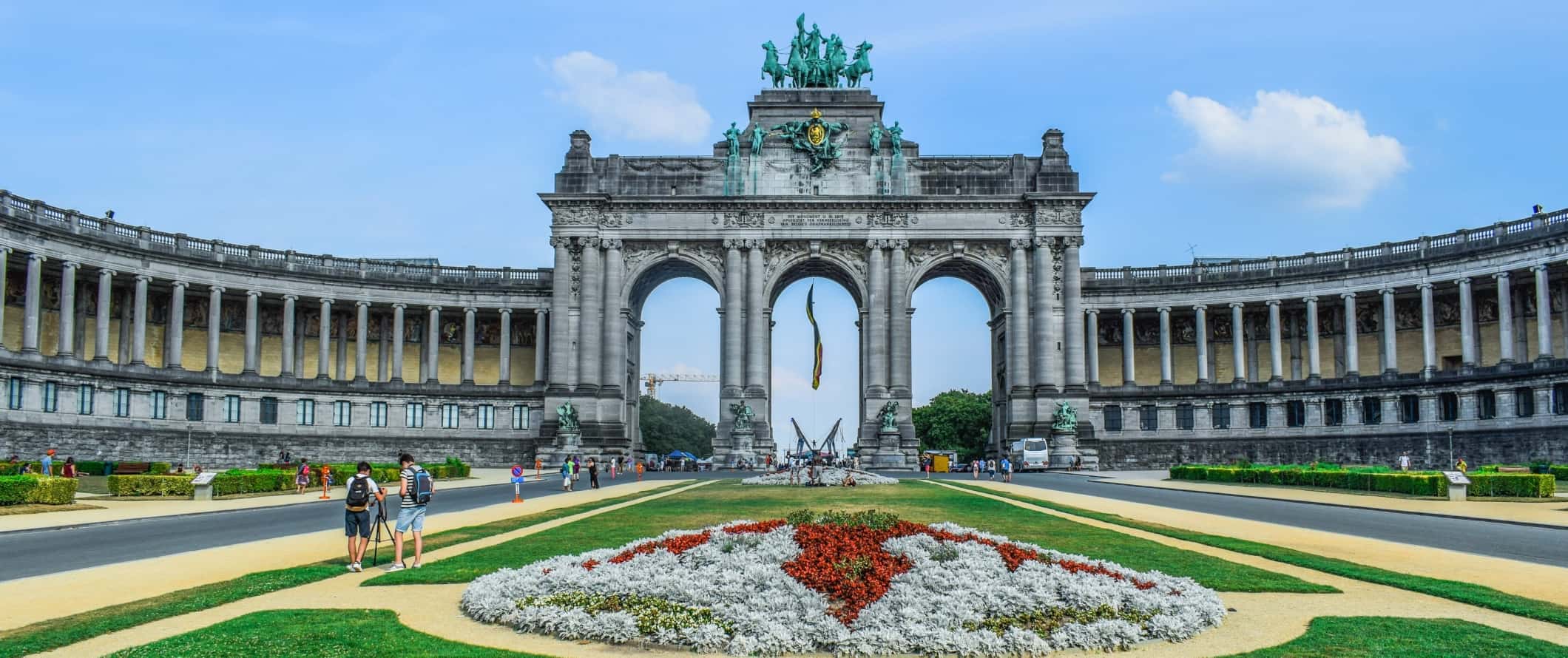
Public transportation – Brussels’ extensive public transportation system includes trams, buses, and subway (metro) lines. The city is pretty spread out so you’ll find yourself on public transportation often. It’s the best way to get around.
A single metro ticket costs 2.40 EUR when purchased inside the vehicle, or 2.10 EUR when using contactless payment methods. You can get a ten-journey pass for 15.60 EUR. A one-day ticket is 7.80 EUR (7.50 EUR daily cap when using contactless payment) and gives you unlimited travel across all public transportation.
Remember to validate your ticket every time you take public transportation. Failing to do so can result in a significant fine!
The airport bus is 7 EUR each way.
Bicycle – There are a handful of bicycle rideshare companies in Brussels, including Villo! and Blue-bike, with incredibly low rates starting from 3.50 EUR per 24 hours. Villo! Rentals are free for rides under 30 minutes.
Taxi – Taxis are very expensive. With the base rate starting at 4.98 EUR and then 1.94 EUR for each additional kilometer, they add up fast. With great public transportation, there’s few times you’ll need a taxi!
Ridesharing – After a brief ban, Uber is back in operation in Brussels. But, like taxis, it’s expensive, so skip the ridesharing if you’re on a budget.
Car rental – Car rentals are expensive here, costing at least 50 EUR per day. However, the city is easy to get around via public transportation so you definitely don’t need a car here unless you are leaving the city to explore the rest of the country/region. Divers need to be at least 21 years of age.
When to Go to Brussels
The best time to visit Brussels is during the shoulder seasons, between March-May and September-October. Room rates are much cheaper, and you won’t have to compete for space at all the city’s top attractions. The average daily high in March-May is about 16°C (62°F), while it’s around 18°C (66°F) from September-October.
The summer is the busiest and most popular time to visit. I would avoid visiting during this time, when average daily temperatures are about 23°C (73°F), as prices are inflated and the city’s attractions are very busy.
Winter can be frigid, averaging 6°C (43°F) during the day but often dropping lower. That said, Brussels is alive with Christmas markets and prices are much lower so it’s a fun time to visit if you’re going to be browsing markets and enjoying the museums.
If you come during February you can attend Brussels’ Carnival. It’s a bit of a booze fest and there are lots of costumes and parades, but if you’re in the mood to have fun, this is an ideal time to do it.
Brussels weather can also change on a dime all year round so make sure you pack a light sweater and rain jacket no matter what time of year you visit.
How to Stay Safe in Brussels
Brussels is very safe to visit. Violent crime is very rare here. However, pickpocketing and petty theft can occur so always keep your valuables secure and out of reach (especially in crowded areas and on public transportation).
In the evenings, avoid wandering through certain areas alone due to increased chances of crime, including Schaerbeek, Brussels North, Molenbeek, and Anderlecht.
Solo female travelers should feel safe here for all those reasons. However, the standard precautions you take anywhere apply here too (never leave your drink unattended at the bar, never walk home alone intoxicated, etc.). There are numerous solo female travel blogs that can provide more specific tips.
Scams in Brussels are rare, however, if you’re worried about getting ripped off you can read about common travel scams to avoid here.
If you experience an emergency, dial 112 for assistance.
Always trust your gut instinct. Make copies of your personal documents, including your passport and ID. Forward your itinerary along to loved ones so they’ll know where you are.
The most important piece of advice I can offer is to purchase good travel insurance. Travel insurance will protect you against illness, injury, theft, and cancellations. It’s comprehensive protection in case anything goes wrong. I never go on a trip without it as I’ve had to use it many times in the past. You can use the widget below to find the policy right for you:
Brussels Travel Guide: The Best Booking Resources
These are my favorite companies to use when I travel. They consistently have the best deals, offer world-class customer service and great value, and overall, are better than their competitors. They are the companies I use the most and are always the starting point in my search for travel deals.
- Skyscanner – Skyscanner is my favorite flight search engine. They search small websites and budget airlines that larger search sites tend to miss. They are hands down the number one place to start.
- Hostelworld – This is the best hostel accommodation site out there with the largest inventory, best search interface, and widest availability.
- Booking.com – The best all around booking site that constantly provides the cheapest and lowest rates. They have the widest selection of budget accommodation. In all my tests, they’ve always had the cheapest rates out of all the booking websites.
- Get Your Guide – Get Your Guide is a huge online marketplace for tours and excursions. They have tons of tour options available in cities all around the world, including everything from cooking classes, walking tours, street art lessons, and more!
- SafetyWing – Safety Wing offers convenient and affordable plans tailored to digital nomads and long-term travelers. They have cheap monthly plans, great customer service, and an easy-to-use claims process that makes it perfect for those on the road.
- LifeStraw – My go-to company for reusable water bottles with built-in filters so you can ensure your drinking water is always clean and safe.
- Unbound Merino – They make lightweight, durable, easy-to-clean travel clothing.
- Top Travel Credit Cards – Points are the best way to cut down travel expenses. Here’s my favorite point earning credit cards so you can get free travel!
- BlaBlaCar – BlaBlaCar is a ridesharing website that lets you share rides with vetted local drivers by pitching in for gas. You simply request a seat, they approve, and off you go! It’s a cheaper and more interesting way to travel than by bus or train!
Brussels Travel Guide: Related Articles
Want more info? Check out all the articles I’ve written on backpacking/traveling Belgium and continue planning your trip:
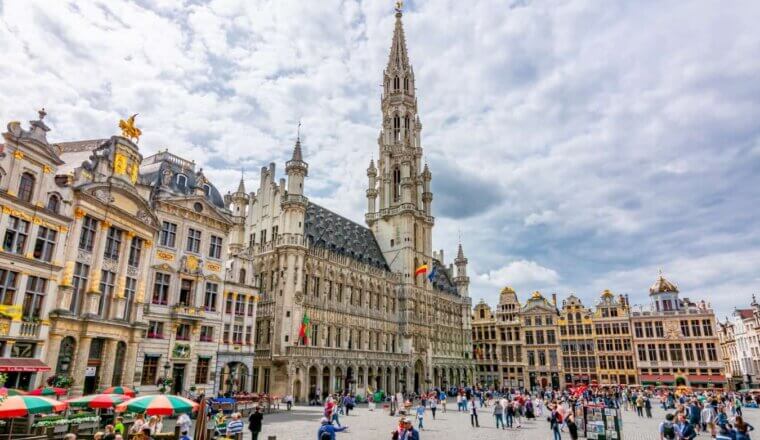
The Best Things to Do and See in Brussels
Get my best stuff sent straight to you, pin it on pinterest.
- Where To Stay
- Transportation
- Booking Resources
- Related Blogs
- Meet the Team
- Work with Us
- Czech Republic
- Netherlands
- Switzerland
- Scandinavia
- Philippines
- South Korea
- New Zealand
- South Africa
- Budget Travel
- Work & Travel
- The Broke Backpacker Manifesto
- Travel Resources
- How to Travel on $10/day
Home » Europe » Belgium » Brussels
Insider Brussels Itinerary (2024 • Glow Up)
Brussels . A city where the waffle scene is completely off the rails and bureaucracy is so efficient that nothing ever really gets done…
In short, the perfect EU headquarters! ( ED: Bit far?)
ANYWAY, Brussels is packed full of wonderful attractions, and you’re gonna be hard-pressed to catch ’em all. Hence, I have written this top class Brussels Itinerary , perfect for putting all your timing concerns at ease.
I’ll cover all the main visitor essentials, starting from ‘how to not sound French’ and ‘being exceptionally lost’ all the way to ‘getting Koreans to take your photos’. I might even repent my European Union joke too.
Let’s jump into Brussels!

Unlock Our GREATEST Travel Secrets!
Sign up for our newsletter and get the best travel tips delivered right to your inbox.
A Little Bit About this 3-Day Brussels Itinerary
Where to stay in brussels, brussels itinerary day 1, brussels itinerary day 2, brussels itinerary day 3, what to do with more than 3 days in brussels, the best time to visit brussels, getting around in brussels, faq on brussels itinerary, final thoughts.
So you’re heading over for a quick visit to Belgium and telling your friends that Belgian delicacies are simply divine (whilst spending all of your money on local brew)?
Outstanding work. However, your time is precious! Exceptional things to do seem to spring out of every corner, and you are starting to see why the Belgian Capital was selected as the European Union’s headquarters…
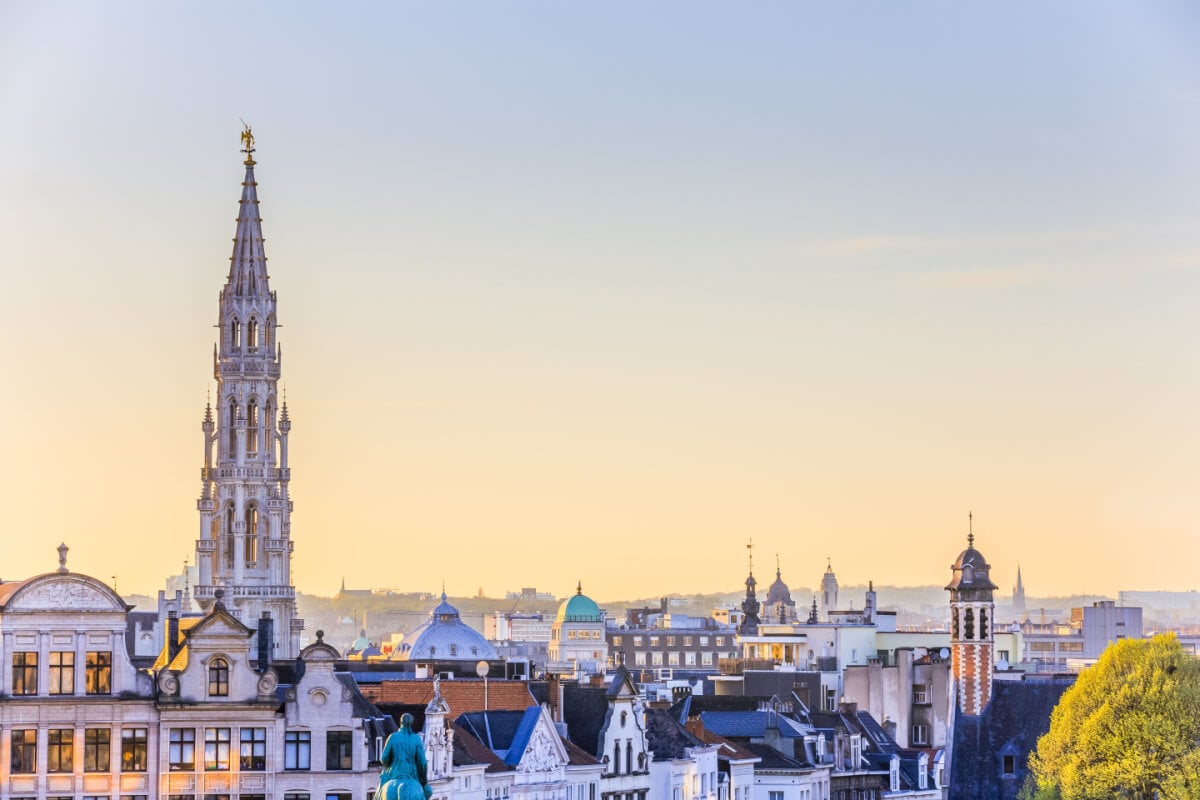
This 3-days in Brussels Itinerary is going to sweep you with ease through the top attractions, places to visit , and general ambience of this city. I might even try and keep it entertaining for ya too…
There’s a lot to cover, so take this guide as a general base upon which you can structure your own personalised itinerary. I’ve slipped in some hidden gems (like chocolate shops, royal palaces and the Brussels Stock Exchange) so pay attention…
3-Day Brussels Itinerary Overview
- Day 1: The Grand Place | Brussels City Museum | Royal Gallery of Saint Hubert | Mont Des Arts | Mannekin Pis | Choco Story | Brussels Beer Tour
- Day 2: Atomium | Mini Europe | Musical Instruments Museum | Royal Palace of Brussels | Museum of Fine Arts | Notre Dame Du Sablon
- Day 3: Parc Du Cinquantenaire | Museum of Natural Science | Belgian Comic Strip Centre | Le Botanique
And so the first day passes. You’re going to need an EPIC place to stay ! Never fear, because I have curated an excellent selection of accommodation that even the choosiest shan’t fail to love…
City Centre
Brussels’ City Centre is a magnet for tourists, with dazzling architecture, interesting attractions, and a good choice of places to eat, drink, shop, and sleep.
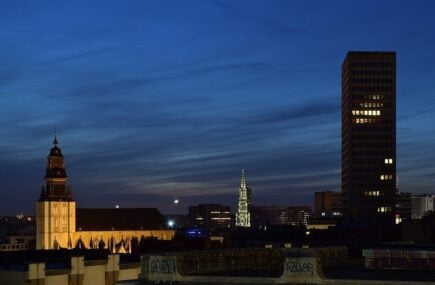
The Marolles
The Marolles is one of the best neighbourhoods in Brussels for people looking for budget accommodation. Soak up the local vibe and discover the working class side of the Belgian capital.
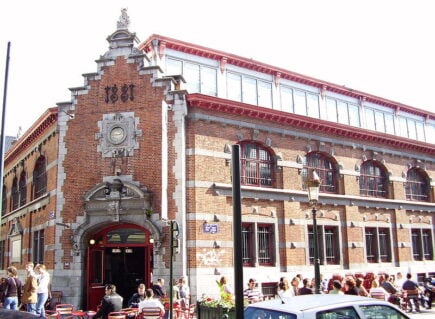
Saint Gery was previously an island in the River Senne. There’s no water crossing needed today, though; the river was covered up and Saint Gery joined with the rest of the city.
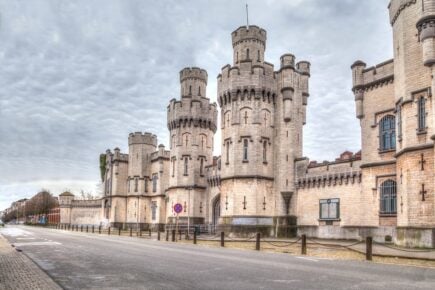
Saint Gilles
Our choice for the coolest place to stay in Brussels, Saint Gilles is a youthful, bohemian, trendy, multicultural, and lively part of the city.
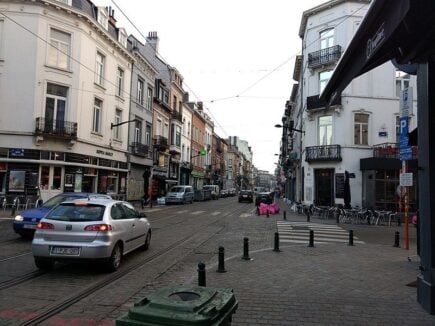
Ixelles is an arty and trendy neighbourhood with a good selection of shops, restaurants, bars, and attractions. Lakes, parks, and forests are within easy reach and the area is well connected by public transport.
The Grand Place | Brussels City Museum | Royal Gallery of Saint Hubert | Mont Des Arts | Mannekin Pis | Choco Story | Brussels Beer Tour
Today we’re literally just going to be covering in and around the Grand Place. There is so much to see! If you’re wondering what to see in Brussels in two days, here’s the start to any good 2-day Brussels Itinerary .
8:00 am – Visit the Grand Place
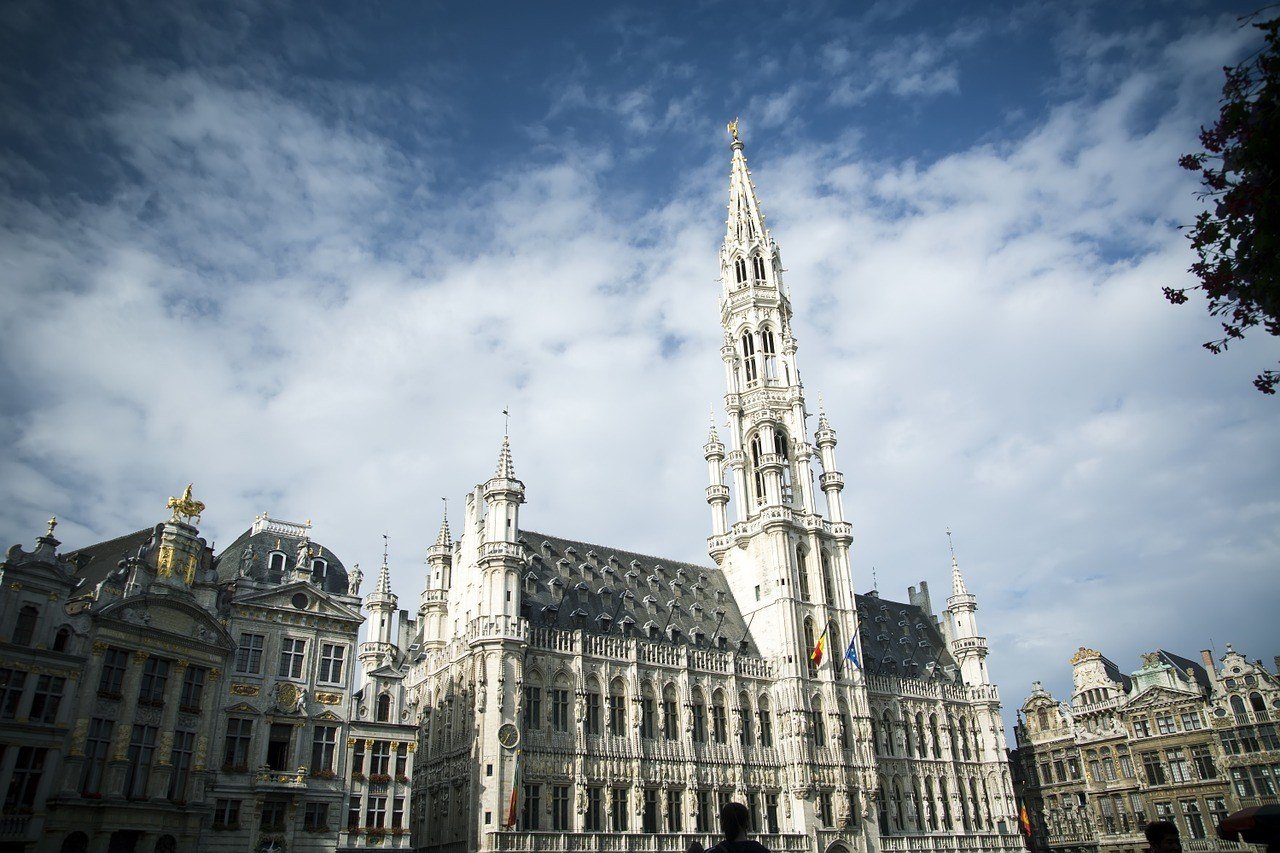
Visiting the Grand Place is one of the best ways to kick off your Brussels itinerary. This impressive square is considered the central point of the main area in Brussels, and walking around it will leave anyone completely inspired!
The square is lined with some magnificent buildings, offering possibly the best architectural display in the city! These buildings all have rich histories, and exploring them will give you a good idea of what life in Brussels would have looked like many years ago! The main focal point when visiting the Grand Place is the 15th-century city hall in the centre.
The Grand Place always has something fun going on. This square is full of cool cafes, bars, and shops. Sometimes there is a flower market in the centre of the square, and at night there is always a great vibe here!
Walking around the Grand Place is an essential first stop to help you get your bearings, and take in some of the best buildings in the city.
Take the time to grab a coffee and some breakfast while you’re here!
Insiders Tip: For a new and beautiful perspective of the Grand Place, visit at night when it is all lit up!
- Cost: Free
- How long should I spend here? Around an hour.
- Getting there: There are a literal bucket load of bus stops, the metro, and trams! Grand Place ought to do it.
9:00 am – Take a Visit to The Broodhuis
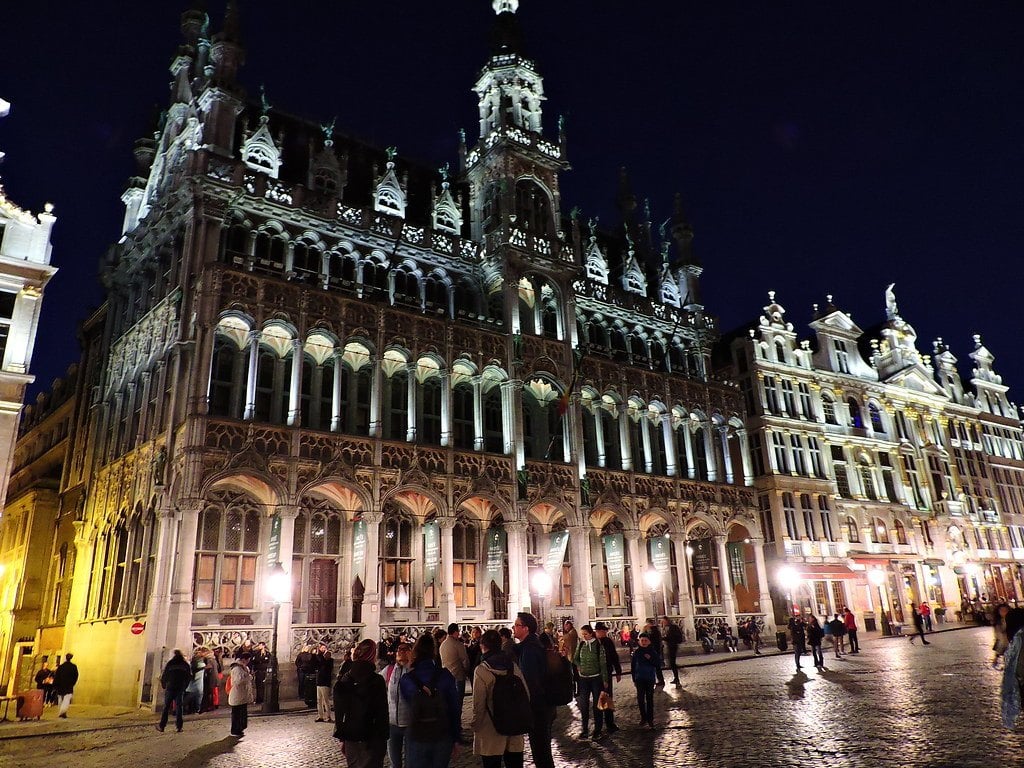
The Broodhuis, found on the Grand Place, is an old building with a long and interesting history as a bread market. Today, it is the site of the Brussels City Museum which has got to be the best place to learn all about this city’s amazing past.
The Brussels City Museum is dedicated entirely to the history of this city. The displays and exhibitions date back to the middle ages and take you through time right up until the present. If you want to learn more about Brussels and what’s going on around you, then a stop at this museum is a brilliant idea.
Insiders Tip: If you get a Brussels Card when arriving in the city, you will be able to access discounted rates on many museums and attractions- including this one!
- Cost: $9
- How long should I spend here? 1 hour or less.
- Getting there: You should already be in the right place! Just stroll over to the right side!
10:00 am – Go Shopping at the Royal Gallery of Saint Hubert
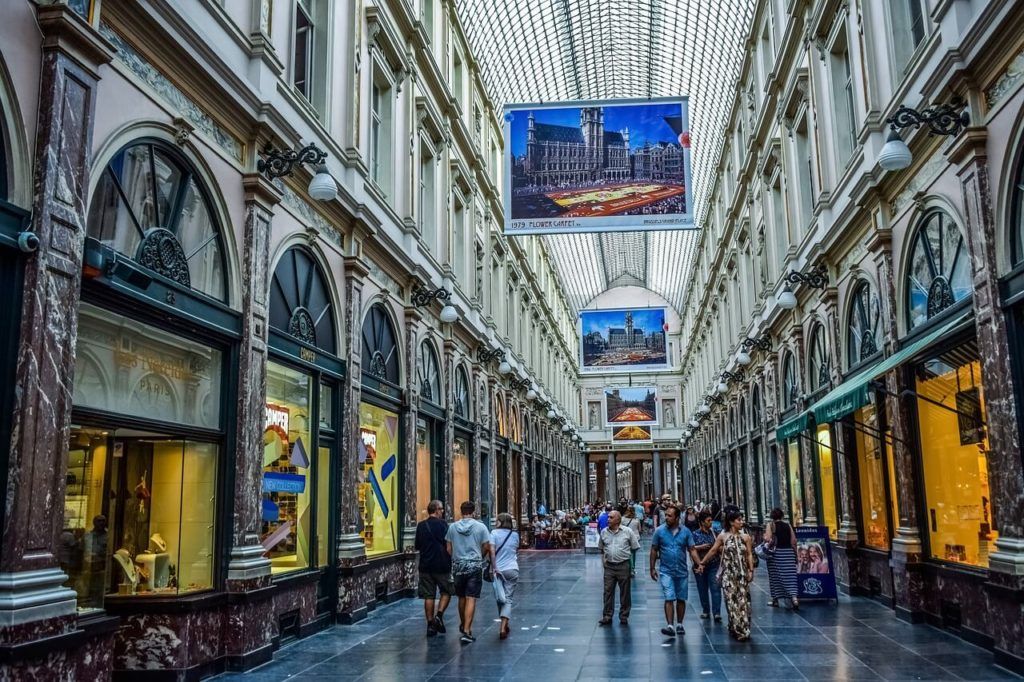
The Royal Gallery of Saint Hubert is an ensemble of brilliantly glazed shopping arcades in the heart of Brussels. If you want to experience some of the best shopping that this city has to offer, all in a fantastic setting, then this is the place!
One of the best things to do in Brussels is to simply walk around the streets, popping into the interesting shops and appreciating the amazing architecture around you. The Royal Gallery of Saint Hubert has got to be one of the best places to experience this during your Brussels itinerary!
If you are staying in a top-tier Brussels hostel , I guess you can look or something. (haha)
- How long should I spend here? Try 1.5 hours
- Getting there: It’s 1 minute’s walk. Literally just down the street!
12:00 pm – Explore the Mont Des Arts
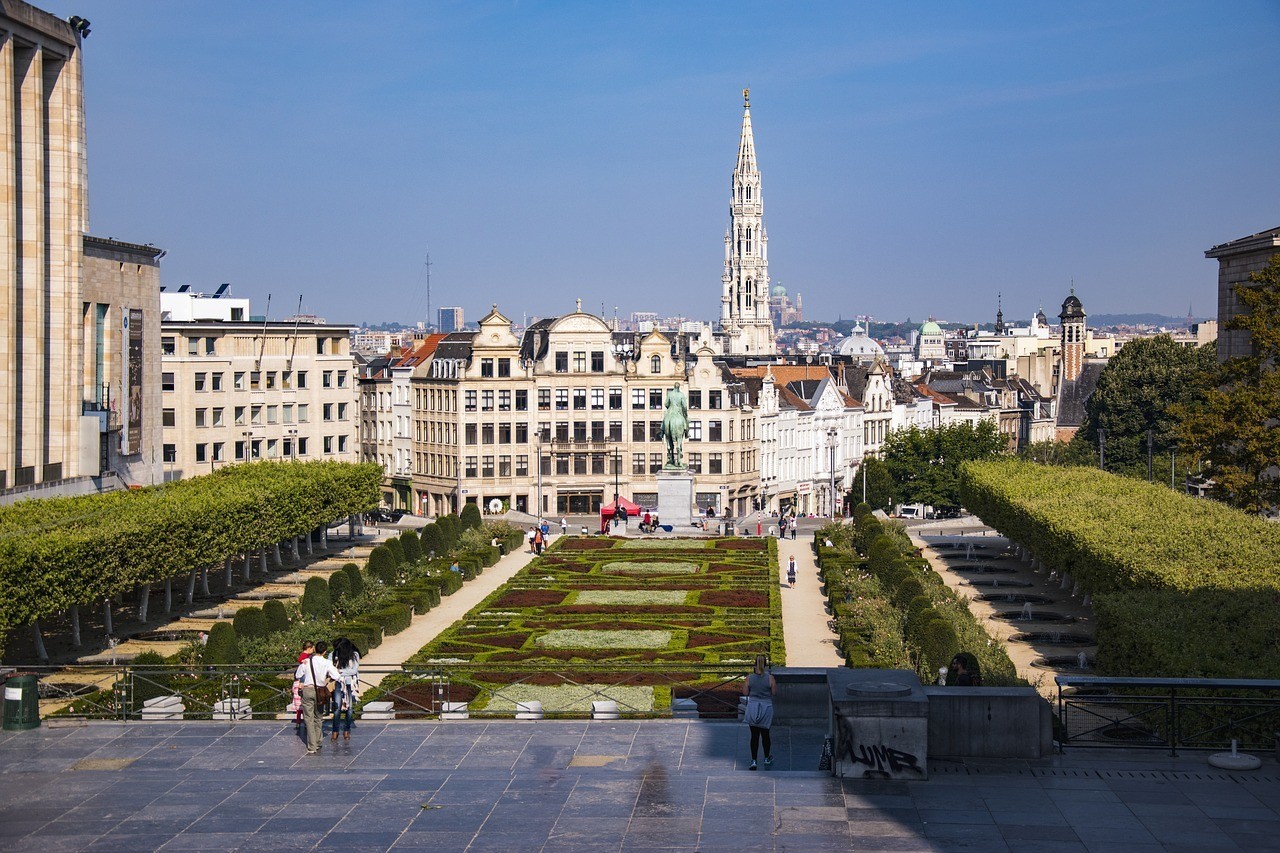
If you want to explore more of the amazing museums and historical-cultural collections in Brussels, then consider visiting the Mont Des Arts.
Aside from being such a beautiful place in Belgium , this city is a cultural hub with prominent museums dedicated to art, history, and culture.
When exploring the Mont Des Arts, you could visit the Royal Library of Belgium, the National Archives of Belgium and the Brussels Meeting Center square, a beautiful public garden (more commonly known as the Mont Des Arts Gardens)!
Central Brussels is popping, so be sure to check out if something is happening when you travel to Brussels. However, you don’t need an event going on to attract you to this exciting part of the city!
Besides all of the art and culture available here, the Mont Des Arts boasts a fantastic public garden -the perfect place to catch some fresh air in the city. The buildings and architecture around here are also well worth admiring!
Take the time to stop for some lunch close by. Belgian food is fantastic!
- How long should I spend here? Around 2 hours.
- Getting there: It’s a 6-minute walk South-East from the last stop.
2:30 pm – Experience Manneken Pis
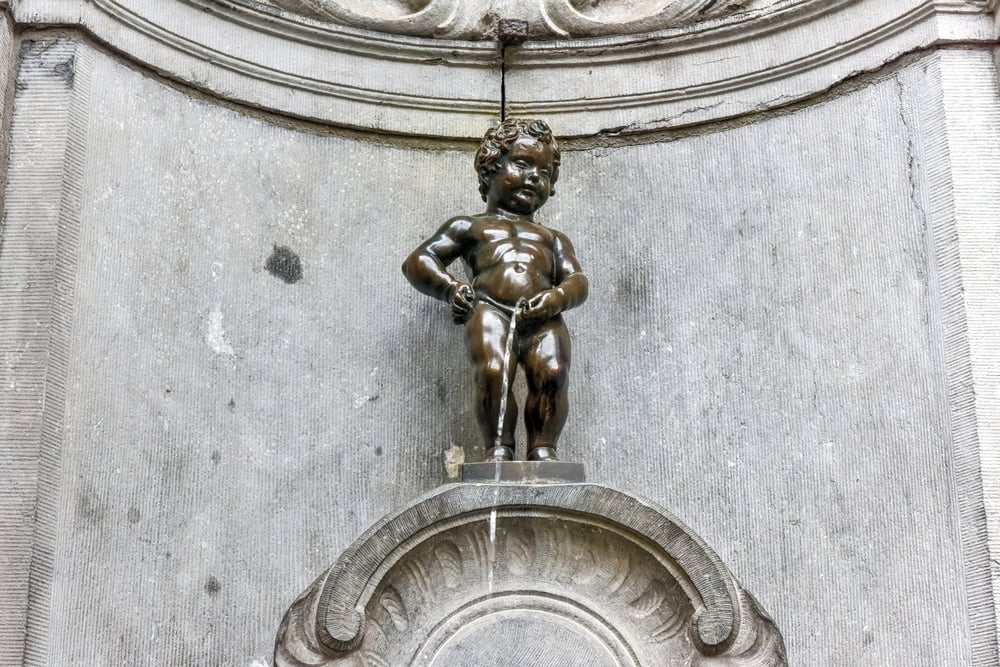
The Manneken Pis is a funny little statue of a young boy urinating into a fountain. While the statue is small, it plays a massive role in Brussels. The Manneken Pis is an iconic landmark of the city, and when taking yourself on a Brussels walking tour, stopping here is a must!
The Mannekin Pis statue dates back to the 17th century where it was designed by James Duquesnoy. This statue may be fun to look at, but finding it is half the adventure. On your way to the Manneken Pis, you will wander through some stunning little streets and lanes around the old town. This is a must-see sight when in Brussels!
Insiders Tip: If you enjoyed the Manneken Pis, you can find the famous trio of urinating statues in Brussels, including the Jeanneke Pis and Het Zinneke.
- How long should I spend here? Half an hour or less
- Getting there: Another 6-minute walk! Easy…
3:00 pm – Visit Choco-Story Brussels
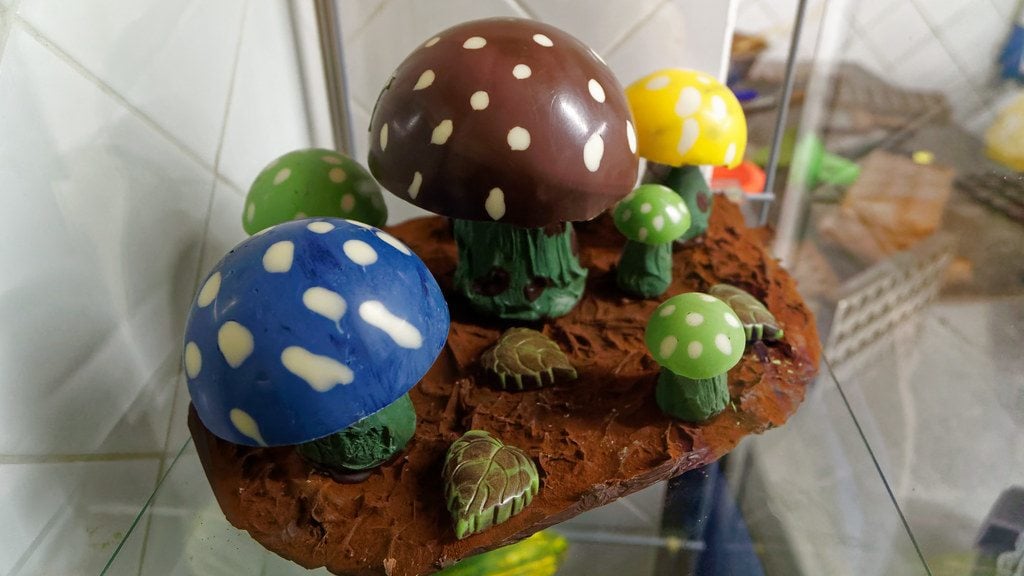
When visiting Brussels, eating is definitely going to be one of the highlights! Your itinerary for Brussels will be full of amazing food, with lots of chocolate included.
If you want to learn all about the famous and delicious chocolate of Belgium, visit the awesome Choco-Story. This is a small museum in the city dedicated to all things chocolate! When visiting, you will get to learn all about the history and heritage behind Belgian chocolate, as well as some good insight into the production!
Fun live demonstrations take place here, guided by a master chocolatier. There are also plenty of interesting exhibits. Of course, your trip will also involve tasting some amazing sweets!
- Cost: $15
- How long should I spend here? Around 2 hours
- Getting there: Just next to the last stop!
8:00 pm – Tackle a Belgian Beer Tasting Tour
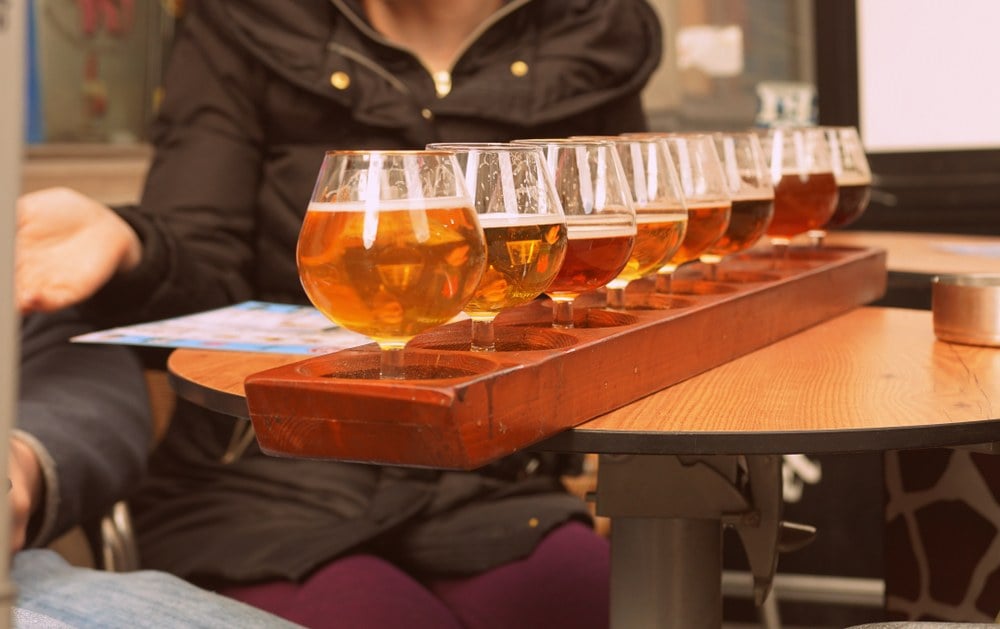
Visiting Belgium just wouldn’t be complete without sampling some of the country’s amazing beers. Consider taking a Belgian beer tasting tour to explore the interesting brews that this country has to offer!
Guided by a knowledgeable local, a beer tour will take you to some of the best bars that the city has to offer. These are historical old places, and as you sample the pruduce, you will learn all about the rich history and heritage behind the beers.
Your tour will teach you all about what many consider to be the world’s greatest beer culture. You will learn about the different Trappist beers, their history , and what makes them so unique.
This is a great tour to learn about a new side of Brussels culture, taste amazing and unique beers, see some fun places in the city, and meet new people! If you are a beer fan then a tour like this is a must during your Brussels itinerary.
- Cost: $$$
- How long should I spend here? All day, All night?
- Getting there: Different tours will start in different places. Make sure to double check!

Wanna know how to pack like a pro? Well for a start you need the right gear….
These are packing cubes for the globetrotters and compression sacks for the real adventurers – these babies are a traveller’s best kept secret. They organise yo’ packing and minimise volume too so you can pack MORE.
Or, y’know… you can stick to just chucking it all in your backpack…
Atomium | Mini Europe | Musical Instruments Museum | Royal Palace of Brussels | Museum of Fine Arts | Notre Dame Du Sablon
Spending a couple of days in Brussels will have you enjoying some of the best landmarks, gardens, museums, food, and experiences in the city! Here is your day two itinerary:
8:30 am – Experience The Atomium
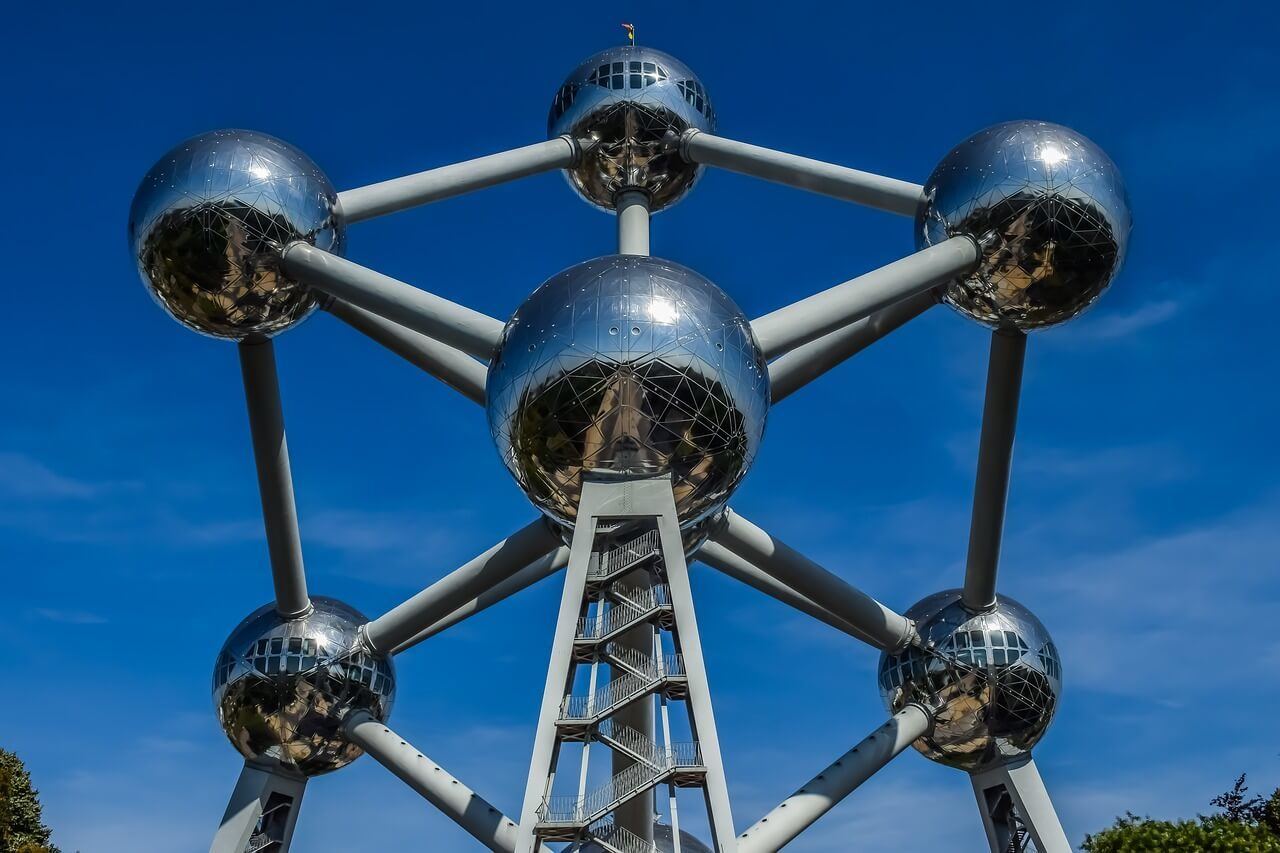
When looking at what to do in Brussels, a visit to the Atomium is a must! This massive atom shaped sculpture is found in the city’s Heysel Park. The sculpture stands at 100m tall, and it dates back to 1958.
You can get inside this huge structure and enjoy some amazing views from its glass roof lift. At the top, there is a brilliant spot to enjoy a drink or something to eat while inside the amazing Atomium!
When visiting this Brussels landmark, it is advised to take some time to explore the surrounding Heysel Park, as there is plenty to see here as well. Witnessing the enormous atom though will definitely be an unforgettable moment!
Insiders Tip: This Brussels attraction is very popular and it can get pretty busy, so try to arrive early if you want to avoid the crowds.
- Cost: $16
- How long should I spend here? Around an hour (unless you’re breakfasting at the top)
- Getting there: Take the tram! The number 3 will get you within reach from Grand Place.
10:00 pm – Take a Trip Through Mini Europe
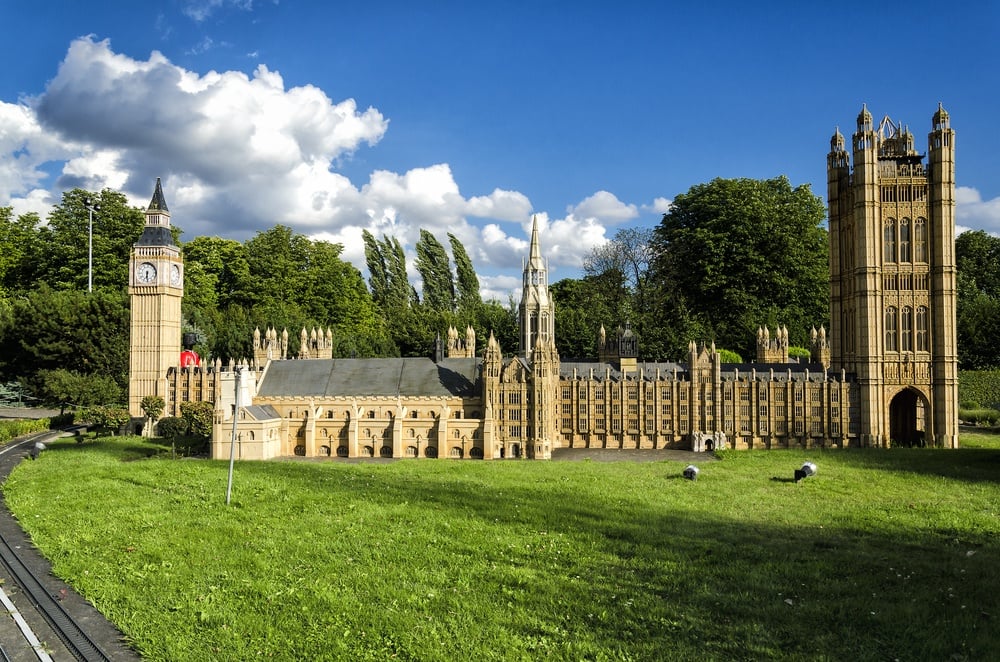
If you don’t have the time to travel across Europe, then adding a stop at Mini Europe to your Brussels itinerary is a good option! This park is a really fun place to experience Europe’s best and most famous landmarks, all built to scale in a miniature form.
Walking through Mini Europe is a unique thing to do when touring Brussels. Seeing all of the little landmarks really is such fun, and it is also really informative too!
Insiders Tip: This attraction is very child-friendly, and can be fun for the whole family!
- How long should I spend here? Around 1.5 hours
- Getting there: It’s just a short walk from the Atomium. They’re a real pair!
12:00 pm – Experience the Musical Instruments Museum
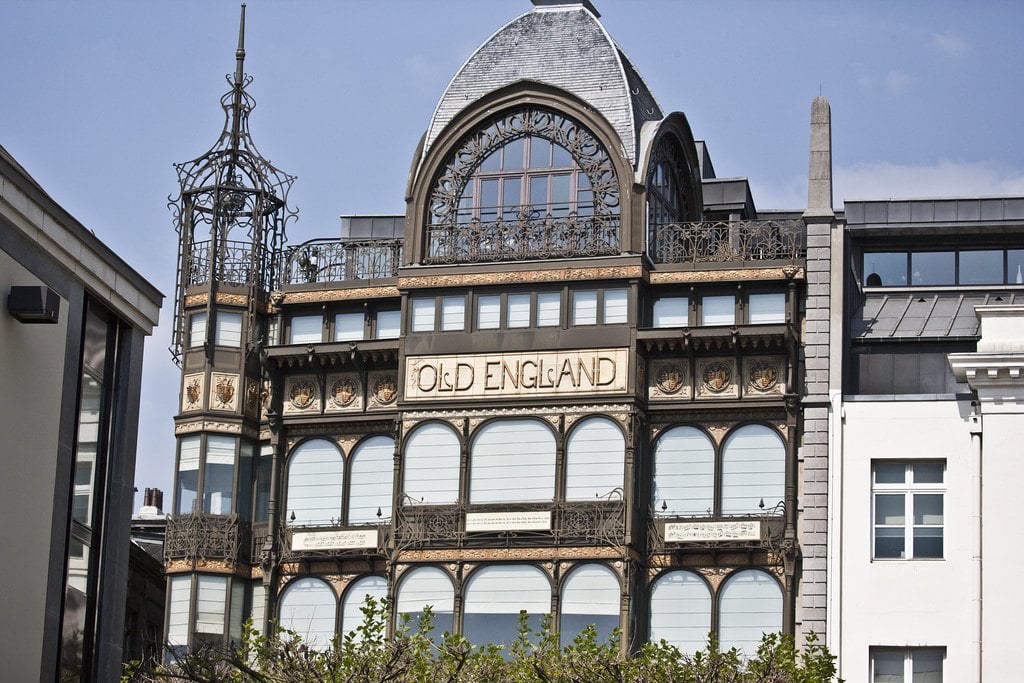
This art nouveau museum is housed in one of the most famous buildings in the city (the Old England Building). Many people are attracted to this museum for the fantastic building, but the museum itself has some interesting displays that are well worth the visit!
This museum is focused on musical instruments, and a stop here will show you so much on the subject! With over 8,000 instruments in the collection, you will get to see, hear, and witness all kinds of musical history. This is a unique and interesting stop to add to your Brussels itinerary!
- Getting there: Back to the centre! The number 6 metro will do it.
2:00 pm – Admire the Palais Royal (or Royal Palace)
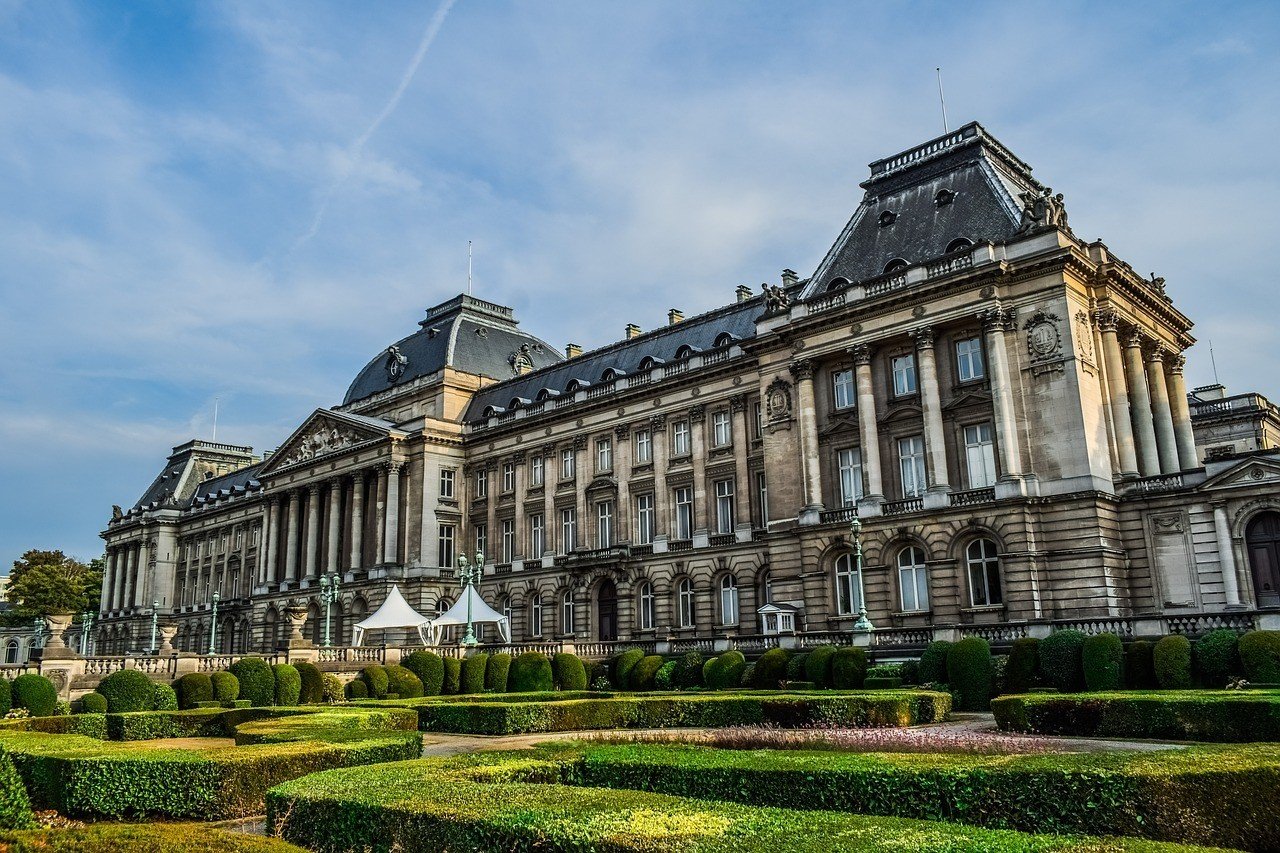
The Palais Royal is the official residence of the Belgian royal family, and it is a beautiful building to walk around and admire. The palace is open for exploring with no entrance fee, and it is definitely worth the visit!
Walking around here is a great way to take in one of the older and most stunning buildings in the city. It is also a really interesting place to learn about the history of Belgian royals.
Besides the building, the palace has an impressive royal garden. Spend some time exploring this area, and enjoying the royal side of Brussels!
- Getting there:
3:30 pm – Pay a Visit to the Musee Royaux Des Beaux-Arts
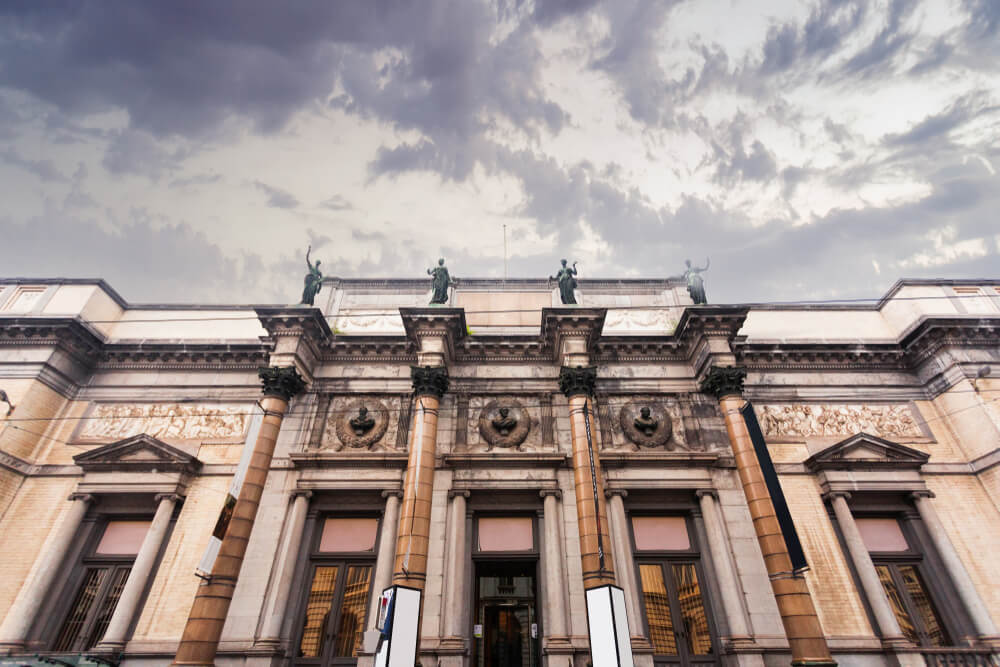
The Musée Royaux Des Beaux-Arts, or the Royal Museum of Fine Arts is a paradise for lovers of art and culture. This impressive museum houses some world-class art, spanning various collections of modern and ancient art!
Some of the most famous artists on display in this museum include Peter Rubens, Anthony Van Dyke, and Hans Memling. However, there are countless works of incredible European art that will have you awestruck!
This museum is pretty big, and there really is so much on display. If you love art, then be sure to allocate a good amount of time to this museum.
- Getting there: It’s just a short walk from the Royal Palace.
5:00 pm – Witness the Notre Dame Du Sablon
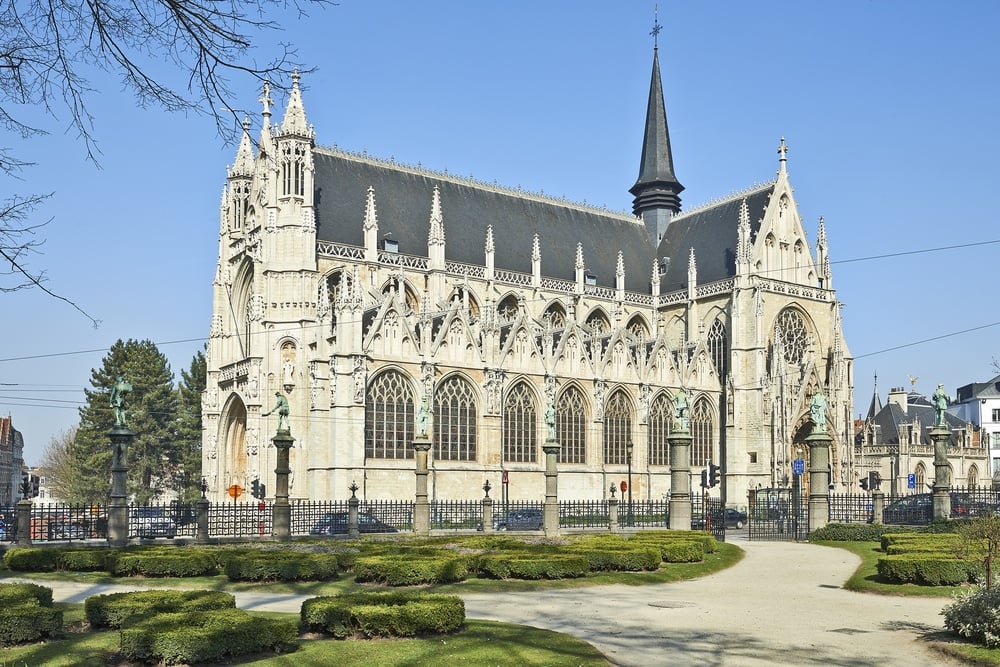
The spectacular Notre Dame Du Sablon cathedral is an important historic and architectural site in the city. Dating back to the 14th century, this cathedral is a really well-preserved example of Gothic architecture!
There was once a famous Madonna statue inside the cathedral that was supposed to have had incredible healing properties. The original statue was stolen by a team of thieves, and its whereabouts are still unknown. There is however a replica statue up in place.
This cathedral is a beautiful building to walk around and appreciate. A great stop to add to your Brussels itinerary! We’re sure that this is a long day, so take the evening to relax and chill out, or head to an amazing restaurant!
- How long should I spend here? Less than 1 hour
- Getting there: Walking!
Parc Du Cinquantenaire | Museum of Natural Science | Belgian Comic Strip Centre | Le Botanique
The final day. Here are some things that you will love doing on your last day in Brussels! There’s a big arch, some big dinosaurs, some big cartoons, and some big plants. A top day. Or you could sit in your sexy Brussels Airbnb .
9:00 am – Stroll Through the Parc Du Cinquantenaire
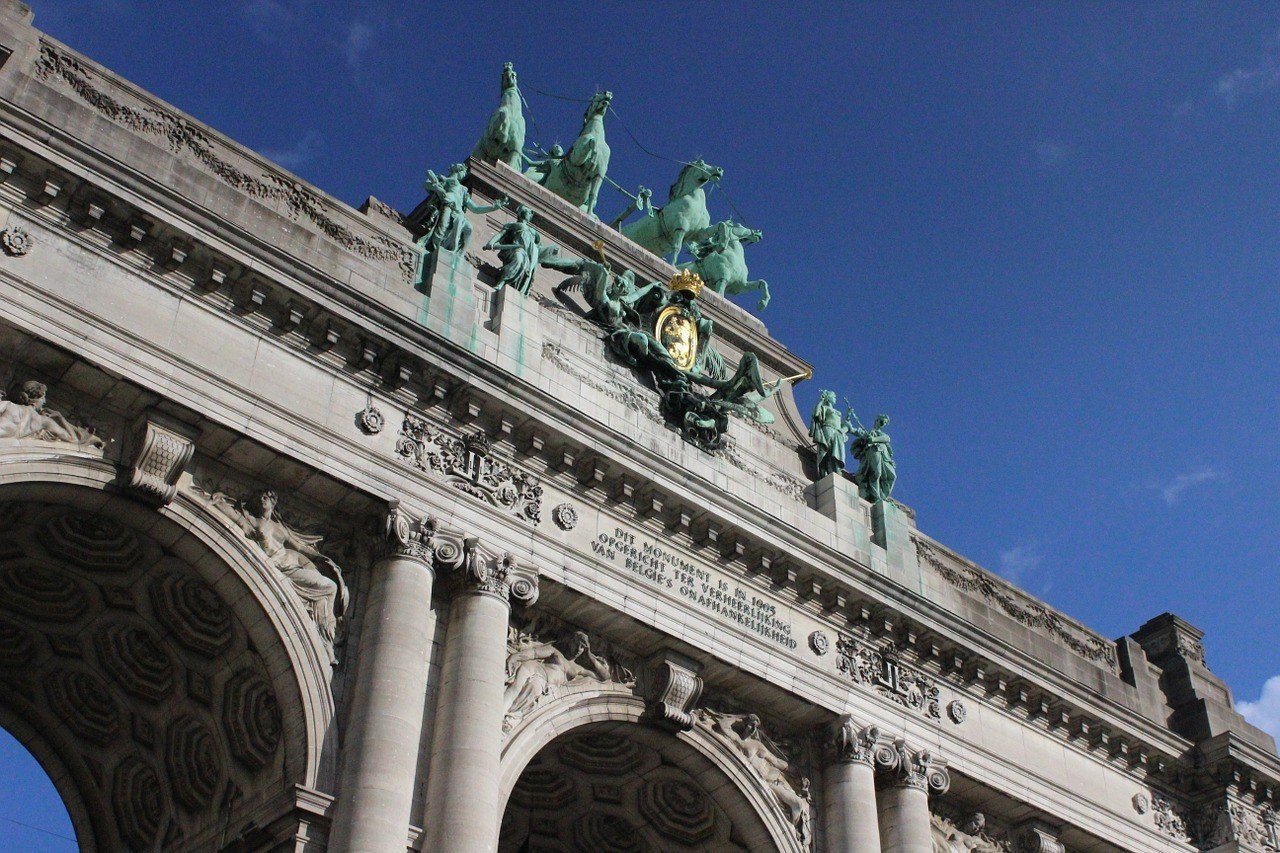
The Parc Du Cinquantenaire is a great addition to your Brussels itinerary for a number of reasons. You can visit this lovely green space to either take a break from the city, enjoy a picnic under a tree, marvel at the old architecture in the park, or visit some of the surrounding museums.
This park was built during the reign of King Leopold II, and it should be an essential stop on your trip to Brussels. Take some time to wander through the well-kept gardens, and enjoy the impressive arches and statues found in the park.
If you love history or art, then explore the surrounding museums. These are all world-class, and they cater to all kinds of interests. Collectively, these museums have a whopping 35,000 artefacts on display!
You can grab breakfast from a cafe or restaurant nearby (and coffee, although that kind of goes without saying). The Brussels Autoworld Museum is located inside too. Car fanatics, this means you!
Insiders Tip: Try to visit the Parc du Cinquantenaire on a sunny day, as relaxing under a tree on the grass here is a truly special experience.
- How long should I spend here? You could easily spend all day (don’t though). Try 1.5 hours.
- Getting there: Bus, Metro or Tram! It’s pretty easy to find!
11:00 am – Museum des Sciences Naturelles
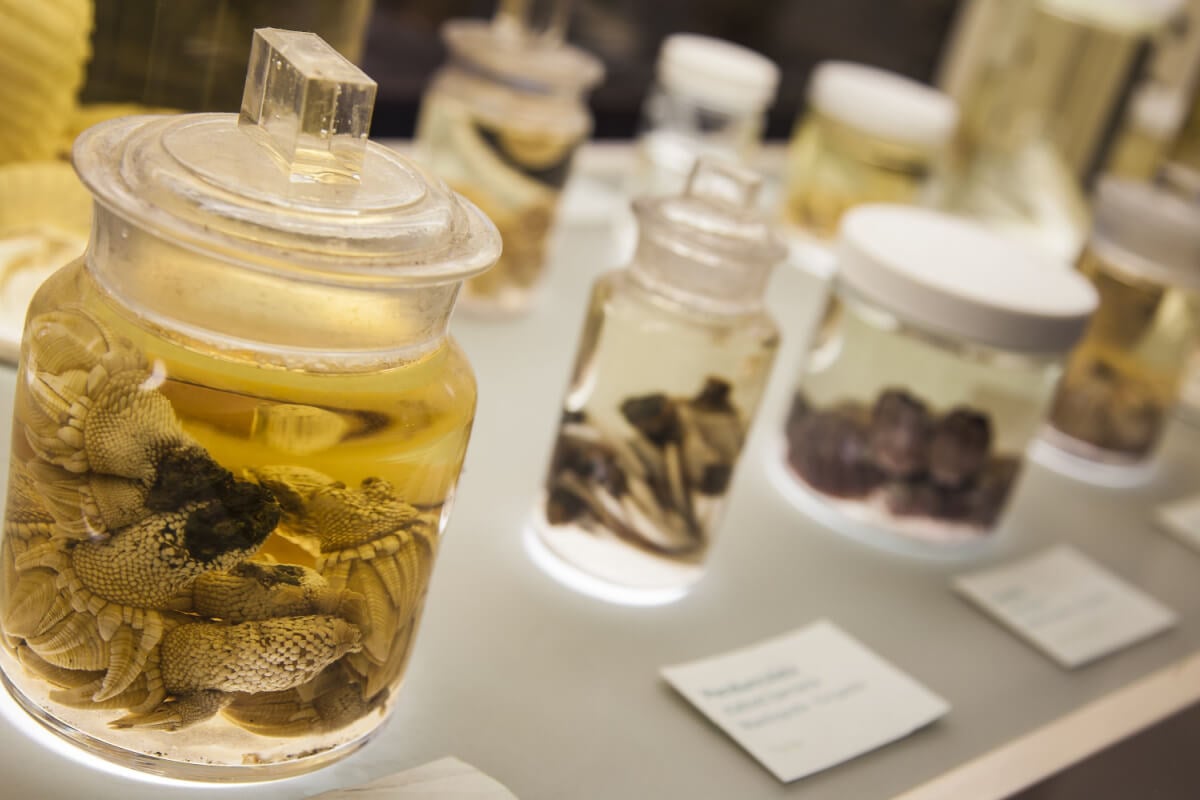
Are you interested in stepping into the largest dinosaur gallery in Europe? A mix of exciting temporary exhibits and carefully curated permanent ones? Then you’re going to want to head to the Brussels Museum of Natural Sciences!
This is a great thing to do with kids, who will love the history, reality, and interactive exhibits. In a city where many museums are rather static, this one is more hands-on and amusing. As a bonus, your children might even learn something, because it is all geared towards educating (yes, even you adults). It is a museum after all. The Museum of Natural Sciences is a great place to stop before lunch, which I’m sure you will be needing after the morning’s excitement!
- Cost: $14 (13 euros)
- Getting there: You can stroll over from the Parc du Cinquantenaire . It’s around a 15-minute walk, but it is a very pretty one.
2:30 pm – Visit the Belgian Comic Arts Museum
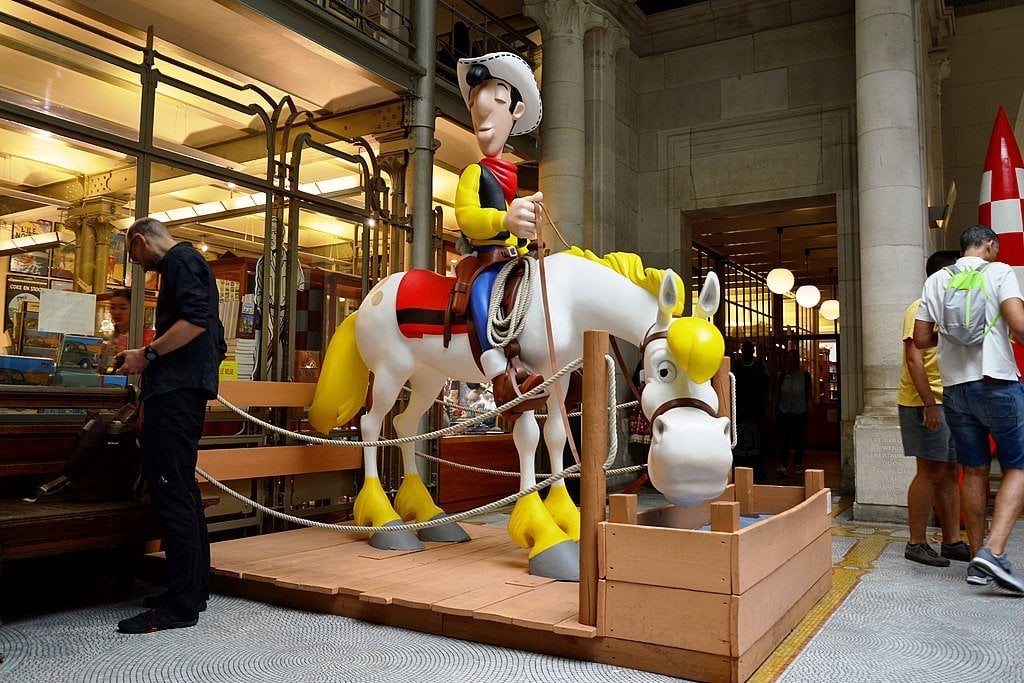
Before embarking on the afternoon of Day 3, you might want to return to the Brussels Grand Place for a bit of lunch. You’ve seen it once, how about twice?
Brussels has a fascinating history and culture, but many don’t realize that comic books have played a big role in this! If you want to explore a new side of Belgian and learn all about the interesting role of comic books in this country, then head to the Belgian Comic Strip Center.
This museum has some brilliant displays, all dedicated to comic books. You will get to see some really fun objects, as well as valuable comic books and collectables!
If you want to discover more about the importance of comic books to Brussels, take a walk through the city spotting the huge comic murals found on many buildings.
- Cost: $11
- Getting there: It’s half an hour’s walk from the Natural Science Museum. Definitely time for some lunch!
5:00 pm – Explore Le Botanique
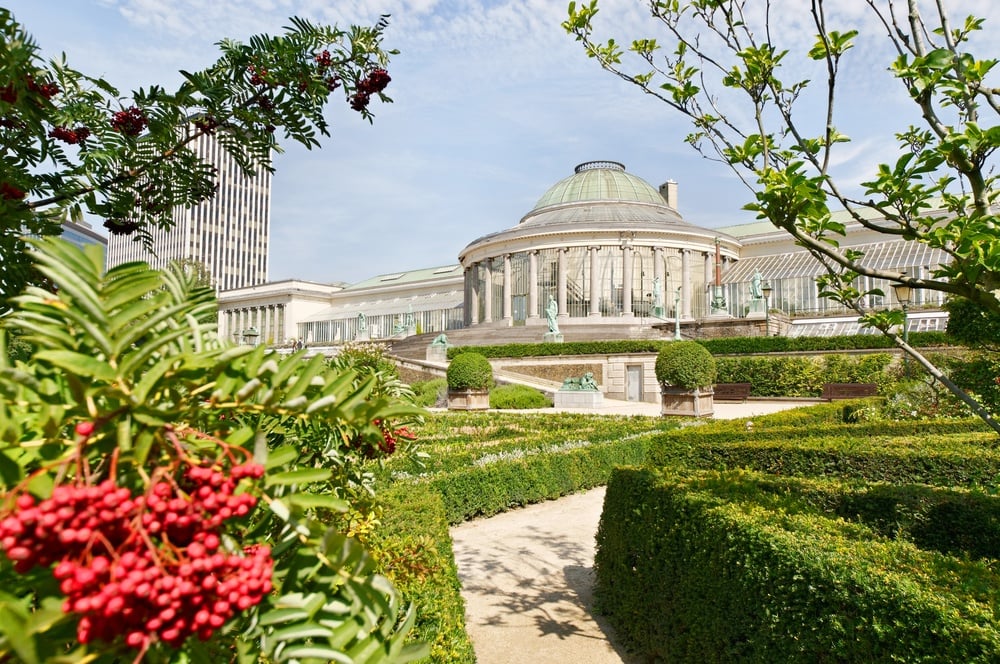
Le Botanique is the old botanical gardens of Brussels, now a stunning urban park! If the city is getting a bit much, this is the perfect place to quickly escape to for some greenery, peace, and quiet.
Le Botanique is a terraced park with many impressive gardens around it. There are some peaceful benches and playgrounds for the kids!
The old Greenhouse in the garden has been converted into a kind of cultural center, offering some brilliant performances and concerts at night. This can be a really fun thing to do in the evening.
Whether you come for the stunning terraced gardens, the quiet, or the fun greenhouse performances, Le Botanique is a lovely escape from the city.
Insiders tip: The museum here is well worth a visit, and it has constantly changing exhibitions. Be sure to check out what’s on before you visit!
- Cost: $6
- How long should I spend here? Around 1.5 hours.
- Getting there: Le Botanique is just a short walk from the Comics Art Museum
So you’re stuck in Brussels for three months while your family moves into the new house? Here are some extra things you can fill your time with, including some top-class Brussels day trips!
Take a Brussels Walking Tour
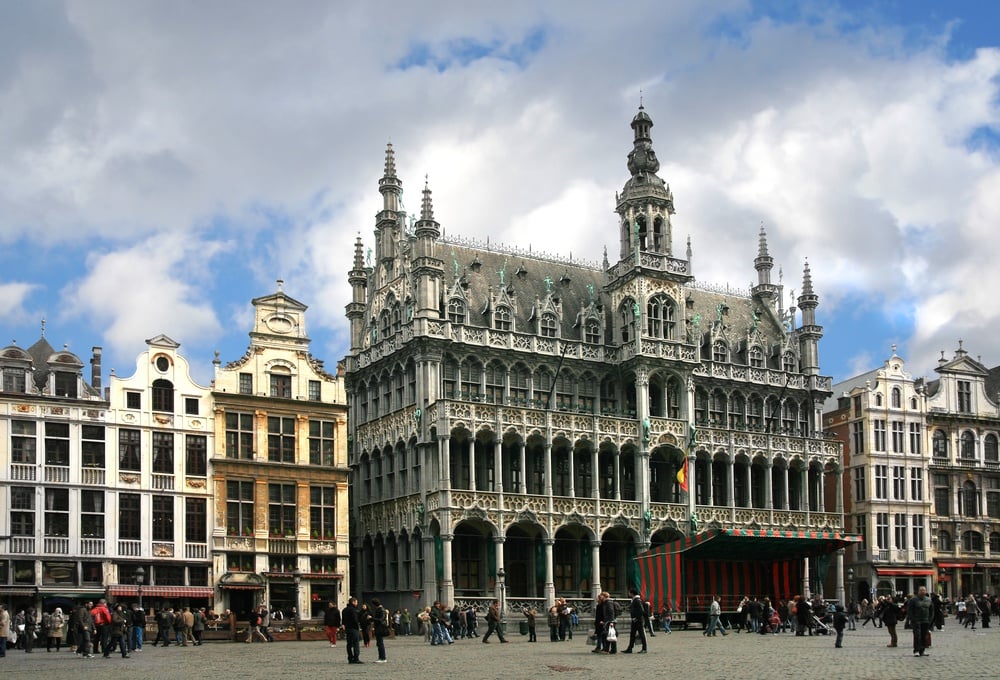
If you are planning a trip to Brussels, definitely consider taking part in one of the amazing walking tours which operate around the city. It’s one thing following a map around and guiding yourself, but when you are part of an informative tour you will see, learn and experience so much more!
Free walking tours of Brussels will teach you the interesting stories behind some of the city’s most famous monuments! You will get to witness many major landmarks up close, and you will be guided through it all by passionate and well-informed locals.
Besides history and architecture, you will also get to learn all about the local food and beer. As you walk along with your tour, you will pass many different street food stands and local delicacies!
If you’re spending a weekend in Brussels, adding a walking tour to your Brussels itinerary is a great way to really see most of the city!
- Cost: Around $20
- Getting there: Most Tours will leave from Grand Place
Enjoy the Brussels Nightlife
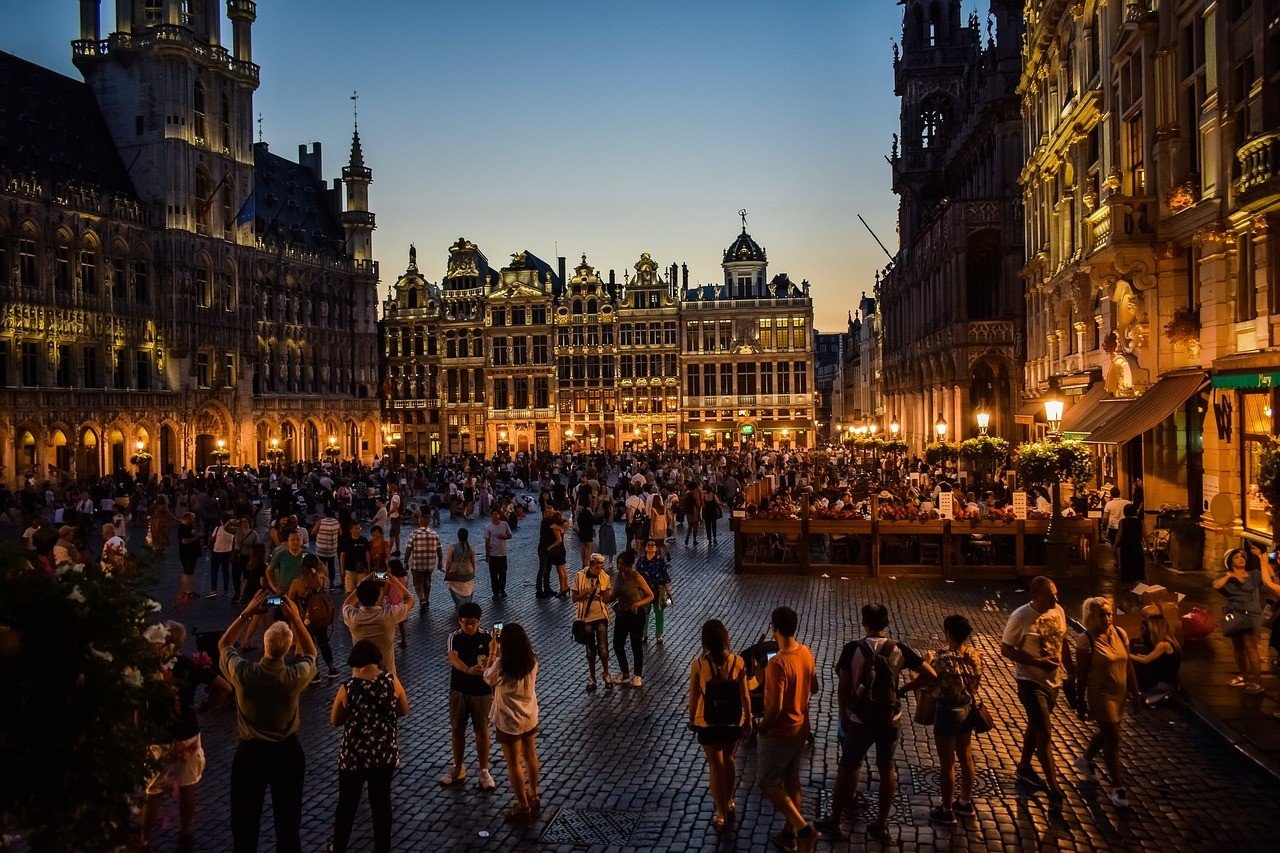
While Brussels is famous for its art, history, museums, and architecture, they still know how to party in this city! If you are looking for some exciting ways to fill out your Brussels itinerary, definitely consider diving into some of the vibrant nightlife in this city!
You could visit a central area such as the Grand Place to enjoy some popular bars, pubs, and fun local hangouts. This is a great place to meet loads of new people and see the city in a new light.
If you are looking for more of a dancing scene, then head out to Rue du Marche au Charbon. This area is famous for its exciting clubs and many super trendy bars!
Brussels is a city that has loads on offer- both during the day and by night. So, be sure to check out the nightlife here if you want to experience all that this city has to offer!
- Cost: $$$+
- How long should I spend here? Not a legitimate question here.
- Getting there: Rue du Marche au Charbon is where you want to be…!
Antwerp Day Trip From Brussels
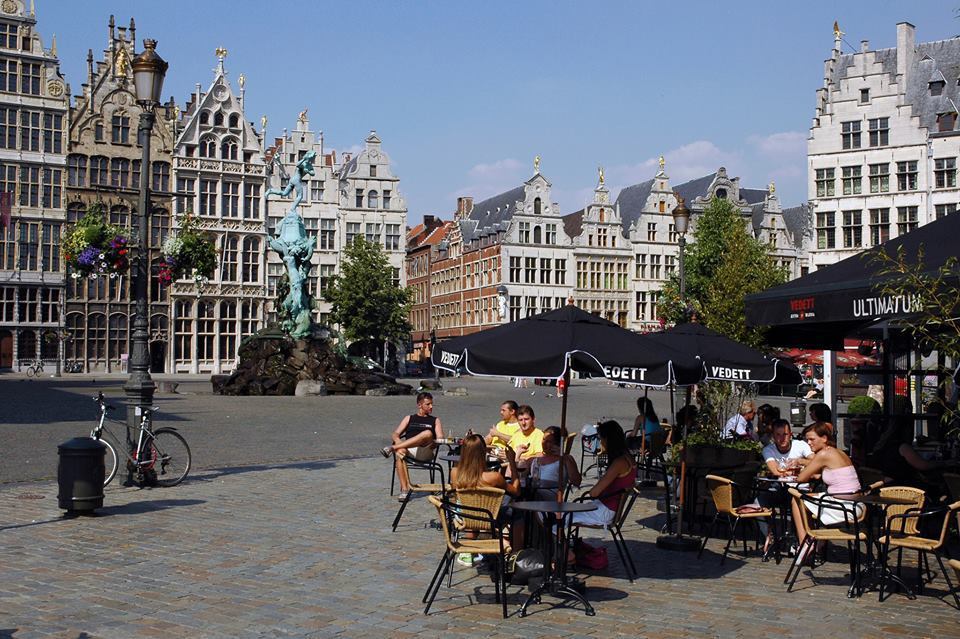
Brussels is an amazing city, but if you have the time, why not explore more of Belgium? This day trip from Brussels takes you to Antwerp- one of the most loved cities in this country.
Antwerp is famous for being the fashion capital of Belgium, and is often referred to as “Belgium’s Diamond.” Your day trip will take you through the many important areas of Antwerp, including the diamond district where you will learn all about the diamond history and the cutting process.
You will get to see a palace, an amazing cathedral, famous houses, museums, the Scheldt River, and more! Of course, there will be time to explore the beautiful streets of Antwerp, do some shopping, and enjoy an unforgettable meal here.
- How long should I spend here? A day?
- Getting there: Train! It is the best way.
Bruges Full-Day Guided Tour
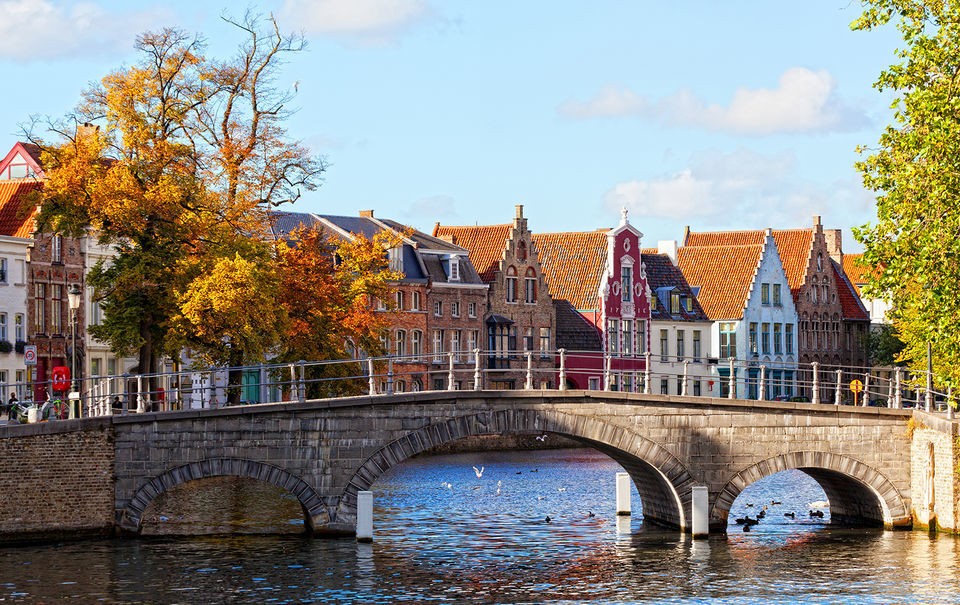
Another spectacular destination in Belgium that is well worth a visit (if you have time), is Bruges. Often referred to as “Venice of the North”, Bruges is a medieval town that boasts incredible canals, old buildings, cobbled streets, and plenty of charm!
This full-day trip from Brussels includes a 4-hour walking tour through Bruges. Guided by a knowledgeable local. You will get to see some of the top attractions and points of interest in Bruges and will gain a better understanding of this town through your expert guide.
The tour includes return train tickets to Bruges from Brussels!
- Getting there: Train! It is the best way!
While your trip to Brussels can be enjoyed all year round, this city does have its more appealing times to visit. Belgium experiences all four seasons pretty distinctly, so choose your visiting time wisely as the weather may impact your trip. Bear in mind that Brussels does experience rain all year round, so be prepared for potential rain during your Brussels itinerary no matter what time you visit!
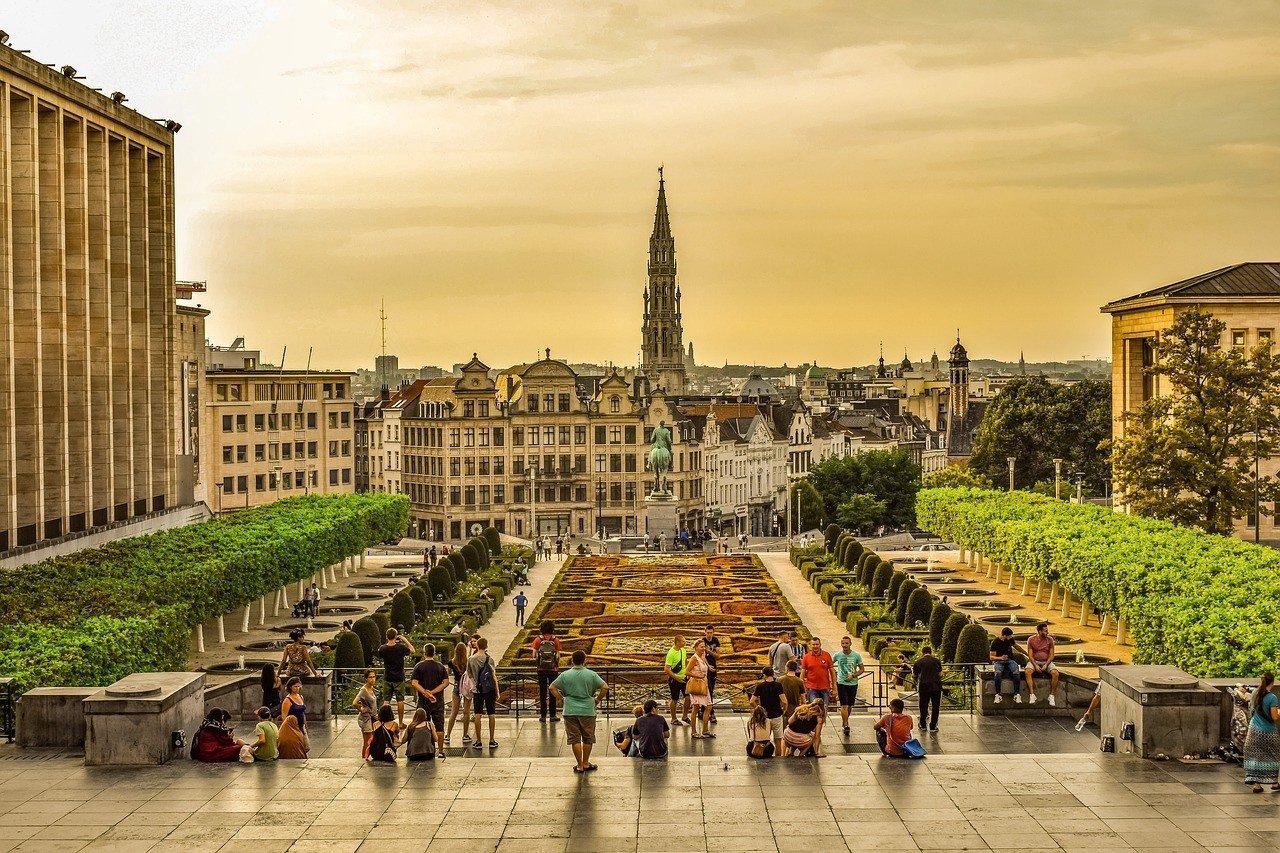
Wondering when to visit Brussels? The best time to visit this city would be between March to May and September to October. These times are considered the shoulder seasons when the crowds of tourists are fewer, the prices are lower, but the weather is still great!
Some may prefer to place their Brussels trip itinerary around December to experience the wintery charms of the city, while others would opt for visiting in April when there is the least rain. No matter what time you plan your vacation in Brussels, you will be able to enjoy this city in a beautiful and unique way!
Before you start planning exactly what you will be doing in Belgium’s capital city, it is important to know how you will be getting around. Luckily, Brussels is really easy to navigate. The excellent public transport here makes it exceedingly easy to get around!
If you are based around the central part of the city, the best way to get around is by walking! Simply wandering through the streets here is one of the best things to do during your Brussels itinerary as this city is so beautiful! Many of the best things to see here are best appreciated while walking, and many of the main attractions are within close proximity of each other.
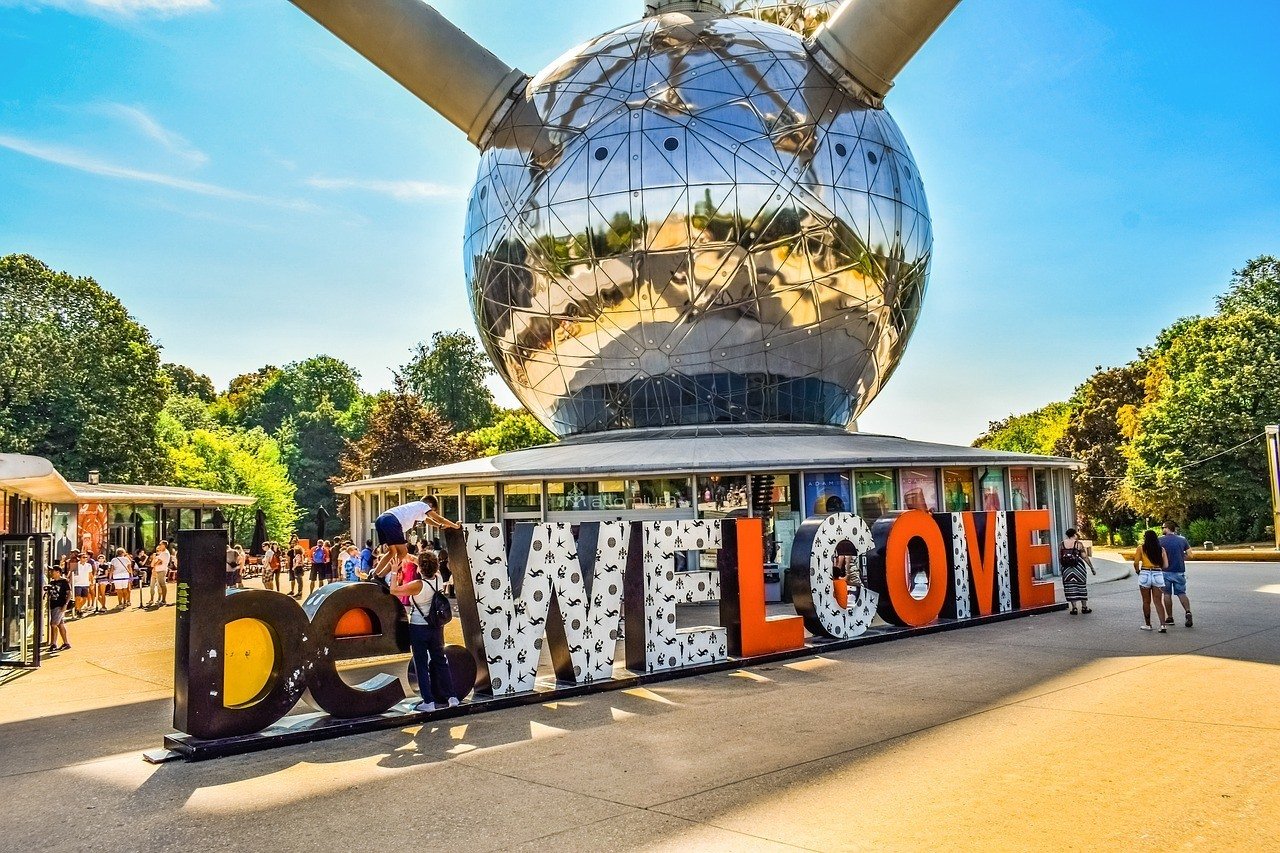
If you plan on travelling further distances though, there is an excellent metro system in Brussels. This is an affordable way of getting around, and it is also highly efficient. This city also has a solid bus network that is even more affordable. Trains are also a good option for longer distances!
Taking a taxi is also easy to do in Brussels! You can either grab one of the many cabs that drive around the city or use Uber to easily find a ride. Brussels is a great safe city too!
Now that you know how to get around, it’s time to start planning the ultimate Brussels itinerary!
Don’t Forget Your Travel Insurance for Brussels
ALWAYS sort out your backpacker insurance before your trip. There’s plenty to choose from in that department, but a good place to start is Safety Wing .
They offer month-to-month payments, no lock-in contracts, and require absolutely no itineraries: that’s the exact kind of insurance long-term travellers and digital nomads need.

SafetyWing is cheap, easy, and admin-free: just sign up lickety-split so you can get back to it!
Click the button below to learn more about SafetyWing’s setup or read our insider review for the full tasty scoop.
Here’s what people usually ask us when they’re planning a trip to Brussels.
How many days in Brussels is enough?
Since I’ve written a top-tier 3-day Brussel Itinerary, I’d say you need at least 3 days to explore Brussels fully. You can cover most of the well-known activities in 2 days if you really push it, but to get a true sense of the city, that third day is extra important!
Is one day enough to see Brussels?
One day in Brussels only allows you to see a few attractions, but it’s definitely not enough to get a proper grasp of the city. If you only have one day, plan ahead so you don’t waste any time. You can definitely cover the Grand Place and the Atomium, but you won’t be able to slow down and actually enjoy the city so much.
What Should I Include in a 3-Day Brussels Itinerary?
A good 3-day Brussels Itinerary should include Grand Place, an investigation of both Belgian chocolate and Belgian beer, the Atomium, Mini Europe, the Museum of Natural Science, and the Brussels Royal Palace. If you have time, head to the Belgian Comic Strip Center, City Hall, and the Art and History Museum.
What Should I Include on a Day Trip to Brussels?
Don’t miss Grand Place (and all of its surroundings), the Mont Des Arts Gardens, the Royal Palace, the Atomium and Mini Europe. If you can do all these in a single day, I will be seriously impressed! Brussels is awesome, and you should really think about compiling that perfect 1-day Itinerary!
Brussels is a magical city with so many amazing activities to discover! Whether you come for the art and culture, the world-class museums, the incredible architecture, or the unbelievable food, this city will have you dreaming of your return!
Of all of the amazing things to do during your Brussels itinerary, one of the best things is to just walk around the city’s charming old streets and appreciate the stunning surroundings. There is such a unique charm that can be found in Brussels, and it is a place that you really can’t compare to anywhere else!
I hope that my ultimate Brussels itinerary helps you to make the most out of your trip to Belgium’s capital. I love visiting Brussels and am sure that you will too. Happy travelling!
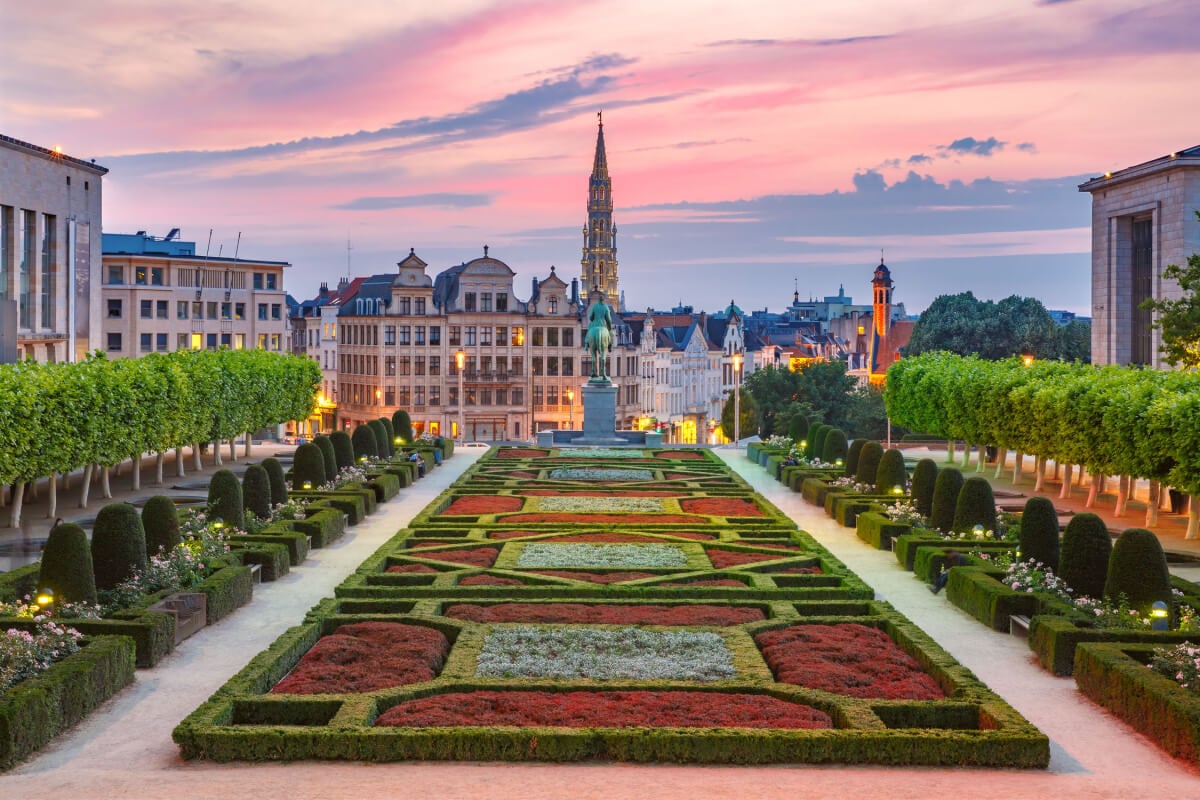
And for transparency’s sake, please know that some of the links in our content are affiliate links . That means that if you book your accommodation, buy your gear, or sort your insurance through our link, we earn a small commission (at no extra cost to you). That said, we only link to the gear we trust and never recommend services we don’t believe are up to scratch. Again, thank you!
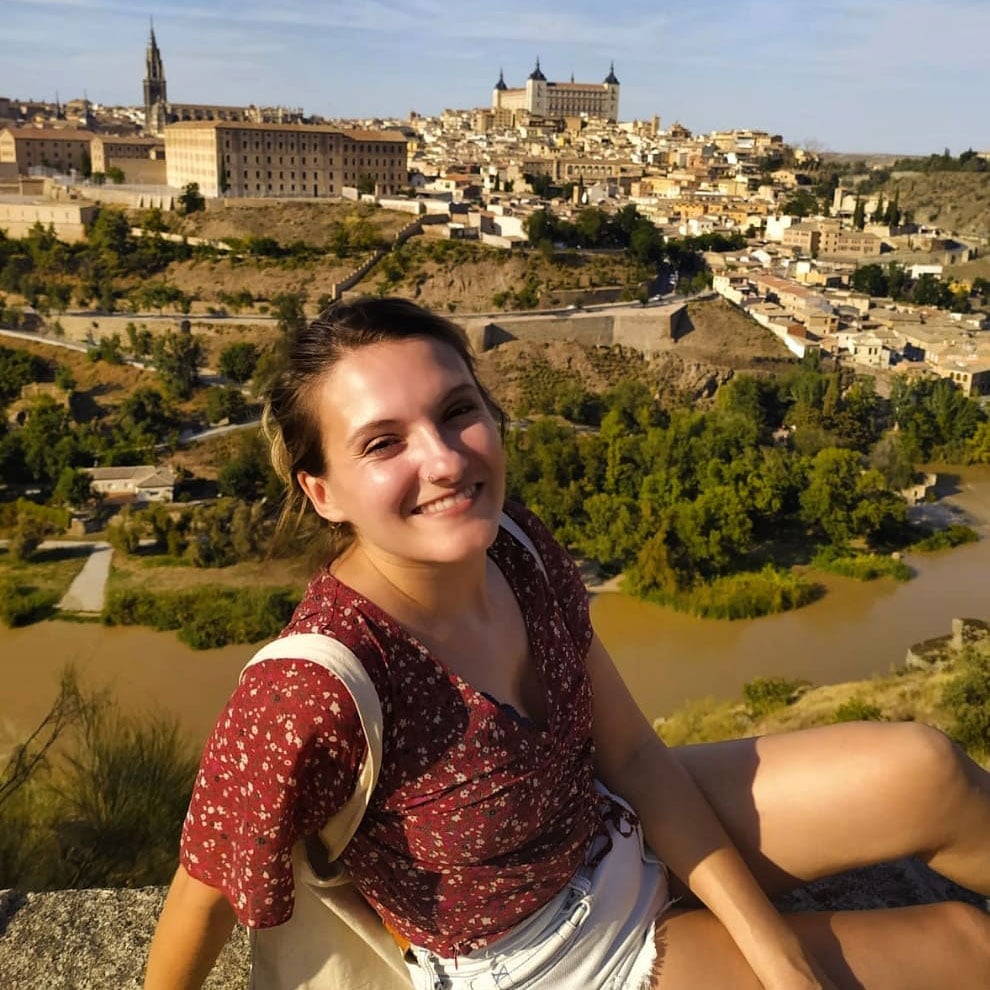
Mathilde Magnier
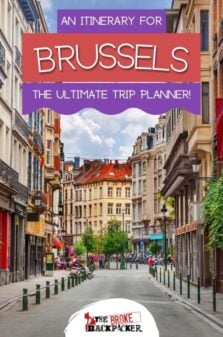
Share or save this post

Leave a Reply Cancel reply
Your email address will not be published. Required fields are marked *
Save my name, email, and website in this browser for the next time I comment.
Notify me of followup comments via e-mail.
Brussels Travel Guide
Book your individual trip , stress-free with local travel experts
- roughguides.com
- Travel guide
- Local Experts
- Travel Advice
Accommodation
Plan your tailor-made trip with a local expert
Book securely with money-back guarantee
Travel stress-free with local assistance and 24/7 support
Wherever else you go in Belgium, allow at least a little time for BRUSSELS , which is undoubtedly one of Europe’s premier cities. Certainly, don’t let its unjustified reputation as a dull, faceless centre of EU bureaucracy deter you: in postwar years, the city has become a thriving, cosmopolitan metropolis, with top-flight museums and architecture (including a well-preserved late seventeenth-century centre), a superb restaurant scene and an energetic nightlife. Moreover, most of the key attractions are crowded into a centre that is small enough to be absorbed over a few long days, its boundaries largely defined by a ring of boulevards – the “petit ring”, or less colloquially, the “petite ceinture”.
Around Brussels: Waterloo
Bilingual brussels, the brussels card, east of the centre: the eu quarter and le cinquantenaire, eating and drinking, the grand-place, guided tours, the lower town, nightlife and entertainment, north of the centre: jette, laeken and heysel, south of the centre: st-gilles, avenue louise and ixelles, train station names, the upper town.
First-time visitors to Brussels are often surprised by the raw vitality of the city centre. It isn’t neat and tidy, and many of the old tenement houses are shabby and ill-used, but there’s a buzz about the place that’s hard to resist. The city centre is divided into two main areas. The larger westerly portion comprises the Lower Town , fanning out from the marvellous Grand-Place , with its exquisite guildhouses and town hall, while up above, on a ridge to the east, lies the much smaller Upper Town , home to the finest art collection in the country in the Musées Royaux des Beaux Arts.
Since the eleventh century, the ruling elite has lived in the Upper Town, keeping a beady eye on the workers and shopkeepers down below – a state of affairs that still – in part – remains. In recent times, this fundamental class division, so obvious in the layout of the centre, has been further complicated by discord between Belgium’s two main linguistic groups, the Walloons (the French-speakers) and the Flemings (the Dutch- or Flemish-speakers), and to add to the communal stew, these two groups now share their city with many others, including EU civil servants and immigrants from North and Central Africa, Turkey and the Mediterranean. Each of these communities tends to live a very separate, distinct existence, and Brussels’ compact nature heightens the contrasts: in five minutes you can walk from a chichi shopping mall into an African bazaar, or from a depressed slum quarter to a resplendent square of antique shops and exclusive cafés. This is something that increases the city’s allure, not least by way of the sheer variety of affordable cafés and restaurants – Brussels is a wonderful place to eat, its gastronomic reputation rivalling that of Paris. It’s also a great place to drink, with bars ranging from designer chic to rough and ready with everything in between.
The city’s specialist shops are another pleasure. Everyone knows about Belgian chocolates, but here in the capital there are also huge open-air markets, contemporary art galleries and establishments devoted to anything from comic books to costume jewellery and clubland fashion. Furthermore, Belgium is such a small country, and the rail network so fast and efficient, that Brussels also makes the perfect base for a wide range of day-trips. An obvious target is the battlefield of Waterloo , one of the region’s most visited attractions.
Brief history
Brussels takes its name from Broekzele, or “village of the marsh”, the community which grew up beside the wide and shallow River Senne in the sixth century, allegedly around a chapel built here by St Géry, a French bishop turned missionary. A tiny and insignificant part of Charlemagne’s empire at the end of the eighth century, it was subsequently inherited by the dukes of Lower Lorraine (or Lotharingia – roughly Wallonia and northeast France), who constructed a fortress here in 979. Protected, the village benefited from its position on the trade route between Cologne and the burgeoning towns of Bruges and Ghent to become a significant trading centre in its own right. The surrounding marshes were drained to allow for further expansion, and in 1229 the city was granted its first charter by the dukes of Brabant , the new feudal overlords who controlled things here, on and off, for around two hundred years. In the early fifteenth century, marriage merged the interests of the Duchy of Brabant with that of Burgundy, whose territories passed to the Habsburgs in 1482 when Mary, the last of the Burgundian line, died; she was succeeded by her husband, Maximilian I, who was anointed Holy Roman Emperor in 1494.
The first Habsburg rulers had close ties with Brussels, and the Emperor Charles V (1519–55) ran his vast kingdom from the city for over a decade, making it wealthy and politically important in equal measure. By contrast, his successor Philip II (1527–98) lived in Spain and ruled through a governor (for the whole of the Low Countries) resident in Brussels. It could have been a perfectly reasonable arrangement, but Philip’s fanatical Catholicism soon unpicked the equilibrium. Horrified by the Protestant leanings of many of his Low Country subjects, the king imposed a series of anti-Protestant edicts, and when these provoked extensive rioting , he dispatched an army of ten thousand men – led by a hardline reactionary, the Duke of Albe – to crush his opponents in Brussels absolutely. Albe quickly restored order and then, with the help of the Inquisition, set about the rioters with gusto, his Commission of Civil Unrest soon nicknamed the “ Council of Blood ” after its habit of executing those it examined. Goaded into rebellion by Albe’s brutality, Brussels, along with much of the Low Countries, exploded in revolt, and in 1577, the one-time protégé of the Habsburgs, William the Silent , made a triumphant entry into the city and installed a Calvinist government. Protestant control lasted for just eight years, before Philip’s armies recaptured Brussels – and the king wasn’t a man to forgive and forget. Seeing which way the religious wind was blowing, hundreds of Protestants left the city and the economy slumped, though complete catastrophe was averted by the conspicuous consumption of the (Brussels-based) Habsburg elite, whose high spending kept hundreds of workers in employment. Brussels also benefited from the digging of the Willebroek Canal, which linked it to the sea for the first time in its history in 1561.
By the 1580s, the Habsburgs had lost control of the northern part of the Low Countries (now the Netherlands) and Brussels was confirmed as the capital of the remainder, the Spanish Netherlands (broadly modern Belgium). Brussels prospered more than the rest of the country, but it was always prey to the dynastic squabbling between France and Spain: in 1695, for example, Louis XIV bombarded Brussels for 36 hours merely to teach his rivals a lesson, though the guilds , those associations of skilled merchants and workers who were crucial to the economy of Brussels, rebuilt their devastated city in double time, and it’s this version of the Grand-Place that survives today.
In 1700 Charles II, the last of the Spanish Habsburgs, died without issue. The ensuing War of the Spanish Succession dragged on for over a decade, but eventually the Spanish Netherlands were passed to the Austrian Habsburgs, who ruled – as had their predecessors – through a governor based in Brussels. It was during this period as capital of the Austrian Netherlands (1713–94) that most of the monumental buildings of the Upper Town were constructed and its Neoclassical avenues and boulevards laid out – grand extravagance in the context of an increasingly industrialized city crammed with a desperately poor working class.
The French Revolutionary army brushed the Austrians aside at the Battle of Fleurus in 1794, and the Austrian Netherlands promptly became a département of France. This lasted until the defeat of Napoleon when, under the terms of the Congress of Vienna which ended hostilities, the great powers decided to absorb the country into the new Kingdom of the Netherlands , ruled by the Dutch King William I. Brussels took turns with The Hague as the capital, but the experiment was short-lived, and in 1830 a Brussels-led rebellion removed the Dutch and led to the creation of an independent Belgium with Brussels as capital.
The nineteenth century was a period of modernization and expansion, during which the city achieved all the attributes of a modern European capital under the guidance of Burgomaster Anspach and King Léopold II . New boulevards were built; the free university was founded; the Senne – which by then had become an open sewer – was covered over in the city centre; many slum areas were cleared; and a series of grand buildings were erected. The whole enterprise culminated in the golden jubilee exhibition celebrating the founding of the Belgium state in the newly inaugurated Parc du Cinquantenaire.
Following the German occupation of Belgium in World War II, the modernization of Brussels has proceeded inexorably, with many major development projects – not least the new métro system – refashioning the city and reflecting its elevated status as the headquarters of both NATO and the EU.
Top image © Sira Anamwong/Shutterstock
Tailor-made travel itineraries for Belgium, created by local experts

8 days / from 2782 USD
The best of the Netherlands and Belgium
This trip will bring you the best of two countries: the Netherlands and Belgium. From the quaint streets, canals and windmills of Holland to beer and Belgium chocolate tasting in three beautiful Belgium cities. This trip has it all.

9 days / from 2996 USD
Experience the Liberation Route in BeNeLux
Explore the path of the World War II Liberation Route through Belgium, Luxembourg and the Netherlands. Visit important landmarks and museums on the way with this self drive itinerary, with enough time to explore cities such as Brussels and Rotterdam on the way.

10 days / from 5564 USD
Taste of Three - Belgium, France and Switzerland
Start your journey in Belgium and explore Brussels, Ghent and Bruges. A high-speed train will then take you to Strasbourg, from where you'll discover the Alsace. Proceed to Basel as your base, from where you'll see plenty of Switzerland: Zermatt, Matterhorn, Mount Pilatus and much more.
With over seventy hotels dotted within its central ring of boulevards, Brussels has no shortage of convenient places to stay, but even so finding hotel accommodation can still prove difficult, particularly in the spring and autumn when the capital enjoys what amounts to its high seasons – July and August are much slacker as the business trade dips when the EU (pretty much) closes down for its summer recess. The same cautions apply to the city’s B&Bs , though these are thin on the ground. If you do opt for a B&B, don’t expect UK-style hospitality – in effect you get a self-contained room in a private house – but do expect to be on the peripheries of town, a good way from the action. The city has half a dozen hostels , of which we have listed the best options.
At peak times, it’s prudent to reserve a bed at least for your first night, but if you do arrive with nowhere to stay, the city’s two main tourist offices operate a free same-night hotel booking service . Hotel prices vary hugely. Many have both deluxe and more standard rooms, with charges adjusted accordingly, and regular special and weekend discounts bring prices down by about fifteen percent, with some places occasionally halving their rates.
Brussels lies at the centre of Brabant , one of Belgium’s nine provinces. The Flemings claim the lion’s share of the province with their Vlaams Brabant (Flemish Brabant) actually encircling the capital – a noticeably narrow corridor of Flemish-speaking communities runs round the southern edge of Brussels. WATERLOO is easily the most popular attraction in Brabant Wallon (French-speaking Brabant) and is best seen on a day-trip from the capital. A run-of-the-mill suburb about 18km south of the centre of Brussels, the town has a resonance far beyond its size. On June 18, 1815, at this small crossroads town on what was once the main route to Brussels from France, Wellington masterminded the battle that put an end to the imperial ambitions of Napoleon. The battle turned out to have far more significance than even its generals realized, for not only was this the last throw of the dice for the formidable army born of the French Revolution, but it also marked the end of France’s prolonged attempts to dominate Europe militarily.
Nevertheless, the historic importance of Waterloo has not saved the battlefield from interference – a motorway cuts right across it – and if you do visit you’ll need a lively imagination to picture what happened and where – unless, that is, you’re around to see the large-scale re-enactment which takes place every five years in June; the next one is scheduled for 2015. Scattered round the battlefield are several monuments and memorials, the most satisfying of which is the Butte de Lion , a huge earth mound that’s part viewpoint and part commemoration. The battlefield is 3km south of the centre of Waterloo, where the Musée Wellington is easily the pick of several Waterloo museums.
The battlefield – Le Hameau de Lion
Some 4km south of town, the Waterloo battlefield is a landscape of rolling farmland, interrupted by a couple of main roads and more pleasingly punctuated by the odd copse and farmstead. The ridge where Wellington once marshalled his army now holds a motley assortment of attractions collectively known as Le Hameau du Lion (Lion’s Hamlet). This comprises four separate sites all within a few metres of each other, with the added offering of a 45-minute battlefield tour in a four-wheel-drive. Of the four sites, the worst are the Centre du Visiteur , which features a dire audiovisual display on the battle, and the Musée de Cires (same hours), a dusty wax museum. The best is the 100m-high Butte de Lion (same hours), built by local women with soil from the battlefield. The Butte marks the spot where Holland’s Prince William of Orange – one of Wellington’s commanders and later King William II of the Netherlands – was wounded. It was only a nick, so goodness knows how high it would have been if William had been seriously injured, but even so the mound is a commanding monument, surmounted by a regal 28-tonne lion atop a stout column. From the viewing platform, there’s a panoramic view over the battlefield, and a plan identifies which army was where. Also enjoyable is the Panorama de la Bataille (same hours), where a circular, naturalistic painting of the battle, on a canvas no less than 110m in circumference, is displayed in a purpose-built, rotunda-like gallery – to a thundering soundtrack of bugles, snorting horses and cannon fire. Panorama painting is extremely difficult – controlling perspective is always a real problem – but it was very much in vogue when the Parisian artist Louis Dumoulin began this effort in 1912. Precious few panoramas have survived and this one is a bit past its best, but it does at least give a sense of the battle. You can also venture out onto the battlefield under your own steam by following the old track that cuts south across the fields from beside the Panorama.
The Battle of Waterloo
Napoleon escaped from imprisonment on the Italian island of Elba on February 26, 1815. He landed in Cannes three days later and moved swiftly north, entering Paris on March 20 just as his unpopular replacement – the slothful King Louis XVIII – high-tailed it to Ghent. Thousands of Frenchmen rallied to Napoleon’s colours and, with little delay, Napoleon marched northeast to fight the two armies that threatened his future. Both were in Belgium. One, an assortment of British, Dutch and German soldiers, was commanded by the Duke of Wellington , the other was a Prussian army led by Marshal Blücher . At the start of the campaign, Napoleon’s army was about 130,000 strong, larger than each of the opposing armies but not big enough to fight them both at the same time. Napoleon’s strategy was, therefore, quite straightforward: he had to stop Wellington and Blücher from joining together – and to this end he crossed the Belgian frontier near Charleroi to launch a quick attack. On June 16, the French hit the Prussians hard, forcing them to retreat and giving Napoleon the opportunity he was looking for. Napoleon detached a force of 30,000 soldiers to harry the retreating Prussians, while he concentrated his main army against Wellington, hoping to deliver a knockout blow. Meanwhile, Wellington had assembled his troops at Waterloo , on the main road to Brussels.
At dawn on Sunday June 18 , the two armies faced each other. Wellington had some 68,000 men, about one third of whom were British, and Napoleon around five thousand more. The armies were deployed just 1500m apart with Wellington on the ridge north of – and uphill from – the enemy. It had rained heavily during the night, so Napoleon delayed his first attack to give the ground a chance to dry. At 11.30am , the battle began when the French assaulted the fortified farm of Hougoumont, which was crucial for the defence of Wellington’s right. The assault failed and at approximately 1pm there was more bad news for Napoleon when he heard that the Prussians had eluded their pursuers and were closing fast. To gain time he sent 14,000 troops off to impede their progress and at 2pm he tried to regain the initiative by launching a large-scale infantry attack against Wellington’s left. This second French attack also proved inconclusive and so at 4pm Napoleon’s cavalry charged Wellington’s centre, where the British infantry formed into squares and just managed to keep the French at bay – a desperate engagement that cost hundreds of lives. By 5.30pm , the Prussians had begun to reach the battlefield in numbers to the right of the French lines and, at 7.30pm , with the odds getting longer and longer, Napoleon made a final bid to break Wellington’s centre, sending in his Imperial Guard. These were the best soldiers Napoleon had, but slowed down by the mud churned up by their own cavalry, the veterans proved easy targets for the British infantry, and they were beaten back with great loss of life. At 8.15pm , Wellington, who knew victory was within his grasp, rode down the ranks to encourage his soldiers before ordering the large-scale counterattack that proved decisive.
The French were vanquished and Napoleon subsequently abdicated , ending his days in exile on St Helena, where he died in 1821. Popular memory, however, refused to vilify Napoleon as the aggressor – and not just in France, but right across Europe, where the Emperor’s bust was a common feature of the nineteenth-century drawing room. In part, this was to do with Napoleon’s obvious all-round brilliance, but more crucially, he soon became a symbol of opportunity: in him the emergent middle classes of western Europe saw a common man becoming greater than the crowned heads of Europe, an almost unique event at the time.
The Musée Wellington
The Musée Wellington , chaussée de Bruxelles 147 ( w www.museewellington.com ), occupies the old inn where Wellington slept the nights before and after the battle. It’s an enjoyable affair, whose displays detail the build-up to – and the course of – the battle via plans and models, alongside an engaging hotchpotch of personal effects. Room 4 holds the bed where Alexander Gordon, Wellington’s principal aide-de-camp, was brought to die, and here also is the artificial leg of Lord Uxbridge, another British commander: “I say, I’ve lost my leg,” Uxbridge is reported to have said during the battle, to which Wellington replied, “By God, sir, so you have!” After the battle, Uxbridge’s leg was buried here in Waterloo, but it was returned to London when he died to join the rest of his body; as a consolation, his artificial leg was donated to the museum. Such insouciance was not uncommon among the British ruling class and neither were the bodies of the dead soldiers considered sacrosanct: tooth dealers roamed the battlefields of the Napoleonic Wars pulling out teeth, which were then stuck on two pieces of board with a spring at the back – primitive dentures known in England as “Waterloos”.
In Wellington’s bedroom, Room 6 , there are copies of the messages Wellington sent to his commanders during the course of the battle, curiously formal epistles laced with phrases like “Could you be so kind as to …”. Finally, an extension at the back of the museum reprises what has gone before, albeit on a slightly larger scale, with more models, plans and military paraphernalia plus a lucid outline of the immediate historical background.
As a cumbersome compromise between Belgium’s French- and Flemish-speaking communities, Brussels is the country’s only officially bilingual region . This means that every instance of the written word, from road signs and street names to the Yellow Pages , has by law to appear in both languages. Visitors soon adjust – though on arrival the names of the main train stations can be confusing – but for simplicity we’ve used the French version of street names, sights etc.
The good-value Brussels Card ( w www.brusselscard.be ) provides free access to most of the city’s key museums, unlimited travel on the STIB public transport network, and discounts of up to 25 percent at specified restaurants and bars. There are three versions – 24hr (€24), 48hr (€34), and 72hr (€40) – and each is valid from the first time it is used, rather than the day of issue. The card is on sale online via the website and at both main tourist offices; there are no concessionary rates for seniors or children. It’s issued with a booklet detailing all the concessions and discounts.
Brussels by no means ends at the petit ring . King Léopold II pushed the city limits out beyond the course of the old walls, grabbing land from the surrounding communes to create the irregular boundaries that survive today. To the east , he sequestered a rough rectangle of land across which he ploughed two wide boulevards to link the city centre with Le Cinquantenaire , a self-glorifying and markedly grandiose monument erected to celebrate the golden jubilee of Belgian independence, and one that now houses three sprawling museums, two specialists and the more general Musées Royaux d’Art et d’Histoire . There’s no disputing the grandness of Léopold’s design, but in recent decades it has been overlaid with the uncompromising office blocks of the EU. These high-rises coalesce hereabouts to form the loosely defined EU quarter , not a particularly enjoyable area to explore, though the strikingly flashy European Parliament building is of passing interest, especially as it is just footsteps from the fascinating – and fascinatingly eccentric – paintings of the Musée Antoine Wiertz . If, however, you’ve an insatiable appetite for the monuments of Léopold, then you should venture further east to Tervuren , where the king built the massive Musée Royal de L’Afrique Centrale on the edge of the woods of the Forêt de Soignes.
The EU in Brussels
The three main institutions of the European Union operate mainly, though not exclusively, from Brussels. The European Parliament carries out its committee work and the majority of its business in Brussels, heading off for Strasbourg for around twelve, three-day plenary sessions per year. It’s the only EU institution to meet and debate in public, and has been directly elected since 1979. There are currently 736 MEPs, and they sit in political blocks rather than national delegations; members are very restricted on speaking time, and debates tend to be well-mannered consensual affairs, controlled by the President , who is elected for a five-year period by Parliament itself – although this mandate is often split in two and shared by the two biggest political groups. The Conference of Presidents – the President of the Parliament and Leaders of all the political groups – meet to plan future parliamentary business. Supporting and advising this political edifice is a complex network of committees from agriculture to human rights.
The European Council consists of the heads of government of each of the member states and the President of the European Commission; they meet twice every six months in the much-publicized “European Summits”. However, in between these meetings, ministers responsible for different issues meet in the Council of the European Union , the main decision-making structure alongside the European Parliament. There are complex rules regarding decision-making: some subjects require only a simple majority, others need unanimous support, some can be decided by the Council alone, others need the agreement of Parliament. This political structure is underpinned by scores of Brussels-based committees and working parties, made up of both civil servants and political appointees.
The European Commission acts as the EU’s executive arm and board of control, managing funds and monitoring all manner of agreements. The 27 Commissioners are political appointees, nominated by their home countries, but their tenure has to be agreed by the European Parliament and they remain accountable to the MEPs. The president of the Commission is elected by the European Parliament for a five-year period of office. Over twenty thousand civil servants work for the Commission, whose headquarters are in Brussels, mainly in the Berlaymont and adjacent Charlemagne building on rue de la Loi as well as other buildings in the Schuman area.
Brussels can hold its own with any international city when it comes to eating out , and whatever your taste, price range or preferred type of cuisine there is almost always something that will suit. Look out particularly for traditional Bruxellois dishes, canny amalgamations of Walloon and Flemish ingredients and cooking styles, whether rabbit cooked in beer, steamed pigs’ feet or waterzooi (for more on Belgian specialities). As for where to eat, the distinction between the city’s cafés , café-bars and restaurants is fairly elastic, and there are great places over the city, with particular concentrations on place Ste-Catherine and rue du Flandre in the Lower Town and place Boniface and place du Châtelain in Ixelles.
Drinking in Brussels, as in the rest of the country, is a joy. The city boasts an enormous variety of café-bars and bars : sumptuous Art Nouveau establishments, traditional bars with ceilings stained brown by a century’s smoke, speciality beer bars with literally hundreds of different varieties of ale and, of course, more modern hangouts. Many of the more distinctive bars are handily located within a few minutes’ walk of the Grand-Place and also in Ixelles, but really you’ll be spoiled for choice.
There’s no smoking in any establishment that sells food, along with bars and clubs.
Restaurants
Restaurant opening times are pretty standard – a couple of hours at lunchtime, usually noon to 2pm or 2.30pm, and again in the evening from 7pm to around 10pm; precise hours are given with the reviews below. At all but the cheapest restaurants, advance reservations are recommended, especially on Friday and Saturday evenings.
Bars and cafés
Belgians make little – or no – distinction between their bars and cafés : both serve alcohol, many stay open late (until 2am or even 3am) and most sell food as well. What you won’t find (thank goodness) are lots of the coffee house chains which beleaguer so many big cities.
The obvious place to begin any tour of Brussels is the Grand-Place , one of Europe’s most beautiful squares, which sits among a labyrinth of narrow, cobbled alleys and lanes at the heart of the Lower Town. Here, the Gothic extravagance of the Hôtel de Ville (town hall) presides over the gilded facades of a full set of late seventeenth-century guildhouses , whose columns, scrolled gables and dainty sculptures encapsulate Baroque ideals of balance and harmony. Inevitably, such an outstanding attraction draws tourists and expats in their droves, but there’s no better place to get a taste of Brussels’ past and Eurocapital present.
Originally marshland, the Grand-Place was drained in the twelfth century, and by 1350 covered markets for bread, meat and cloth had been erected, born of an economic boom that was underpinned by a flourishing cloth industry. Later, the Grand-Place’s role as the commercial hub of the emergent city was cemented when the city’s guilds built their headquarters on the square and, in the fifteenth century, it also assumed a civic and political function with the construction of the Hôtel de Ville. The ruling dukes visited the square to meet the people or show off in tournaments, and it was here that official decrees and pronouncements were proclaimed.
During the religious wars of the sixteenth century, the Grand-Place became as much a place of public execution as trade, but thereafter resumed its former role as a marketplace. Of the square’s medieval buildings, however, only parts of the Hôtel de Ville and one or two guildhouses have survived, the consequence of an early example of the precepts of total war, a 36-hour French artillery bombardment which pretty much razed Brussels to the ground in 1695; the commander of the French artillery gloated, “I have never yet seen such a great fire nor so much desolation”. After the French withdrew, the city’s guildsmen dusted themselves down and speedily had their headquarters rebuilt, adopting the distinctive and flamboyant Baroque style that characterizes the square today.
The health of Charles II
Philip IV of Spain (1605–65) had no fewer than fourteen children, but only one of his sons – Charles II (1661–1700) – reached his twenties. With women banned from the succession, the hapless, sickly Charles became king aged just four and, much to everyone’s surprise, survived to adulthood. After his first marriage in 1679, there were great hopes that he would sire an heir , but none arrived, allegedly because Charles suffered from premature ejaculation. A second marriage, twenty years later, was equally fruitless and, as it became increasingly clear that Charles was unable to procreate, Europe focused on what was to happen when Charles died and the Spanish royal line died out. Every ambassador to the Spanish court wrote long missives home about the health of Charles, none more so than the English representative, Stanhope , who painted an especially gloomy picture: “He (Charles) has a ravenous stomach and swallows all he eats whole, for his nether jaw stands out so much that his two rows of teeth cannot meet…His weak stomach not being able to digest the food, he voids it in the same (whole) manner.”
In the autumn of 1700, it was clear that Charles was dying and his doctors went to work in earnest, replacing his pillows with freshly killed pigeons and covering his chest with animal entrails. Not surprisingly, this didn’t work and Charles died on November 1, an event which triggered the War of the Spanish Succession .
The Hôtel de Ville
From the south side of the Grand-Place, the scrubbed and polished Hôtel de Ville (town hall) dominates proceedings, its 96m spire soaring high above two long series of robust windows, whose straight lines are mitigated by fancy tracery and an arcaded gallery. The edifice dates from the beginning of the fifteenth century, when the town council decided to build itself a mansion that adequately reflected its wealth and power. The first part to be completed was the east wing – the original entrance is marked by the twin lions of the Lion Staircase, though the animals were only added in 1770. Work started on the west wing in 1444 and continued until 1480. Despite the gap, the wings are of very similar style, and you have to look hard to notice that the later one is slightly shorter than its neighbour, allegedly at the insistence of Charles the Bold who – for some unknown reason – refused to have the adjacent rue de la Tête d’Or narrowed. The niches were left empty and the statues seen today, which represent leading figures from the city’s past, were added as part of a nineteenth-century refurbishment.
By any standard, the tower of the Hôtel de Ville is quite extraordinary, its remarkably slender appearance the work of Jan van Ruysbroeck , the leading spire specialist of the day, who also played a leading role in the building of the cathedral. Ruysbroeck had the lower section built square to support the weight above, choosing a design that blended seamlessly with the elaborately carved facade on either side – or almost: look carefully and you’ll see that the main entrance is slightly out of kilter. Ruysbroeck used the old belfry porch as the base for the new tower, hence the misalignment, a deliberate decision rather than the miscalculation which, according to popular legend, prompted the architect’s suicide. Above the cornice protrudes an octagonal extension where the basic design of narrow windows flanked by pencil-thin columns and pinnacles is repeated up as far as the pyramid-shaped spire , a delicate affair surmounted by a gilded figure of St Michael , protector of Christians in general and of soldiers in particular. The tower is off-limits, and guided tours in English are confined to a string of lavish official rooms used for receptions and town council meetings. Tours begin at the reception desk off the interior quadrangle; be prepared for the guides’ overly reverential script.
Guided tours are big business in Brussels; everything from a quick stroll or bus ride round the city centre to themed visits is on offer, and both Brussels International tourist offices have the details of – and take bookings for – about twenty operators. As a general rule, the more predictable tours can be booked on the day, while the more exotic need to be booked ahead of time, either direct with the company concerned or with the tourist office, who normally require at least two weeks’ advance notice. Among the many more straightforward options, Brussels City Tours , rue de la Colline 8 ( w www.brussels-city-tours.com ), operates the Visit Brussels Line, a hop-on, hop-off bus service which loops round the city, visiting twelve of its principal sights.
More promising is ARAU (Atelier de Recherche et d’Action Urbaines), blvd Adolphe Max 55 ( t 02 219 33 45, w www.arau.org ), a heritage action group which provides tours exploring the city’s architectural history – with particular emphasis on Art Nouveau – from April through to December; prices vary with the length of the tour and the itinerary, but average about €10 per person for walking tours, €15 if there’s some transport involved.
Cramped and populous, the Lower Town fans out from the Grand-Place in all directions, bisected by one major north–south boulevard, variously named Adolphe Max, Anspach and Lemonnier. Setting aside the boulevard – which was ploughed through in the nineteenth century – the layout of the Lower Town remains essentially medieval, a skein of narrow, cobbled lanes and alleys in which almost every street is crimped by tall and angular town houses. There’s nothing neat and tidy about all of this, but that’s what gives it its appeal – dilapidated terraces stand next to prestigious mansions and the whole district is dotted with superb buildings, everything from beautiful Baroque churches through to Art Nouveau department stores.
The Lower Town is at its most beguiling to the northwest of the Grand-Place, where the churches of Ste-Catherine and Ste-Jean-Baptiste au Béguinage stand amid a cobweb of quaint streets and tiny squares. The streets to the north of the Grand-Place are of less immediate appeal, with particularly dreary rue Neuve, a pedestrianized main drag that’s home to the city’s mainstream shops and stores, leading up to the clumping skyscrapers that surround the place Rogier and the Gare du Nord. This is an uninviting part of the city, but relief is at hand in the precise Habsburg symmetries of the place des Martyrs and at the Belgian Comic Strip Centre, the Centre Belge de la Bande Dessinée. To the south of the Grand-Place, almost everyone makes a beeline for the city’s mascot, the Manneken Pis , but much more enjoyable is the museum dedicated to Belgium’s most celebrated chansonnier, Jacques Brel .
Éditions Jacques Brel
From the Manneken Pis, it’s a short stroll to place de la Vieille-Halle aux Blés, where the Éditions Jacques Brel ( www.jacquesbrel.be ) is a small but inventive museum celebrating the life and times of the Belgian singer Jacques Brel (1933–78), who was born and raised in Schaarbeek, a suburb of Brussels, though he lived most of his life in France. A legend in his own musical lifetime, Brel became famous in the 1960s as a gravelly voiced singer of mournful chansons about death, loss, desire and love, all of which he wrote himself. Inside the museum, a sequence of life-size tableaux give the impression that you have just missed Brel – a cigarette still burns in the replica bar – and you can watch films of the man in concert in the small and cosy theatre-cum-cinema. Brel’s performances were famous for their intensity and if you watch a show you can’t fail to be affected, though actually liking the music is another thing altogether.
Jacques Brel playlist
If you like what you hear at the Éditions Jacques Brel, you might want to check out some songs from the playlist below, which covers the very best of Brel’s work.
Brel’s deliberately repetitive, climactic tale of sailors in seedy ports is a fantastically evocative song, and was one of his most intense live numbers.
Les Bonbons
This is Brel at his wittiest and most unforgiving, poking fun at 1960s hippies.
Le chanson de Jackie
Brel in autobiographical mode, looking back in fantastically rumbustious fashion on his career and forward into his future.
One of Brel’s greatest love songs, brilliantly covered by Scott Walker.
Le Moribond
The tormented and yet curiously upbeat lament of a dying man that gave rise to the Terry Jacks hit of 1974.
Ne me quitte pas
Brel’s most anguished love song, and perhaps one of the most affecting ever written, memorably covered by Nina Simone.
Quand on n’a que l’amour
One of Brel’s earliest songs, When we have only Love was his first hit single.
The Impossible Dream has been covered by just about everyone and is quite rightly one of Brel’s best-known songs, but his version stands out.
Je suis un soir d’été
This late and very atmospheric study of summer ennui in small-town Belgium is one of Brel’s most beautiful songs.
Brel is typically satirical in this biting rant against war, militarism and middle-class bourgeois values.
Tintin was the creation of Brussels-born Georges Remi , aka Hergé (1907–83). Remi’s first efforts (pre-Tintin) were sponsored by a right-wing Catholic journal, Le XXième Siècle , and in 1929 when this same paper produced a kids’ supplement – Le Petit Vingtième – Remi was given his first major break. He was asked to produce a two-page comic strip and the result was Tintin in the Land of the Soviets , a didactic tale about the evils of Bolshevism. Tintin’s Soviet adventure lasted until May 1930, and to round it all off the director of Le XXième Siècle decided to stage a PR-stunt reception to celebrate Tintin’s return from the USSR. Remi – along with a Tintin lookalike – hopped on a train just east of Brussels and when they pulled into the capital they were mobbed by scores of excited children. Remi and Tintin never looked back. Remi decided on the famous quiff straight away, but other features – the mouth and expressive eyebrows – only came later. His popularity was – and remains – quite phenomenal: Tintin has been translated into sixty languages and over twenty million copies of the comic Le Journal de Tintin , Remi’s own independent creation first published in 1946, have been sold – and that’s not mentioning all the Tintin TV cartoon series. Remi’s life and work are also celebrated at the Musée Hergé in Louvain-la-Neuve.
As far as nightlife goes, it’s likely you’ll be happy to while away the evenings in one of the city’s bars or café-bars – there are plenty in which you can drink until sunrise. If that isn’t enough, Brussels also has a clutch of established clubs , though most of the action revolves around club nights with moveable locations. It’s a fast-moving scene, so the best bet is to check out local websites to see what’s on. Brussels is a good place to catch live bands , with a number of especially appealing smaller venues such as Ancienne Belgique and Botanique . Along with Antwerp, the city is also a regular stop on the European tours of major artists, the big venue being Forest Nationale . Jazz is well catered for too, with several bars playing host to local and international acts, as well as the internationally acclaimed Jazz Marathon held every May ( www.brusselsjazzmarathon.be ).
The classical musical scene is excellent. The Orchestre National de Belgique ( www.nob.be ) enjoys an international reputation and the city showcases a number of excellent classical music festivals. Cream of the crop are the Ars Musica festival of contemporary music held in March ( www.arsmusica.be ), and May’s prestigious Concours Musical Reine Elisabeth ( www.concours-reine-elisabeth.be ), a competition for piano, violin and voice. Opera lovers should make a beeline for the Théâtre Royal de la Monnaie, which is much praised for staging contemporary interpretations of classic operas, as well as offering a more eclectic repertoire of music and dance. Indeed, the city’s dance scene has been impressing visitors ever since Maurice Béjart brought his classical Twentieth Century Ballet here in 1959. Now the main dance venues are the Koninklijke Vlaamse Schouwberg and the Kaaitheatre, but the innovative legacy of Béjart lives on, with his old company (now called Rosas and led by Anne Theresa de Keersmaeker) regularly performing at Théâtre Royal de la Monnaie.
The big players in the Brussels theatre scene are the Francophone Théâtre National and the Flemish Koninklijke Vlaamse Schouwberg, but the city also has an abundance of small theatres providing an eclectic programme from experimental theatre to political pieces and comedy. Most productions are performed in French and Flemish, but several American, Irish and British theatre groups put on high-quality amateur productions too.
The free, trilingual Agenda has the most comprehensive listings of concerts and events. Published every Thursday, it can be picked up in all main métro stations, plus some bars and cafés.
To the north of the city centre lies Jette , a well-heeled suburb that wouldn’t merit a second glance if it weren’t for the former home of René Magritte, now turned into the engaging Musée René Magritte , which pays detailed tribute to the artist, his family and friends. East of here is leafy Laeken , where the Belgian royal family hunker down, and next door again is Heysel , with its trademark Atomium , a hand-me-down from the 1958 World’s Fair.
Brussels has a supreme selection of small, independent shops , a smashing range of open-air markets and a number of charming galeries , covered shopping “streets” dating back to the nineteenth century. The main downtown shopping street is rue Neuve , but this is dominated by chain stores; the Galeries St-Hubert , near the Grand-Place, are much more distinctive, accommodating a smattering of upmarket shops and stores, while the nearby Galerie Agora peddles bargain-basement leather jackets, incense, jewellery and ethnic goods. Behind the Bourse, rue Antoine Dansaert caters for the young and fashionable, housing the stores of upcoming designers as well as big Belgian names like Strelli, and in neighbouring St-Géry , rue des Riches Claires and rue du Marché au Charbon are good for streetwear. More than anything else, however, Brussels is famous for three things: comic strips , beer and chocolate .
Generally speaking, shops and stores are open from 10am to 6pm or 7pm Monday through Saturday. On Fridays, most department stores stay open till 8pm, and some tourist-oriented shops open on Sundays too.
Cobwebbed by tiny squares and narrow streets, home to a plethora of local bars and many of the capital’s finest Art Nouveau houses, the neighbouring areas of St-Gilles and Ixelles, just south of the petit ring, make a great escape from the razzmatazz of the city centre. St-Gilles , the smaller of the two communes , does have patches of inner-city decay, but it gets more beautiful the further east it spreads, its run-down streets soon left behind for attractive avenues interspersed with dignified squares. Ixelles , for its part, is one of the capital’s most interesting and exciting outer areas, with a diverse street-life and café scene. Historically something of a cultural crossroads, Ixelles has long drawn artists, writers and intellectuals – Karl Marx, Auguste Rodin and Alexandre Dumas all lived here – and today it retains an arty, sometimes Bohemian feel. Ixelles is cut into two by avenue Louise , a prosperous corridor that is actually part of the city – a territorial anomaly inherited from Léopold II, who laid it out and named it after his eldest daughter in the 1840s. Some of Brussels’ premier hotels, shops and boutiques flank the northern reaches of the avenue and further along is the enjoyable Musée Constantin Meunier , sited in the sculptor’s old house.
More than anything else, however, it’s the superb range of Art Nouveau buildings clustering the streets of St-Gilles and Ixelles that really grab the attention. Many of the finest examples are concentrated on and around the boundary between the two communes – in between chaussée de Charleroi and avenue Louise – and it’s here you’ll find Horta’s own house and studio, now the glorious Musée Victor Horta , one of the few Art Nouveau buildings in the country fully open to the public. Access to most of the city’s Art Nouveau buildings is restricted, so you can either settle for the view from outside, or enrol on one of ARAU’s specialist Art Nouveau tours.
Musée Victor Horta
The best place to start a visit to St-Gilles is the delightful Musée Victor Horta ( w www.hortamuseum.be ), just off the chaussée de Charleroi at rue Américaine 25 and reachable by tram #92 from place Louise. The museum occupies the two houses Horta designed as his home and studio at the end of the nineteenth century, and was where he lived until 1919. The exterior sets the tone, a striking re-working and re-ordering of what was originally a modest terraced structure, the fluidity of the design incorporating almost casually knotted and twisted ironwork. Yet it is for his interiors that Horta is particularly famous. Inside is a sunny, sensuous dwelling exhibiting all the architect’s favourite flourishes – wrought iron, stained glass, ornate furniture and panelling made from several different types of timber. The main unifying feature is the staircase , a dainty spiralling affair, which runs through the centre of the house illuminated by a large skylight. Decorated with painted motifs and surrounded by mirrors, it remains one of Horta’s most magnificent and ingenious creations, giving access to a sequence of wide, bright rooms. Also of interest is the modest but enjoyable selection of paintings, many of which were given to Horta by friends and colleagues, including works by Félicien Rops and Joseph Heymans.
Horta’s progress
The son of a shoemaker, Victor Horta (1861–1947) was born in Ghent, where he failed in his first career, being unceremoniously expelled from the city’s music conservatory for indiscipline. He promptly moved to Paris to study architecture, returning to Belgium in 1880 to complete his internship in Brussels with Alphonse Balat, architect to King Léopold II. Balat was a traditionalist, partly responsible for the classical facades of the Palais Royal – among many other prestigious projects – and Horta looked elsewhere for inspiration. He found it in the work of William Morris, the leading figure of the English Arts and Crafts movement, whose designs were key to the development of Art Nouveau . Taking its name from the Maison de l’Art Nouveau, a Parisian shop which sold items of modern design, Art Nouveau rejected the imitative architectures which were popular at the time – Neoclassical and neo-Gothic – in favour of an innovatory style characterized by sinuous, flowing lines. In England, Morris and his colleagues had focused on book illustrations and furnishings, but in Belgium Horta extrapolated the new style into architecture, experimenting with new building materials – steel and concrete – as well as traditional stone, glass and wood.
In 1893, Horta completed the curvaceous Hôtel Tassel , Brussels’ first Art Nouveau building (“hôtel” meaning town house). Inevitably, there were howls of protest from the traditionalists, but no matter what his opponents said, Horta never lacked work again. The following years – roughly 1893 to 1905 – were Horta’s most inventive and prolific. He designed over forty buildings, including the Hôtel Solvay , the Hôtel Max Hallet , and his own beautifully decorated house and studio, now the Musée Victor Horta . The delight Horta took in his work is obvious, especially when employed on private houses, and his enthusiasm was all-encompassing – he almost always designed everything from the blueprints to the wallpaper and carpets. He never kept a straight line or sharp angle where he could deploy a curve, and his use of light was revolutionary, often filtering through from above, with skylights and as many windows as possible. Horta felt that the architect was as much an artist as the painter or sculptor, and so he insisted on complete stylistic freedom; curiously, he also believed that originality was born of frustration, so he deliberately created architectural difficulties, pushing himself to find harmonious solutions. It was part of a well-thought-out value system that allied him with the political Left; as he wrote, “My friends and I were reds, without however having thought about Marx or his theories”.
Completed in 1906, the Grand Magasin Waucquez department store was a transitional building signalling the end of Horta’s Art Nouveau period. His later works were more Modernist constructions, whose understated lines were a far cry from the ornateness of his earlier work. In Brussels, the best example of his later work is the Palais des Beaux Arts (BOZAR) of 1928.
When you first arrive, the city’s bilingual signage can be very confusing, especially with regard to the names of the three main train stations : Bruxelles-Nord (in Flemish Brussel-Noord), Bruxelles-Centrale (Brussel-Centraal) and, most bewildering of the lot, Bruxelles-Midi (Brussel-Zuid). To add to the puzzle, each of the three adjoins a métro station – respectively the Gare du Nord (Noordstation), Gare Centrale (Centraal Station) and Gare du Midi (Zuidstation).
From the heights of the Upper Town , the Francophile ruling class long kept a beady eye on the proletarians down below, and it was here they built their palaces and mansions, churches and parks. Political power is no longer concentrated hereabouts, but the wide avenues and grand architecture of this aristocratic quarter – the bulk of which dates from the late eighteenth and nineteenth centuries – have survived pretty much intact, lending a stately, dignified feel that’s markedly different from the bustle of the Lower Town.
The Lower Town ends and the Upper Town begins at the foot of the sharp slope which runs north to south from one end of the city centre to the other, its course marked – in general terms at least – by a wide boulevard that’s variously named Berlaimont, L’Impératrice and L’Empereur. This slope is home to the city’s cathedral , but otherwise is little more than an obstacle to be climbed by a series of stairways. Among the latter, the most frequently used are the covered walkway running through the Galerie Ravenstein shopping arcade behind the Gare Centrale, and the open-air stairway that climbs up through the stodgy, modern buildings of the so-called Mont des Arts . Léopold II gave the area its name in anticipation of a fine art museum he intended to build, but the project was never completed, and the land was only properly built upon in the 1950s.
Above the rigorous layout of the Mont des Arts lie the rue Royale and rue de la Régence , which together make up the Upper Town’s spine, a suitably smart location for the outstanding Musées Royaux des Beaux Arts , the pick of Belgium’s many fine art collections, the surprisingly low-key Palais Royal , and the entertaining Musée des Instruments de Musique ( MIM ). Further south, rue de la Régence soon leads to the well-heeled Sablon neighbourhood, whose antique shops and chic bars and cafés fan out from the medieval church of Notre Dame du Sablon . Beyond this is the monstrous Palais de Justice , traditionally one of the city’s most disliked buildings.
Musées Royaux des Beaux Arts
On the edge of place Royale, the Musées Royaux des Beaux Arts ( w www.fine-arts-museum.be ) holds Belgium’s most satisfying all-round collection of fine art, a vast hoard that is exhibited in three interconnected museums, one displaying modern art from the nineteenth century onwards, a second devoted to René Magritte, and a third to older works. Finding your way around is made easy by the English-language, colour-coded museum plan issued at the information desk behind the entrance. The museum also hosts a prestigious programme of temporary exhibitions (colour-coded red on the museum plan) for which a supplementary admission fee is usually required.
Musée d’Art Ancien
In the Musée d’Art Ancien , the blue area displays paintings of the fifteenth and sixteenth centuries, including the Flemish primitives and the Bruegels, and the brown area concentrates on paintings of the seventeenth and eighteenth centuries, with the collection of Rubens (for which the museum is internationally famous) as a particular highlight.
The museum owns several paintings by Rogier van der Weyden (1399–1464), who moved to Brussels from his home town of Tournai (in today’s southern Belgium) in the 1430s, becoming the city’s official painter shortly afterwards. When it came to portraiture, Weyden’s favourite technique was to highlight the features of his subject – and tokens of rank – against a black background. His Portrait of Antoine de Bourgogne is a case in point, with Anthony, the illegitimate son of Philip the Good, casting a haughty, tight-lipped stare to his right while wearing the chain of the Order of the Golden Fleece and clasping an arrow, the emblem of the guild of archers.
Weyden’s contemporary, Leuven-based Dieric Bouts (1410–75) is well represented by the two panels of his Justice of the Emperor Otto . The story was well known: in revenge for refusing her advances, the empress accuses a nobleman of attempting to seduce her. He is executed, but the man’s wife remains convinced of his innocence and subsequently proves her point by means of an ordeal by fire – hence the red-hot iron bar she’s holding. The empress then receives her just desserts, being burnt on the hill in the background.
One of the museum’s most interesting paintings is a copy of Temptations of St Anthony by Hieronymus Bosch (1450–1516); the original is in Lisbon’s Museu Nacional. No one is quite sure who painted this triptych – it may or may not have been one of Bosch’s apprentices – but it was certainly produced in Holland in the late fifteenth or early sixteenth century. The painting refers to St Anthony, a third-century nobleman who withdrew into the desert, where he endured fifteen years of temptation before settling down into his long stint as a hermit. It was the temptations that interested Bosch – rather than the ascetic steeliness of Anthony – and the central panel has an inconspicuous saint sticking desperately to his prayers surrounded by all manner of fiendish phantoms. The side panels develop the theme – to the right Anthony is tempted by lust and greed, and on the left Anthony’s companions help him back to his shelter after he’s been transported through the skies by weird-looking demons.
Another leading Flemish artist, Quinten Matsys (1465–1530) is well represented by the Triptych of the Holy Kindred . Matsys’ work illustrates a turning point in the development of Low Country painting, and in this triptych, completed in 1509, he abandons the realistic interiors and landscapes of his Flemish predecessors in favour of the grand columns and porticoes of the Renaissance. Each scene is rigorously structured, its characters – all relations of Jesus – assuming lofty, idealized poses.
René Magritte
René Magritte (1898–1967) is easily the most famous of Belgium’s modern artists, his disconcerting, strangely haunting images a familiar part of popular culture. Born in a small town just outside Charleroi, he entered the Royal Academy of Fine Arts in Brussels in 1915, and was a student there until 1920. His appearances were, however, few and far between as he preferred the company of a group of artists and friends fascinated with the Surrealist movement of the 1920s. Their antics were supposed to incorporate a serious intent – the undermining of bourgeois convention – but the surviving home movies of Magritte and his chums fooling around don’t appear very revolutionary today.
Initially, Magritte worked in a broadly Cubist manner, but in 1925, influenced by the Italian painter Giorgio de Chirico, he switched over to Surrealism and almost immediately stumbled upon the themes and images that would preoccupy him for decades to come. His work incorporated startling comparisons between the ordinary and the extraordinary, with the occasional erotic element thrown in. Favourite images included men in bowler hats, metamorphic figures, enormous rocks floating in the sky, tubas, fishes with human legs, bilboquets (the cup and ball game), and juxtapositions of night and day – one part of the canvas lit by artificial light, the other basking in full sunlight. He also dabbled in word paintings, mislabelling familiar forms to illustrate (or expose) the arbitrariness of linguistic signs. His canvases were devoid of emotion, deadpan images that were easy to recognize but perplexing because of their setting – perhaps most famously, the man in the suit with a bowler hat and an apple for a face.
He broke with this characteristic style on two occasions, once during the war – in despair over the Nazi occupation – and again in 1948, to revenge long years of neglect by the French artistic establishment. Hundreds had turned up to see Magritte’s first Paris exhibition , but were confronted with crass and crude paintings of childlike simplicity. These so-called Vache paintings created a furore, and Magritte beat a hasty artistic retreat behind a smokescreen of self-justification. These two experiments alienated Magritte from most of the other Surrealists, but this was of little consequence as he was picked up and popularized by an American art dealer, Alexander Iolas, who made him very rich and very famous.
Magritte and his family lived in Jette, a suburb of Brussels, until the late 1950s, and the house is now the Musée René Magritte . He died in 1967, shortly after a major retrospective of his work at the Museum of Modern Art in New York confirmed his reputation as one of the great artists of the twentieth century.
Discover more places in Belgium

- Travel Guide Morocco
- Travel Guide Namibia
- Travel Guide South Africa
- Travel Guide China
- Travel Guide India
- Travel Guide Indonesia
- Travel Guide Japan
- Travel Guide Laos
- Travel Guide Malaysia
- Travel Guide Myanmar (Burma)
- Travel Guide Nepal
- Travel Guide Philippines
- Travel Guide Singapore
- Travel Guide South Korea
- Travel Guide Sri Lanka
- Travel Guide Taiwan
- Travel Guide Thailand
- Travel Guide Australia
- Travel Guide Fiji
- Travel Guide New Zealand
- Travel Guide Belize
- Costa Rica Travel Guide
- Travel Guide Cuba
- Travel Guide Guatemala
- Travel Guide Honduras
- Travel Guide Jamaica
- Travel Guide Nicaragua
- Travel Guide Panama
- Travel Guide Puerto Rico
- Travel Guide Trinidad and Tobago
- Travel Guide Albania
- Travel Guide Austria
- Travel Guide Belgium
- Travel Guide Bosnia-Herzegovina
- Travel Guide Bulgaria
- Travel Guide Cyprus
- Travel Guide Czechia (Czech Republic)
- Travel Guide Denmark
- Travel Guide England
- Travel Guide Estonia
- Travel Guide Finland
- Travel Guide France
- Travel Guide Germany
- Travel Guide Greece
- Travel Guide Hungary
- Iceland Travel Guide
The Rough Guides to Belgium and related travel guides
In-depth, easy-to-use travel guides filled with expert advice.
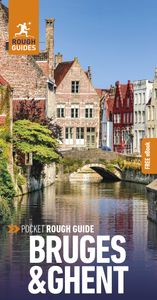
Find even more inspiration here

Planning your own trip? Prepare for your trip
Use Rough Guides' trusted partners for great rates
written by Rough Guides Editors
updated 30.04.2021
Ready to travel and discover Belgium?
Get support from our local experts for stress-free planning & worry-free travels.
- Where to stay
- Travel advice
- Travel Planning Center
- Ticket Changes & Refunds
- Airline Partners
- Check-in & Security
- Delta Sky Club®
- Airport Maps & Locations
- Flight Deals
- Flight Schedules
- Destinations
- Onboard Experience
- Delta Cruises
- Delta Vacations
- Delta Car Rentals
- Delta Stays
- Onboard Wi-Fi
- Delta Trip Protection
- How to Earn Miles
- How to Use Miles
- Buy or Transfer Miles
- Travel with Miles
- SkyMiles Partners & Offers
- SkyMiles Award Deals
- SkyMiles Credit Cards
- SkyMiles Airline Partners
- SkyMiles Program Overview
- How to Get Medallion Status
- Benefits at Each Tier
- News & Updates
- Help Center
- Travel Planning FAQs
- Certificates & eCredits
- Accessible Travel Services
- Child & Infant Travel
- Special Circumstances
- SkyMiles Help
French Air Traffic Controllers Strike
Due to the call for French Air Traffic Controllers Strike, this may impact travel to/from/through the destination(s) listed below. Check flight status frequently for up-to-the-minute information about your flight plans, or get updates sent directly to your mobile device or by email with On-Time Flight Notification.
Future Travel Rebooking Options:
- A fare difference may apply when the waiver is class to class restrictive and the original booking class is not maintained in the rebooked itinerary.
- When rebooked travel occurs after May 02, 2024, a difference in fare may apply.
- If travel is not able to be rescheduled within these guidelines, customers may cancel their reservation and apply any unused value of the ticket toward the purchase of a new ticket for a period of one year from the original ticket issuance. Applicable fare difference may apply for new travel dates. Final travel must be completed by end of ticket validity.
Conditions and Restrictions
Eligibility only for customers with an Original Ticket Issue Date on or before April 22, 2024. Changes to origins and destinations may result in an increase in fare. Any difference in fare between your original ticket and the new ticket will be collected at the time of booking.
- Investor Relations
- Business Travel
- Travel Agents
- Comment/Complaint
- Browser Compatibility
- Accessibility
- Booking Information
- Customer Commitment
- Tarmac Delay Plan
- Sustainability
- Contract of Carriage
- Cookies, Privacy & Security
- Human Trafficking Statement (PDF)
Watch CBS News
California Governor Newsom launches abortion travel ban ad campaign in Alabama
By Dave Pehling
Updated on: April 22, 2024 / 1:41 PM PDT / CBS San Francisco
California Governor Gavin Newsom is taking aim at states considering abortion travel bans with the launch of a new ad campaign.
Newsom's Campaign for Democracy ad is set to air in Alabama starting Monday. The governor tweeted out the ad in a social media post Sunday morning.
Alabama’s abortion ban has no exceptions for rape or incest. Now, Republicans are trying to criminalize young women’s travel to receive abortion care. We cannot let them get away with this. pic.twitter.com/gHbYJYlEXk — Gavin Newsom (@GavinNewsom) April 21, 2024
The text with the video post reads, "Alabama's abortion ban has no exceptions for rape or incest. Now, Republicans are trying to criminalize young women's travel to receive abortion care. We cannot let them get away with this."
The 30-second commercial shows two nervous young women driving in a car passing a sign that reads "State Line 1 Mile."
"We're almost there. You're gonna make it," the passenger tells the woman behind the wheel just before they hear a siren and are pulled over by a state trooper.
"Trump Republicans want to criminalize young Alabama women who travel for reproductive care," a voiceover says as the state trooper walks up to the car.
"Miss, I'm going to need you to step out of the vehicle and take a pregnancy test," the trooper says, waving a test stick in one hand. The next shot shows the driver leaning on the hood of her car as the trooper puts her in handcuffs.
"Stop them by taking action at RightToTravel.org ," the voiceover intones as the ad ends.
Alabama is currently weighing a bill that would make it a crime to help women travel outside the state in order to receive an abortion. The ad is part of a larger effort to combat travel bans across the United States. Newsom was behind a similar ad that ran in Tennessee.
The RightToTravel.org website says that those two states and Oklahoma are considering bills that ban minors from traveling out of state to get an abortion without parental consent, even if it's a case of incest or if there is abuse in the family.
It isn't the first action the governor has taken in the political battle over abortion since the U.S. Supreme Court overturned Roe v. Wade in June of 2022. Two days after the ruling, Newsom partnered with the governors of Oregon and Washington to issue a multi-state commitment promising to defend access to reproductive health care, including abortion and contraceptives.
In September of that year, he launched a billboard campaign in seven of the most restrictive anti-abortion states urging women seeking the procedure to come to California for treatment. He also signed more than a dozen new abortion laws protecting women's reproductive rights and ordered the state to end its contract with Walgreens after the pharmacy giant indicated it would not sell an abortion pill by mail in some conservative-led states .
- Gavin Newsom
- Roe v. Wade
Dave Pehling started his journalism career doing freelance writing about music in the late 1990s, eventually working as a web writer, editor and producer for KTVU.com in 2003. He moved to CBS to work as the station website's managing editor in 2015.
Featured Local Savings
More from cbs news.

Bay Area air travelers welcome new refund rules on canceled flights, lost luggage

Truck driver fatally strikes woman in Fairfield; 2nd pedestrian killed in 2 days
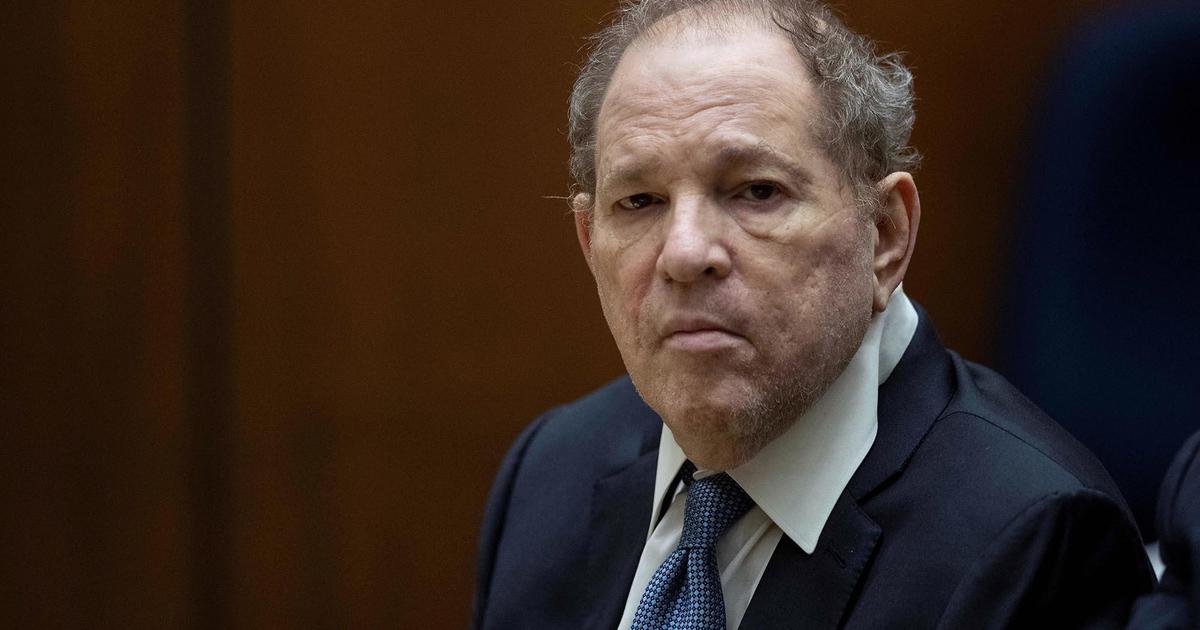
Harvey Weinstein's 2020 rape conviction overturned by New York court
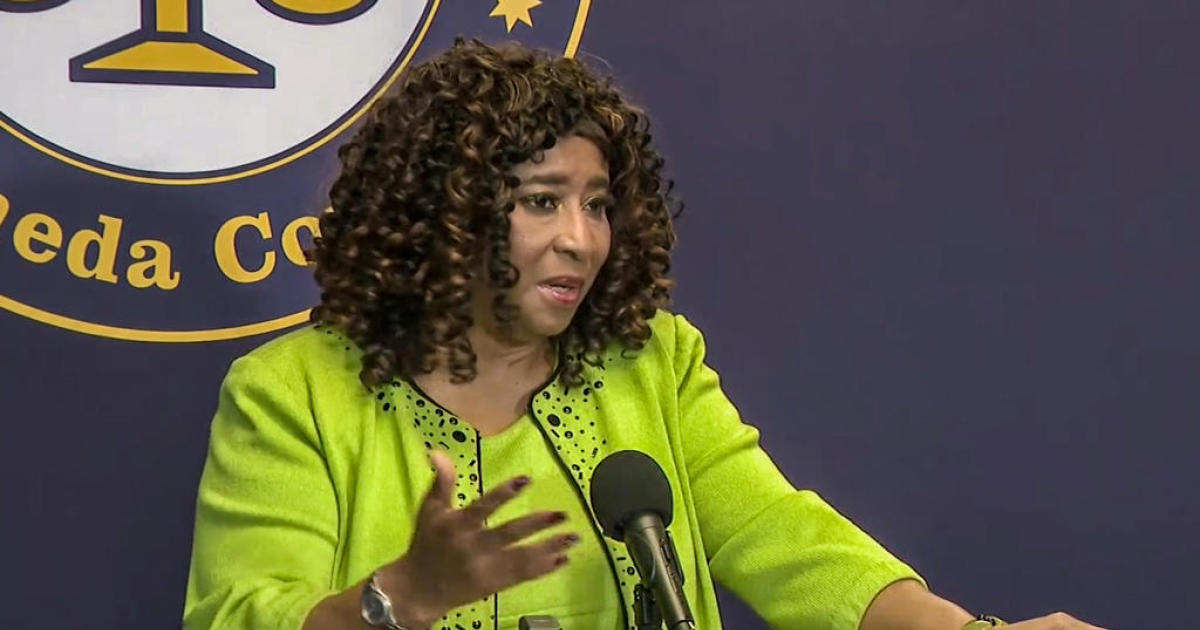
Supporters of Alameda County DA Pamela Price recall renew push for special election
Hazmat crews detonate 'ancient dynamite' found in Utah home after neighbors evacuated
A Utah neighborhood was evacuated and locked down Tuesday night after "ancient dynamite" was found in a home, authorities said.
Capt. Tony Barker of the Unified Fire Authority said at a Tuesday news conference that the health department and Environmental Protection Agency responded to a local resident to investigate "hazardous materials." Upon arrival, they called for the bomb squad and hazmat teams from the UFA.
Barker said Tuesday that explosives were found in a home near 6200 South and 2300 East in Holladay, Utah, and that a "controlled detonation" was planned sometime between Tuesday evening and Wednesday morning. He also said an evacuation plan was in place as well as a shelter-in-place plan for surrounding homes.
Hazmat crews detonated the explosives around 4 a.m. Wednesday , according to KSL-TV, a news outlet based in Salt Lake City.
Barker told local media that no foul play is suspected and that the dynamite was discovered after the owner of the home called a friend to assist them. When the friend arrived, "that's when calls were made," according to Barker.
"It is ancient dynamite. The information we received was that the dynamite was passed down from generation to generation so how old it is, we actually do not know," Barker said at the news conference. Barker also said that while the exact amount of dynamite was not known, it was "a lot" and enough to where there are "two different mitigation events to handle all this dynamite."
When asked where in the house the dynamite was found, such as the basement, garage, or shed, Barker responded, "Yes. All of it, correct … To say he was a collector of fine explosives would not be an understatement." Barker said the amount of dynamite found in the home was "pretty impressive in scope" and that he's never seen anything like it in his career.
According to Barker, the controlled detonation will not impact surrounding homes or structures, but that the home where the dynamite was found will be "uninhabitable" after the detonation.
According to KSL-TV , officials are investigating whether the homeowner will face criminal charges.
The EPA did not immediately respond to a USA TODAY request for comment.
Gabe Hauari is a national trending news reporter at USA TODAY. You can follow him on X @GabeHauari or email him at [email protected].
Tickets & passes
The best way to explore a city without breaking the bank? Buy discount passes. These clever travel companions offer access to the most unique attractions. Not only will you save money, but also time, as all the hard work is done for you. You can just dive into the fantastic offerings carefully selected for visitors seeking added value like yourself!
The Brussels Card
Get the most out of Europe's vibrant capital with the money-saving Brussels Card . In addition to free entry to 49 museums, you also get discounts on attractions, for guided tours, in shops, restaurants and bars. It's convenient too, with a free app and maps. There's even optional extras for public transport and access to the Atomium. All this in just one card!
The Museum Pass
Have you heard of the Museum Pass ? It's the most extensive museum ticket in the country. It gives you a year's access to more than 240 Belgian museums, including 45 in Brussels. For just €59, you can delve into countless fascinating museum collections and discover the best exhibitions of the moment. It's a real godsend for those who love outing!
The Brussels Art Nouveau Pass
Thanks to the Art Nouveau Pass , you'll discover Brussels' Art Nouveau masterpieces for a bargain price! The pass not only makes your visit cheaper, it is also user-friendly. It gives you a key that opens the doors of three Art Nouveau sites of your choice over a 9-month period. What's more, you also get discounts on various guided tours around Brussels and in Art Nouveau shops and cafes .

Tram Experience
Enjoy a unique gastronomic journey through Brussels. Climb aboard the Tram Experience and taste the best of contemporary Belgian cuisine.
Say goodbye to long queues thanks to our ticketing services
Planning a night out? Buy your theatre or concert tickets now! Feeling spontaneous? You’ll find half-price tickets on the day of the event on Last-Minute Tickets. Browse at the agenda or check out the last-minute tickets on offer that day.
Check out what's happening in Brussels right now.

Last-Minute Tickets
Buy your ticket at a 50% discount.


IMAGES
VIDEO
COMMENTS
Bussels is located in the heart of Belgium and is the country's capital and largest city. Not only is it an administrative, commercial, and financial hub, it...
For sure, travelers to Brussels, the capital of Belgium, won't lack for things to do and see. The city is a veritable smorgasbord of sights and sounds. It ha...
Join me on a walking & sightseeing tour in the beautiful city of Brussels, the capital of Belgium and the European Union.Video chapters:0:00 Intro1:12 Grand ...
The Mont des Arts is the junction between uptown and downtown Brussels and offers a delightful view in all seasons. Below, you can sit in the sumptuous gardens that lead to the statue of Albert I. The "knightly king" faces his love, Queen Elizabeth, whose statue stands on the small Place de l'Albertine on the other side of the road.The Mont des Arts is home to the KBR, the country's main ...
Drink a beer in a brown cafe. Cramped seating, smoke-darkened wooden panels, and an extensive (but tasteful) beer list are defining features of classic Belgian "brown cafes.". Tables packed with friends laughing into the early hours are proof: having a beer in a brown cafe is one of the best things to do in Brussels at night.
The best way to easily discover Brussels! Free access to 49 Brussels museums. Discounts at attractions, shops, restaurants, bars and guided tours. Free information guide, city map and museum map. Optional: unlimited access to public transport, hop on hop off buses Tootbus and entry to the Atomium. Read more about the Brussels Card.
Europe's newest night train will link these grandiose cities. Feb 29, 2024 • 2 min read. Passengers can travel from Brussels to Prague (and even link up with London) on a cross-border night train service. in partnership with getyourguide.
Belgium: Bruges and Brussels. In this program, we start in Bruges to check into a medieval hospital, savor the exquisite art of Memling, climb a bell tower to get up close and fortissimo at a carillon concert, and sample fresh frites and the world's tastiest chocolate. Then we ride the train to Brussels, where we stroll Europe's finest square ...
4. Use the metro, trams and buses to explore the city. The STIB/MIVB runs almost all of the public transport in Brussels and it's easy to get across the city, although the further from the center you go, the more difficult it gets. You'll find ticket vending machines in the metro and main tram or bus stations.
From Brussels Airport, it's a thirty-minute drive or fifteen-minute metro ride into the city center. From South Charleroi you can take a prearranged shuttle bus, which will take you right to the city center train station and takes a little over an hour. There are also other bus and metro options to get from the airport to the city center.
Highlights. Brussels is rich in history, architecture, gastronomy, culture and so much more! Warm, welcoming and quirky, Brussels is a bustling city where there's always something going on. Visit us to discover hidden gems and meet people with hearts as big as this vibrant city.
If you're planning a trip to Brussels the first things you'll want to read about are the city's top attractions, where to stay, and the general prices of hotels and restaurants, among other useful information.To make it as easy as possible for you, Civitatis offers you this travel guide to Brussels and the country's nearby cities so you make the most of your holidays.
Brussels travel blog: Best places to visit and top things to do in Brussels Grand-Place de Bruxelles Just 5 minutes walk from the central station, La Grand Place is known as a cultural center of Brussels with lots of shops, restaurants, cafes or museums, recognized by UNESCO as a cultural heritage world in 1998.
Brussels. Six hundred years ago, Brussels was just a nice place to stop and buy a waffle on the way to Bruges. Today it's a city of one million people, the capital of Belgium, the headquarters of NATO, and the seat of the European Union. The Bruxellois are cultured and genteel — yet you may notice an impish sparkle and joie de vivre, as ...
Brussels, being the center of the European Union, is not only the capital of Belgium, but of whole Europe. The mediaval city core and square determine the at...
Brussels Travel Costs. Hostel prices - For a hostel dorm, prices range from 31-39 EUR per night for a dorm with 4-6 beds, while rooms with 8 beds or more cost 27-30 EUR. For a private room, expect to pay 95-155 EUR per night. Free Wi-Fi is standard and most hostels have self-catering facilities.
3-Day Brussels Itinerary Overview. Day 1: The Grand Place | Brussels City Museum | Royal Gallery of Saint Hubert | Mont Des Arts | Mannekin Pis | Choco Story | Brussels Beer Tour. Day 2: Atomium | Mini Europe | Musical Instruments Museum | Royal Palace of Brussels | Museum of Fine Arts | Notre Dame Du Sablon.
Visit important landmarks and museums on the way with this self drive itinerary, with enough time to explore cities such as Brussels and Rotterdam on the way. view trip ⤍. 10 days / from5564 USD. Taste of Three - Belgium, France and Switzerland. Start your journey in Belgium and explore Brussels, Ghent and Bruges.
European Union officials have raided the offices of a Chinese company as part of a probe into subsidies, exposing rising tensions between the bloc and one of its biggest trading partners.
Passengers on board a Spirit Airline flight headed to New Jersey witnessed an unexpected and strange sight midair when they watched a mystery liquid flow down the aisle, seeping from one of the ...
We recorded this 4k ultra hd video during our trip to Brussels (Bruxelles), Belgium on August 2022. With a population of 176,545 (in 2017), Brussels is the l...
Due to the call for French Air Traffic Controllers Strike, this may impact travel to/from/through the destination(s) listed below. Check flight status frequently for up-to-the-minute information about your flight plans, or get updates sent directly to your mobile device or by email with On-Time Flight Notification.
A Boeing 747 operated by Lufthansa Airlines ran into a couple of bumps as it landed at LAX Airport in Los Angeles. Video footage of the landing, captured by Airlines Videos Live, shows the ...
BRUPASS 10 JOURNEYS - Price: €16.80. BRUPASS 1 DAY - Price: €8.40. GO2CITY 1 JOURNEY - At the airport, buy your ticket before you get on the bus at one of the GO ticket machines. There are ticket machines in the airport and outside at the bus stop - Price on the contactless validating machine: €7.00 - Price at a sales point: €7.50.
California Governor Gavin Newsom is taking aim at states considering abortion travel bans with the launch of a new ad campaign. Newsom's Campaign for Democracy ad is set to air in Alabama starting ...
There are so many fun things to do in Brussels like the Atomium, people-watching in the Grand Place, and exploring the stunning Royal Palace! I hope you enjo...
Hazmat crews detonated the explosives around 4 a.m. Wednesday, according to KSL-TV, a news outlet based in Salt Lake City.. Barker told local media that no foul play is suspected and that the ...
Brussels Card. Order the Brussels Card online now and get free access to the capital's main tourist attractions. Explore the options and travel for free on public transport or the Hop-on Hop-off tourist buses. From €32. Buy now.
Wandering through Sfer Ik is an experience that is part museum, part art gallery and definitely a topsy turvy encounter.
Follow us to the most beautiful places in Brussels! 🇧🇪Have an amazing trip at home. 🏠👉In this video, we'll cover more than Top 10 best places in Brussels...